|
|
|
|
|
Scroll down, or click in the box and start typing your word.
|
|
|
|
?Click the 'Search' button to search Keystone's Media Library
|
?Click the 'Hold' button to add checked items to hold list
|
?Click the 'View' button to view your hold list
|
?Click the 'Order' button to order items that are on the hold list
|
|
|
|
|
|
KM 12966KM 12966 16 Habits of Mind: First Grade
Grade Lvl: P Author:
Length: 0 Copyright: 2018
The 16 Habits of Mind by Wonder Grove Learn includes Teacher Notebook and DVD of Animations to teach young children critical thinking and problem solving skills using engaging videos and activities. Designed for students in Grade One and includes: 16 Instructional Animations, 128 Printable Extension Lessons. IL Grade 1. The 16 Habits of Mind include: Persisting Managing Impulsivity Listening with Understanding and Empathy Thinking Flexibly Thinking about your Thinking (Metacognition) Striving for Accuracy Questioning and Problem Posing Applying Past Knowledge to New Situations Thinking and Communicating with Clarity and Precision Gathering Data through All Senses Creating, Imagining, and Innovating Responding with Wonderment and Awe Taking Responsible Risks Finding Humor Thinking Interdependently Remaining Open to Continuous Learning |
16 Habits of Mind: First Grade P
 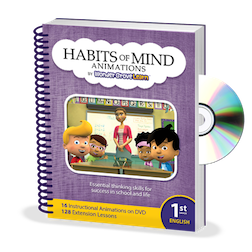
| |
|
KM 12965KM 12965 16 Habits of Mind: PreK-Kindergarten
Grade Lvl: K Author:
Length: 0 Copyright: 2018
The 16 Habits of Mind by Wonder Grove Learn includes Teacher Notebook and DVD of Animations to teach young children critical thinking and problem solving skills using engaging videos and activities. Designed for students in Pre-K and Kindergarten and includes: 16 Instructional Animations, 128 Printable Extension Lessons. IL Pres-K. The 16 Habits of Mind include: Persisting Managing Impulsivity Listening with Understanding and Empathy Thinking Flexibly Thinking about your Thinking (Metacognition) Striving for Accuracy Questioning and Problem Posing Applying Past Knowledge to New Situations Thinking and Communicating with Clarity and Precision Gathering Data through All Senses Creating, Imagining, and Innovating Responding with Wonderment and Awe Taking Responsible Risks Finding Humor Thinking Interdependently Remaining Open to Continuous Learning |
16 Habits of Mind: PreK-Kindergarten K
 
| |
|
KM 12967KM 12967 16 Habits of Mind: Second Grade
Grade Lvl: P Author:
Length: 0 Copyright: 2018
The 16 Habits of Mind by Wonder Grove Learn includes Teacher Notebook and DVD of Animations to teach young children critical thinking and problem solving skills using engaging videos and activities. Designed for students in Grade Two and includes: 16 Instructional Animations, 128 Printable Extension Lessons. IL Grade 2. The 16 Habits of Mind include: Persisting Managing Impulsivity Listening with Understanding and Empathy Thinking Flexibly Thinking about your Thinking (Metacognition) Striving for Accuracy Questioning and Problem Posing Applying Past Knowledge to New Situations Thinking and Communicating with Clarity and Precision Gathering Data through All Senses Creating, Imagining, and Innovating Responding with Wonderment and Awe Taking Responsible Risks Finding Humor Thinking Interdependently Remaining Open to Continuous Learning |
16 Habits of Mind: Second Grade P
 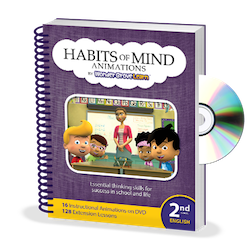
| |
|
B 97169B 97169 180 DAYS: Two Teachers and the Quest to Engage and Empower Adolescents
Grade Lvl: T Author: Gallagher, Kelly / Kittle, Penny
Length: 233 Copyright: 2018
Kelly Gallagher and Penny Kittle mapped out a year of engaging literacy practices aligned to their core beliefs about what matters most. They share their insights on managing time tasks and offer teaching strategies for engaging students in both whole class and independent work. Two teachers. Two classrooms. One school year. 180 Days represents the collaboration of two master teachers-Kelly Gallagher and Penny Kittle-over an entire school year: planning, teaching, and reflecting within their own and each other's classrooms in California and New Hampshire. Inspired by a teacher's question, "How do you fit it all in?" they identified and prioritized the daily, essential, belief-based practices that are worth spending time on. They asked, "Who will these students be as readers and writers after a year under our care?" What we make time for matters: what we plan, how we revise our plans while teaching, and how we reflect and decide what's next. The decision-making in the moment is the most essential work of teaching, and it's the ongoing study of the adolescents in front of us that has the greatest impact on our thinking. With both the demands of time and the complexity of diverse students in mind, Kelly and Penny mapped out a year of engaging literacy practices aligned to their core beliefs about what matters most. They share their insights on managing time and tasks and offer teaching strategies for engaging students in both whole class and independent work. Video clips of Kelly and Penny teaching in each other's classrooms bring this year to life and show you what a steadfast commitment to belief-based instruction looks like in action. 180 Days. Make every moment matter. Teach fearlessly. Empower all students to live literate lives. |
180 DAYS: Two Teachers and the Quest to Engage and Empower Adolescents T
 
| |
|
B 97430B 97430 21st Century School Library: A Model for Innovative Teaching & Learning
Grade Lvl: T Author: Tahmaseb, Ryan Bani
Length: 195 Copyright: 2021
Takes an in-depth look at the paradigm-shifting work that school libraries are doing to advance student learning, professional development, and school-wide engagement. It explains how library-led, forward-thinking initiatives can guide all educators: teachers and administrators alike toward transformative educational practices. It is an inspiring survey of 21st century school libraries whose guiding principles also serve as a blueprint for innovation in K-12 education. School library programs and all the educators associated with them can offer a compelling vision for the future of K-12 education. This book is a roadmap for how to make this vision a reality. |
21st Century School Library: A Model for Innovative Teaching & Learning T
 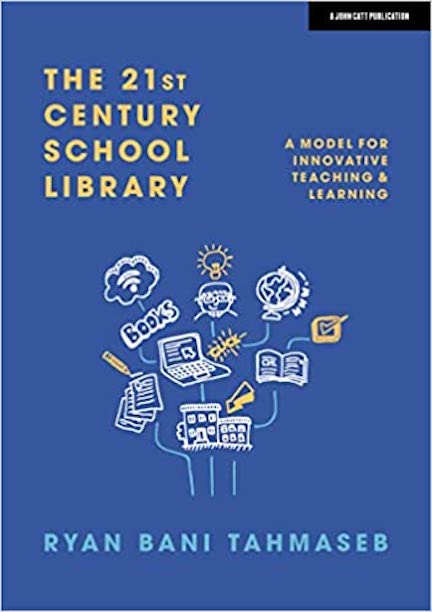
| |
|
B 97417B 97417 5 Kinds of Nonfiction: Enriching Reading and Writing Instruction with Children's Books
Grade Lvl: T Author: Stewart, Melissa / Correia, Marlene
Length: 224 Copyright: 2021
This book introduces a new way to sort, study and recognize nonfiction through the authors' categorization system of its five types--active, browsable, traditional, expository literature and narrative. After introducing the concept, the authors discuss ways this system can improve instruction, help students, teachers and librarians understand nonfiction better, and ultimately create stronger readers and writers. With more than 150 exemplary nonfiction book recommendations and Stewart and Correia’s extensive knowledge of literacy instruction, 5 Kinds of Nonfiction will elevate understanding of nonfiction. |
5 Kinds of Nonfiction: Enriching Reading and Writing Instruction with Child T
 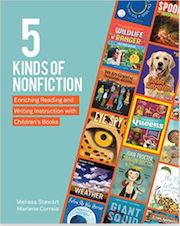
| |
|
B 97377B 97377 50 Strategies to Boost Cognitive Engagement: Creating a Thinking Culture in the Classroom
Grade Lvl: T Author: Stobaugh, Rebecca
Length: 158 Copyright: 2019
The author shares how to build a culture of thinking that emphasizes essential skills, from critical thinking and problem solving to teamwork and creativity. Text offers fifty teacher-tested instructional strategies for nurturing students' cognitive abilities across the full range of thinking levels. Contents include: Introduction Chapter 1: Understanding Cognitive Engagement and the Thinking-Based Classroom Chapter 2: Applying a Taxonomy to the Thinking in Your Classroom Chapter 3: Developing Critical Thinking Skills and Fostering Engagement Chapter 4: Implementing Strategies for Understand-Level Content Chapter 5: Implementing Strategies for Analyze-Level Content Chapter 6: Implementing Strategies for Evaluate-Level Content Chapter 7: Implementing Strategies for Create-Level Content Chapter 8: Cementing a Culture of Thinking |
50 Strategies to Boost Cognitive Engagement: Creating a Thinking Culture in T
 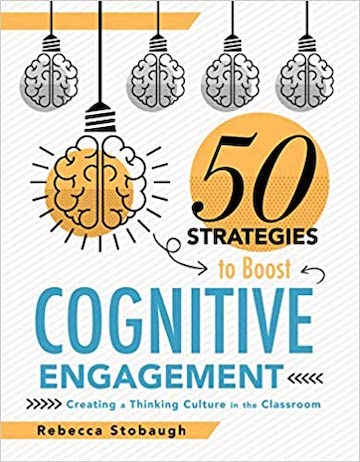
| |
|
B 97579B 97579 7 Mighty Moves
Grade Lvl: T Author: Kemeny, Lindsay
Length: 160 Copyright: 2023
Subtitle: Research-Backed, Classroom-Tested Strategies to Ensure K-to-3 Reading Success. In this no-nonsense guide, primary reading expert and classroom teacher Lindsay Kemeny shares seven ways K–3 teachers can modify what they are currently doing to transform their reading instruction. Each chapter focuses on a critical area of foundational reading–from the most efficient ways to teach phonemic awareness and phonics to the most effective ways to boost comprehension. Readers will find the literacy routines and lessons Kemeny uses every day with her students detailed in the book, along with links to video demonstrations showing how she puts them into practice. The Science of Reading in Practice. |
7 Mighty Moves T
 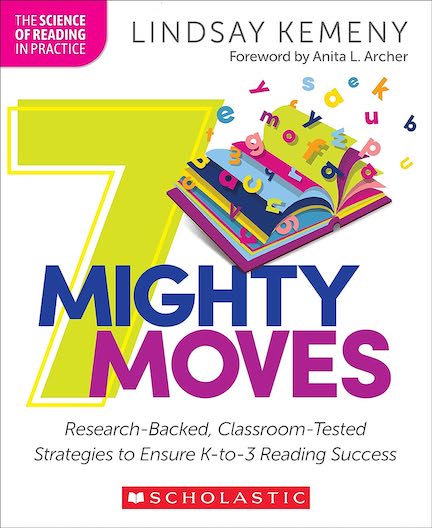
| |
|
KM 13252KM 13252 Addition and Subtraction SOAR Kit
Grade Lvl: KPI Author:
Length: 0 Copyright: 2015
The Supporting Ongoing Achievement Responsively (SOAR) learning series was designed to identify and support students' mathematical understanding that is in need of further inquiry and development. SOAR Survey Tools offer teacher support in 3 parts: a set of survey questions, a monitoring checklist, and tiered survey summary. SOAR Activities are intervention activities designed and sequenced to support students across tiers of intervention. Each activity is aligned to the survey tool and designed to support student learning in areas of need. Each activity outlines mathematical foci, identifies the essential mathematical understandings, and provides questions to target understandings. Contact Keystone AEA Math Consultants for further information and implementation. Mathematics Operations and Algebraic Thinking: Addition and Subtraction. Three week loan period. IL 1-5. |
Addition and Subtraction SOAR Kit KPI
 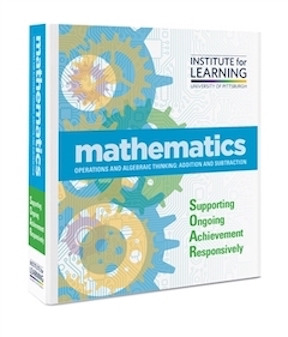
| |
|
B 97592B 97592 AI Classroom: The Ultimate Guide to Artificial Intelligence in Education
Grade Lvl: T Author: Fitzpatrick, Dan
Length: 364 Copyright: 2023
Provides practical strategies for incorporating AI tools into your teaching practices, while exploring the potential of AI to transform traditional models of teaching and learning. Discover how AI can help you create inclusive and accessible learning environments, personalize learning, reach more students, and get your time back. |
AI Classroom: The Ultimate Guide to Artificial Intelligence in Education T
 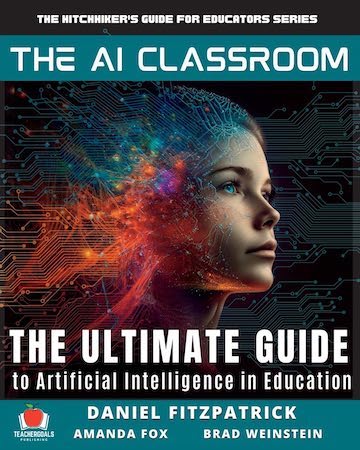
| |
|
B 97576B 97576 AI for Educators
Grade Lvl: T Author: Miller, Matt
Length: 123 Copyright: 2023
Subtitle: Learning Strategies, Teacher Efficiencies, and a Vision for an Artificial Intelligence Future. Artificial intelligence may change the world more than the iPhone, the internet, or even electricity. It’s bound to change education. (It already has.) AI for Educators is a readable guide for educators. Text translates AI through a teacher's lens, provides practical ideas you can use in the classroom right away and it unlocks powerful ways to streamline teaching to empower learning. |
AI for Educators T
 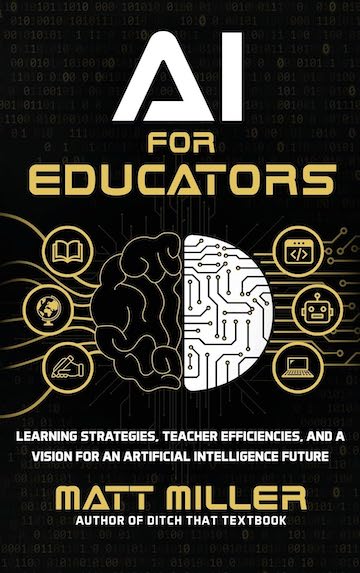
| |
|
B 97064B 97064 Algebra Teacher's Activities Kit: 150 Activities that Support Algebra in the Common Core Math Standards, Grades 6-12 2nd Edition
Grade Lvl: T Author: Muschla, Judith A / Muschla, Gary Robert
Length: 310 Copyright: 2016
Helps you bring the standards into your algebra classroom with a range of engaging activities that reinforce fundamental algebra skills. This second second edition is formatted for easy implementation, with teaching notes and answers followed by reproducibles for activities covering the algebra standards for grades 6 through 12. Coverage includes whole numbers, variables, equations, inequalities, graphing, polynomials, factoring, logarithmic functions, statistics, and more, and gives you the material you need to reach students of various abilities and learning styles. Many of these activities are self-correcting, adding interest for students and saving you time. This book provides dozens of activities that: Directly address each Common Core algebra standards Engage students and get them excited about math Are tailored to a diverse range of levels and abilities Reinforce fundamental skills and demonstrate everyday relevance |
Algebra Teacher's Activities Kit: 150 Activities that Support Algebra in th T
 
| |
|
B 96949B 96949 Argument-Driven Inquiry in Biology: Lab Investigations for Grades 9-12
Grade Lvl: T Author: Sampson, Victor / Enderle, Patrick
Length: 418 Copyright: 2014
This book will provide you with both the information and instructional materials you need to start using this method right away. Argument-Driven Inquiry in Biology is a one-stop source of expertise, advice, and investigations. The book is broken into two basic parts: 1. An introduction to the stages of argument-driven inquiry from question identification, data analysis, and argument development and evaluation to double-blind peer review and report revision. 2. A well-organized series of 27 field-tested labs that cover molecules and organisms, ecosystems, heredity, and biological evolution. |
Argument-Driven Inquiry in Biology: Lab Investigations for Grades 9-12 T
 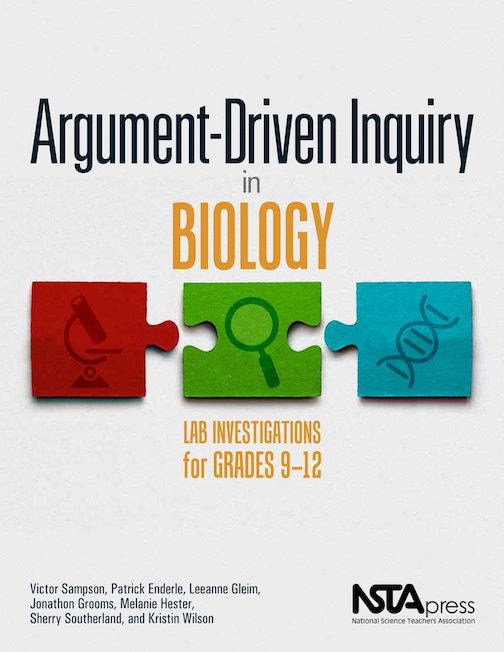
| |
|
B 96948B 96948 Argument-Driven Inquiry in Chemistry: Lab Investigations for Grades 9-12
Grade Lvl: T Author: Sampson, Victor / Carafano, Peter
Length: 530 Copyright: 2014
Investigations in this book give high school students the opportunity to work the way scientists do. They learn to identify questions, develop models, collect and analyze data, generate arguments, and critique and revise their reports. Thirty field-tested labs cover a broad range of topics related to chemical reactions and matter's structure and properties. |
Argument-Driven Inquiry in Chemistry: Lab Investigations for Grades 9-12 T
 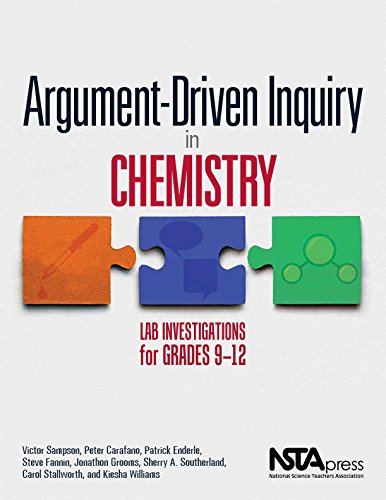
| |
|
B 96974B 96974 Argument-Driven Inquiry in Earth and Space Science: Lab Investigations for Grades 6-10
Grade Lvl: T Author: Sampson, Victor / Murphy, Ashley
Length: 600 Copyright: 2018
Provides 23 field-tested science labs that cover the universe, Earth, and weather. It also helps you make the instructional shift to ADI. This innovative approach to inquiry prompts students to use argument to construct, support, and evaluate scientific claims. The book starts with guidance on how to use ADI. Then it provides labs that cover five disciplinary core ideas in Earth and space science: Earth's place in the universe, the history of Earth, Earth s systems, weather and climate, and Earth and human activity. Ideas will encourage students to explore important content and discover scientific practices. They can investigate everything from how the seasons work to what causes geological formations and even consider where NASA should send a space probe next to look for signs of life. Professional resource. NGSS. |
Argument-Driven Inquiry in Earth and Space Science: Lab Investigations for T
 
| |
|
B 97308B 97308 Argument-Driven Inquiry in Fourth-Grade Science: Three Dimensional Investigations
Grade Lvl: T Author: Sampson, Victor / Murphy, Ashley
Length: 677 Copyright: 2019
Argument-Driven Inquiry in Fourth-Grade Science: Three Dimensional Investigations is a one-stop source of expertise, advice, and investigations. It's designed to help your fourth graders work the way scientists do while integrating literacy and math at the same time. Argument-Driven Inquiry in Fourth-Grade Science is divided into two basic parts: 1. An introduction to the stages of ADI—from question identification, data analysis, and argument development to evaluating and revising ideas. 2. A well-organized series of 15 field-tested investigations designed to be much more authentic for instruction than traditional activities. |
Argument-Driven Inquiry in Fourth-Grade Science: Three Dimensional Investig T
 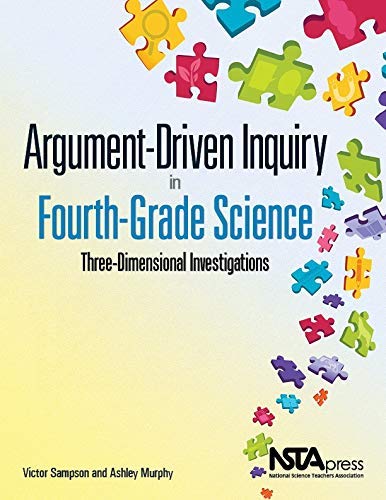
| |
|
B 96947B 96947 Argument-Driven Inquiry in Physics, Volume 1: Mechanics Lab Investigations for Grades 9-12
Grade Lvl: T Author: Sampson, Victor / Hutner, Todd L
Length: 564 Copyright: 2017
This book helps you build your students science proficiency. It makes labs more authentic by teaching physics students to work the way scientists do by identifying questions, developing models, collecting and analyzing data, generating arguments, and critiquing and revising reports. Argument-Driven Inquiry in Physics, Volume 1 focuses on mechanics and has two parts. The first part describes the ADI instructional model and the components of ADI lab investigations. The second part provides 23 field-tested labs covering a wide variety of topics related to forces and interactions, energy, work, and power. |
Argument-Driven Inquiry in Physics, Volume 1: Mechanics Lab Investigations T
 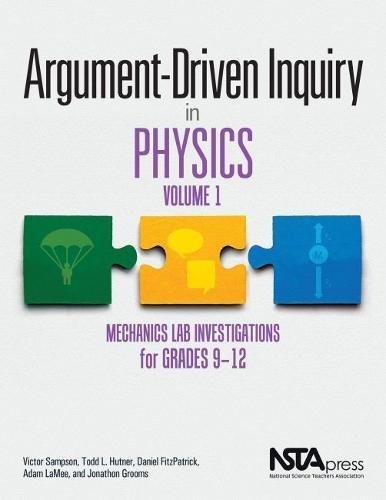
| |
|
B 97306B 97306 Argument-Driven Inquiry in Physics, Volume 2: Electricity and Magnetism Lab Investigations for Grades 9 12
Grade Lvl: T Author: Hutner, Todd L / Sampson, Victor
Length: 450 Copyright: 2020
Interested in a three-dimensional approach to helping your high school physics students learn the practices of science, including constructing explanations and engaging in argument from evidence? By using argument-driven inquiry (ADI) for high school physics lab instruction, you can do just that. Argument-Driven Inquiry in Physics, Volume 2 provides the information and instructional materials you need to start using this method right away for electricity and magnetism investigations. The book is a one-stop source of expertise, advice, and lessons to help physics students work the way scientists do. Also refer to Volume 1 (#96947). |
Argument-Driven Inquiry in Physics, Volume 2: Electricity and Magnetism Lab T
 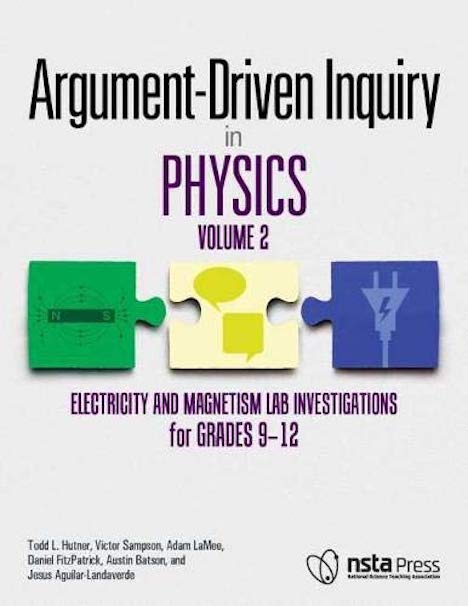
| |
|
B 97307B 97307 Argument-Driven Inquiry in Third-Grade Science: Three Dimensional Investigations
Grade Lvl: T Author: Sampson, Victor / Murphy, Ashley
Length: 584 Copyright: 2019
Argument-Driven Inquiry in Third-Grade Science: Three Dimensional Investigations is designed to help third graders work the way scientists do while integrating literacy and math at the same time. Argument-Driven Inquiry in Third-Grade Science is divided into two basic parts: ... Using the Student Workbook, your class will explore important content and discover scientific practices. |
Argument-Driven Inquiry in Third-Grade Science: Three Dimensional Investiga T
 
| |
|
B 97336B 97336 Artificial Intelligence Basics: a Workbook for Students
Grade Lvl: T Author: ReadyAl
Length: 61 Copyright: 2020
An introduction to the exciting world of artificial intelligence (AI). With the Artificial Intelligence Basics: a Workbook for Students, students will learn about a wide range of topics in AI including: speech recognition, path planning, to societal impacts of AI from scratch, all the while enjoying fun hands-on activities! Learning opportunities include: Machine Learning, Path Planning, Representation & Reasoning, Speech Recognition, Human-AI Interaction, Societal Impacts of AI and more! The workbook will walk you through training machine learning models, learning to code a virtual robot, and thinking deeply about the impact of AI. With fun activities, this Workbook will make these topics relatable and memorable. Teacher resource. Preview. |
Artificial Intelligence Basics: a Workbook for Students T
 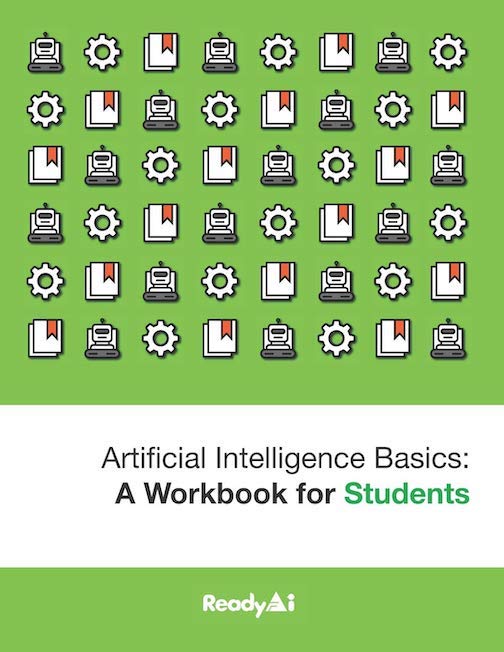
| |
|
B 97017B 97017 Autism in the School-Aged Child: Expanding Behavioral Strategies and Promoting Success
Grade Lvl: T Author: Schmidt, Carol / Heybryrne, Beth
Length: 174 Copyright: 2004
Autism in the School-Aged Child is a practical book of strategies designed for both parents and educators. It brings the established principles of Applied Behavioral Analysis (ABA) to the natural settings of the classroom and the home. In this book you will find specific guidelines for the common struggles that affect high-functioning children with autism, such as: Improving attention Developing participation Enhancing socialization Managing negative behaviors Teaching frustration tolerance Addressing eating and sleep issues Developing useful interests Structuring the home environment Maximizing sibling interactions In addition, you will find instruction on the development and use of expanded behavioral intervention, including: Creating target behavior checklists Addressing discipline issues Implementing a token economy Reading comprehension strategies Coaching the teacher Developing independence *This easy-to-use instructional manual is filled with practical examples and reproducible checklists that provide immediate access to the tools to develop self-regulation and independence. |
Autism in the School-Aged Child: Expanding Behavioral Strategies and Promot T
 
| |
|
KM 13406KM 13406 Autism Line Drawing Based Work System (Blue)
Grade Lvl: T Author:
Length: 0 Copyright: 2021
This kit contains examples of line drawing based, portable work systems and tasks. Included in this kit are samples of line drawing based communication systems, routines, and tasks. These are generally used with non-verbal/visually based students focusing on academic, transition skills, and vocational skills for students. This kit is for preview only. Previewing contents of the kit is to provide teachers with ideas to use with students for tasks and routines. Consumable materials are not intended to be taken by individuals checking out the kit. Kit contents include: Multiple line drawing based tasks Binder filled with multiple line drawings for use within the classroom Academic materials to use for students Portable line based schedule Communication book Routines for daily activities |
Autism Line Drawing Based Work System (Blue) T
 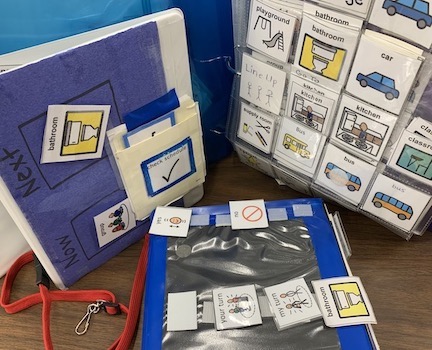
| |
|
KM 13405KM 13405 Autism Object Based Work System (Red)
Grade Lvl: T Author:
Length: 0 Copyright: 2021
This kit contains examples of objects that would be used for schedules, routines and a communication system for students. This would be used for students who are beginning level communicators. This kit is for preview only. Previewing contents of the kit is to provide teachers with ideas to use with students for tasks and routines. Consumable materials are not intended to be taken by individuals checking out the kit. Kit contents include: Object bathroom routine strip Object Now schedule Trays for matching schedule cards Object communication system for gym |
Autism Object Based Work System (Red) T
 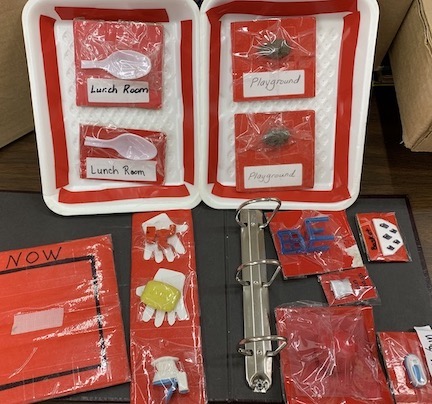
| |
|
KM 13407KM 13407 Autism Picture Based Work System (Green)
Grade Lvl: T Author:
Length: 0 Copyright: 2021
This kit contains examples of picture based, portable work systems and tasks. Included in this kit are samples of picture based communication systems, routines, and tasks. These are generally used with non-verbal/visually based students focusing on academic, transition soft skills, and vocational skills for students. This kit is for preview only. Previewing contents of the kit is to provide teachers with ideas to use with students for tasks and routines. Consumable materials are not intended to be taken by individuals checking out the kit. Kit contents includes: Multiple picture based tasks Binder filled with multiple pictures for use within the classroom Academic materials to use for students Portable picture based schedule Communication book Routines for daily activities |
Autism Picture Based Work System (Green) T
 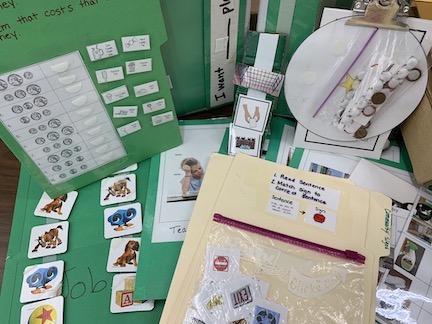
| |
|
KM 13404KM 13404 Autism Text Based Work System (Purple)
Grade Lvl: T Author:
Length: 0 Copyright: 2021
This kit contains examples of text based, fixed, work systems and tasks. Included in this kit are samples of text based tasks to be used with high level students focusing on academic, transition soft skills, and vocational skills for students in the middle school to high school levels. This kit is for preview only. Previewing contents of the kit is to provide teachers with ideas to use with students for tasks and routines. Consumable materials are not intended to be taken by individuals checking out the kit. Kit contents includes: Multiple text based tasks Folders to use for collaborative and independent work Academic materials to use for students Labels for areas in the classroom Routines for daily activities |
Autism Text Based Work System (Purple) T
 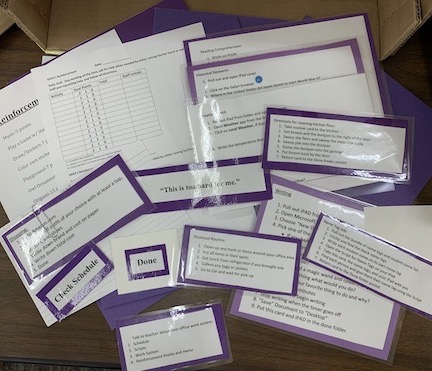
| |
|
KM 13408KM 13408 Autism Text Based Work System (Yellow)
Grade Lvl: T Author:
Length: 0 Copyright: 2021
This kit contains examples of text based, portable work systems and tasks. Included in this kit are samples of text based tasks to be used with middle and high level students focusing on academic, transition soft skills, and vocational skills for students. This kit is for preview only. Previewing contents of the kit is to provide teachers with ideas to use with students for tasks and routines. Consumable materials are not intended to be taken by individuals checking out the kit. Kit contents includes: Multiple text based tasks Binder with folders to use for collaborative and independent work Academic materials to use for students Labels for areas in the classroom Routines for daily activities |
Autism Text Based Work System (Yellow) T
 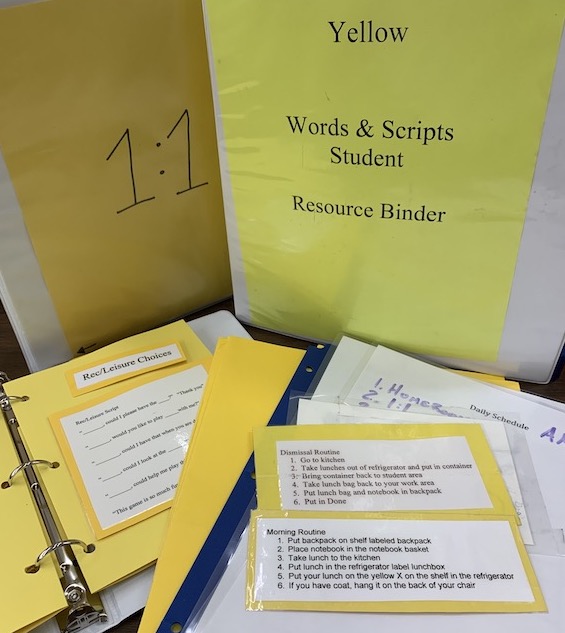
| |
|
B 97179B 97179 Autonomous Learner Model Resource Book
Grade Lvl: T Author: Betts, George / Carey, Robin
Length: 288 Copyright: 2017
The Autonomous Learner Model Resource Book includes activities and strategies to support the development of autonomous learners. More than 80 activities are included, all geared to the emotional, social, cognitive, and physical development of students. Teachers may use these activities and strategies with the entire class, small groups, or with individuals who are ready to be independent, self-directed, lifelong learners. These learners have the passions, abilities, skills, and attitudes to go beyond the regular curriculum and take control of their own educational pathways. Field-tested strategies and activities in the book include Find Someone Who, Teacher and Learner Questionnaires, Lifelong Notebook, Time Capsule, and Night of the Notables. Teaching methods and materials. Curricula. |
Autonomous Learner Model Resource Book T
 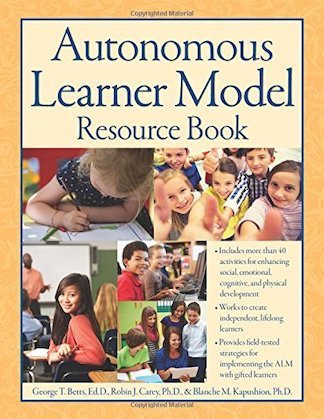
| |
|
B 97151B 97151 Becoming the Math Teacher You Wish You'd Had: Ideas and Strategies from Vibrant Classrooms
Grade Lvl: T Author: Zager, Tracy
Length: 376 Copyright: 2017
This professional book presents instructional techniques to dispel the common misconception of mathematics as a black-and-white discipline and of being good at math as entailing ease, speed, and correctness. The text provides teachers with strategies to stimulate students to connect ideas; rich tasks that encourage students to wonder, generalize, conjecture, and persevere; and routines to teach students how to collaborate. Chapters: Breaking the cycle -- What do mathematicians do? -- Mathematicians take risks -- Mathematicians make mistakes -- Mathematicians are precise -- Mathematicians rise to a challenge -- Mathematicians ask questions -- Mathematicians connect ideas -- Mathematicians use intuition -- Mathematicians reason -- Mathematicians prove -- Mathematicians work together and alone -- "Favorable conditions" for all math students. |
Becoming the Math Teacher You Wish You'd Had: Ideas and Strategies from Vib T
 
| |
|
B 96941B 96941 Best Class You Never Taught: How Spider Web Discussion Can Turn Students into Learning Leaders
Grade Lvl: T Author: Wiggins, Alexis
Length: 160 Copyright: 2017
The Spider Web Discussion is a simple technique that puts this kind of class within every teacher's reach. The name comes from the weblike diagram the observer makes to record interactions as students actively participate in the discussion, lead and support one another's learning, and build community. It's proven to work across all subject areas and with all ages, and you only need a little know-how, a rubric, and paper and pencil to get started. As students practice Spider Web Discussion, they become stronger communicators, more empathetic teammates, better problem solvers, and more independent learners—college and career ready skills that serve them well in the classroom and beyond. |
Best Class You Never Taught: How Spider Web Discussion Can Turn Students in T
 
| |
|
KM 12841KM 12841 Big Ideas of Early Mathematics: What Teachers of Young Children Need to Know
Grade Lvl: T Author:
Length: 196 Copyright: 2014
Get a practical look at the foundational concepts and skills of early mathematics, and see how to implement them in their early childhood classrooms. Presents the skills educators need to organize for mathematics teaching and learning during the early years. For teachers of children ages three through six, the book provides foundations for further mathematics learning and helps facilitate long-term mathematical understanding. The Enhanced Pearson eText features embedded video. Contains software DVD. |
Big Ideas of Early Mathematics: What Teachers of Young Children Need to Kno T
 
| |
|
KM 13534KM 13534 Blended Learning in Grades 4-12 + On-Your-Feet Guide to Blended Learning: Station Rotation Bundle
Grade Lvl: T Author: Tucker, Catlin R
Length: 0 Copyright: 2019
Leveraging the power of technology to create student-centered classrooms. This professional kit offers professional book Blended Learning in Grades 4-12 and On-Your-Feet Guides (OYFGs). The OYFGs is the ultimate "cheat sheet" to implement effective change in your classroom while in the moment of teaching. Designed for accessibility, and providing step-by-step guidance, the OYFGs are written by experts who take research-based practices and make them doable for the busy teacher. Use the OYFGs when you know the "what" but need help with the "how, As a quick reference to support a practice you learned in a PD workshop or book, To learn how to implement foundational practices, and When you want to help your students learn a specific strategy, routine, or approach, but aren’t sure how to do it yourself. |
Blended Learning in Grades 4-12 + On-Your-Feet Guide to Blended Learning: S T
 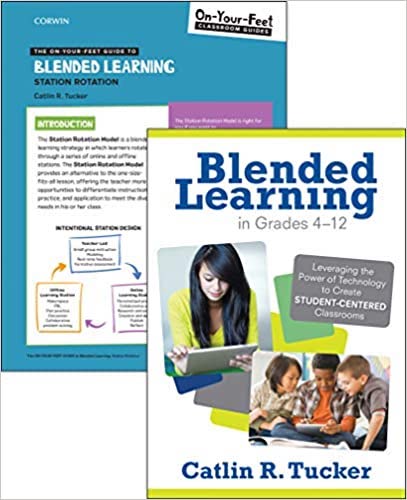
| |
|
B 97358B 97358 Blended Learning with Google: Your Guide to Dynamic Teaching and Learning
Grade Lvl: T Author: Bell, Kasey
Length: 139 Copyright: 2020
Shows you how to use Google tools to design and support dynamic blended learning experiences whether you’re teaching in-person, online classes, or both! With so much of life and learning happening online, we have to think differently about lessons and assignments. We can’t rely on worksheets or one-and-done activities. They don’t cut it anymore! To better serve our students, we must go beyond traditional methods—and beyond the walls of our classrooms. We need Dynamic Learning, and Google’s powerful and easy-to-use suite of tools can help! Kasey's book offers: A practical framework for meaningful Blended Learning, Digital learning strategies for every classroom, Google templates, lesson plans, pro tips, remote learning tips, and more! |
Blended Learning with Google: Your Guide to Dynamic Teaching and Learning T
 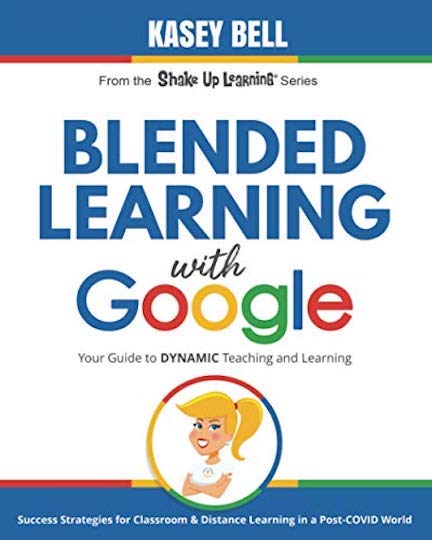
| |
|
KM 12975KM 12975 Box of Facts Addition and Subtraction
Grade Lvl: KPI Author:
Length: 0 Copyright: 2015
The Box of Facts is a collection of ready-made visual aids to assist teachers in helping students to develop mathematics thinking strategies for basic facts in addition and subtraction. The use of these visual aids reinforces student practice of the basic facts with larger numbers. For use with grades K-5. Each kit includes:200+ laminated cards packaged by strategy and step-by-step instructions on how to use the cards. |
Box of Facts Addition and Subtraction KPI
 
| |
|
KM 12976KM 12976 Box of Facts Multiplication and Division
Grade Lvl: PI Author:
Length: 0 Copyright: 2017
The Box of Facts is a collection of ready-made visual aids to assist teachers in helping students to develop mathematics thinking strategies for basic facts in multiplication and division. The use of these visual aids reinforces student practice of the basic facts with larger numbers. Kit includes 200+ laminated cards packaged by strategy and step-by-step instructions on how to use the cards. For use with Grades 3-6. |
Box of Facts Multiplication and Division PI
 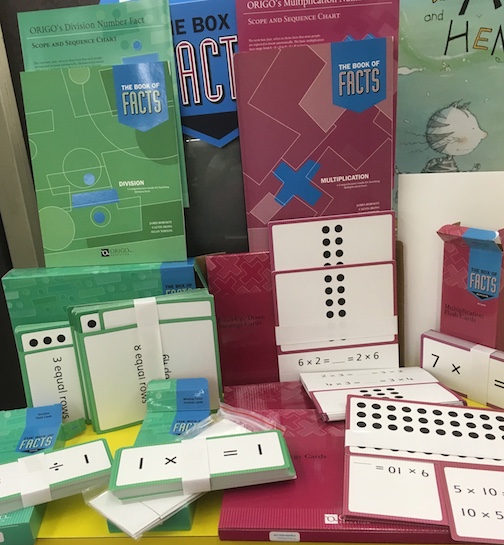
| |
|
B 97396B 97396 Bridge the Gap: Intervention Lessons
Grade Lvl: T Author: VanHekken, Alisa / Bottari, Marjorie
Length: 128 Copyright: 2020
Bridge the Gap is a series of systematic phonemic awareness intervention lessons for students in 2nd grade and above. The lessons can be used in small groups or with individual students who struggle to decode words automatically. |
Bridge the Gap: Intervention Lessons T
 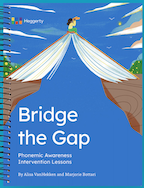
| |
|
B 96982B 96982 Building Mathematical Comprehension: Using Literacy Strategies to Make Meaning
Grade Lvl: T Author: Sammons, Laney
Length: 304 Copyright: 2011
Apply familiar reading comprehension strategies and relevant research to mathematics instruction to aid in building students' comprehension in mathematics. This resource demonstrates how to facilitate student learning to build schema and make connections among concepts. In addition, it provides clear strategies to help students ask good questions, visualize mathematics, and synthesize their understanding. This resource is aligned to College and Career Readiness Standards. |
Building Mathematical Comprehension: Using Literacy Strategies to Make Mean T
 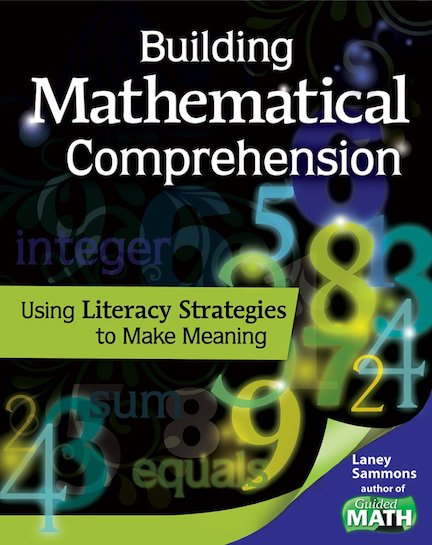
| |
|
B 97140B 97140 But What Do I DO?: Strategies From A to W for Multi-Tier Systems of Support
Grade Lvl: T Author: Collier, Catherine C
Length: 424 Copyright: 2016
Select individualized and evidence-based interventions for struggling students with this comprehensive guide. Organized around an alphabetized and cross-referenced list and a fold-out selection grid featuring more than 150 PBIS, RTI and MTSS interventions, you’ll quickly find the tools to resolve specific learning and behavioral challenges. The text addresses ideas to: Meet the needs of all your struggling students including at-risk, culturally and linguistically diverse, as well as those with IEPs. Progress monitor, document, and modify instructional strategies. Identify specific interventions for distinct learning and behavior problems. Implement in variety of settings, including special education, learning assistance programs, and full-inclusion. |
But What Do I DO?: Strategies From A to W for Multi-Tier Systems of Support T
 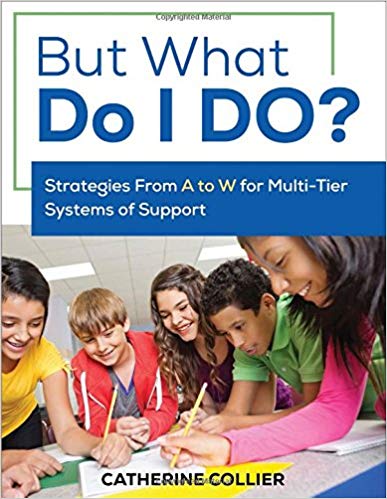
| |
|
B 97138B 97138 Checking for Understanding: Formative Assessment Techniques for Your Classroom, 2nd edition
Grade Lvl: T Author: Fisher, Doug / Frey, Nancy
Length: 157 Copyright: 2014
Shows how to increase students understanding with the help of creative formative assessments. When used regularly, formative assessments enable every teacher to determine what students know and what they still need to learn. Fisher and Frey explore a variety of engaging activities that check for and increase understanding, including interactive writing, portfolios, multimedia presentations, audience response systems, and much more. This new 2nd edition of Checking for Understanding has been updated to reflect the latest thinking in formative assessment and to show how the concepts apply in the context of Fisher and Frey s work on gradual release of responsibility, guided instruction, formative assessment systems, data analysis, and quality instruction. |
Checking for Understanding: Formative Assessment Techniques for Your Classr T
 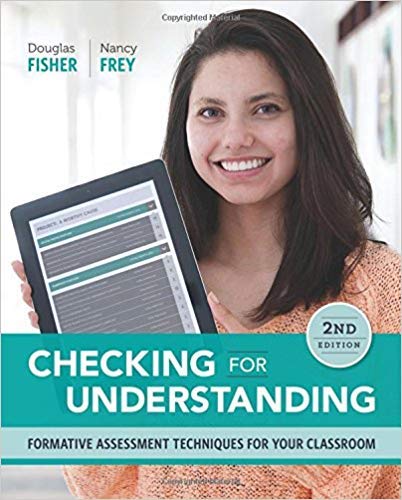
| |
|
KM 13557KM 13557 Chocolate Touch (30 Books)
Grade Lvl: PI Author: Catling, Patrick
Length: 126 Copyright: 2022
A boy who acquires a magical gift that turns everything his lips touch into chocolate. Cause and effect. King Midas. Greed. Classic literature. Legend, myth, fable characteristics. Kit contents: 30 copies of the book (126 pages) by Patrick Skene Catling; 3 Teacher Guides; a Student Packet and a Literature Kit. Novel study. IL 4-7. AR 4.7. RC 4.5. Lexile 770. GR N. |
Chocolate Touch (30 Books) PI
 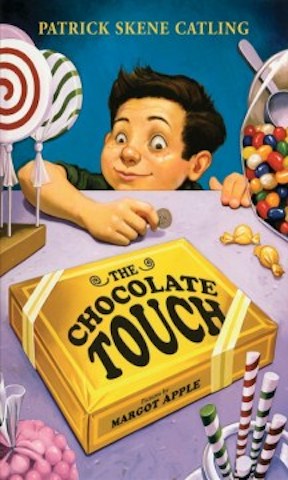
| |
|
B 97398B 97398 Choosing and Using Decodable Texts: Practical Tips and Strategies for Enhancing Phonics Instruction
Grade Lvl: T Author: Blevins, Wiley
Length: 128 Copyright: 2021
Follow-up text to Phonics From A to Z, Wiley Blevins explains why quality decodable texts are an essential early learning tool and how to distinguish the good from the bad. This resource offers practical lessons and routines for using decodable texts to build children’s phonics and fluency skills, as well as tips on selecting strong decodable texts and what to do if you don’t have any. Includes fun and engaging reproducible decodable mini-books. |
Choosing and Using Decodable Texts: Practical Tips and Strategies for Enhan T
 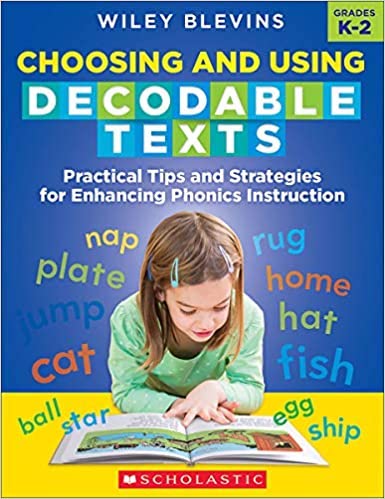
| |
|
B 97252B 97252 Classroom Management for Art, Music, and PE Teachers
Grade Lvl: T Author: Linsin, Michael
Length: 156 Copyright: 2014
Text provides readers with the strategies needed to effectively manage a classroom, discussing and inspiring students to behave, improving listening and attentiveness, speaking with power and influence, and more. Chapters include: Leverage & influence -- Routines & procedures -- Listening & following directions -- Rules & consequences -- Bad days & tough classes. |
Classroom Management for Art, Music, and PE Teachers T
 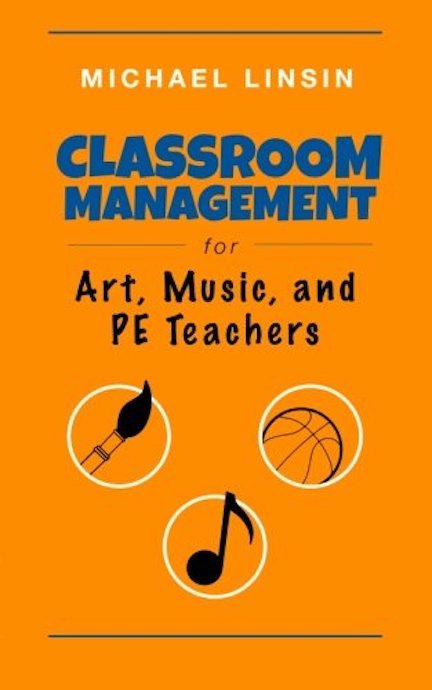
| |
|
B 97374B 97374 Classroom Ready Rich Math Tasks Grades 2-3: Engaging Students in Doing Math
Grade Lvl: T Author: Kobett, Beth McCord / Fennell, Francis (Skip)
Length: 368 Copyright: 2021
Details research- and standards-aligned, high-cognitive-demand tasks that will have your students doing deep-problem-based learning. These ready-to-implement, engaging tasks connect skills, concepts and practices, while encouraging students to reason, problem-solve, discuss, explore multiple solution pathways, connect multiple representations, and justify their thinking. They help students monitor their own thinking and connect the mathematics they know to new situations. In other words, these tasks allow students to truly do mathematics! Text offers: • Complete task-based lessons, referencing mathematics standards and practices, vocabulary, and materials • Downloadable planning tools, student resource pages, and thoughtful questions, and formative assessment prompts • Guidance on preparing, launching, facilitating, and reflecting on each task • Notes on access and equity, focusing on students’ strengths, productive struggle, and distance or alternative learning environments. |
Classroom Ready Rich Math Tasks Grades 2-3: Engaging Students in Doing Math T
 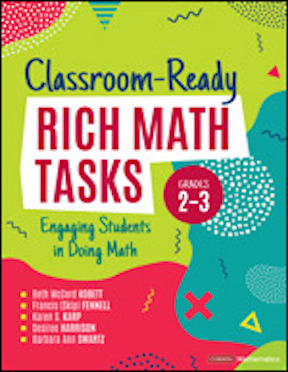
| |
|
B 97375B 97375 Classroom Ready Rich Math Tasks Grades 4-5: Engaging Students in Doing Math
Grade Lvl: T Author: Kobett, Beth McCord / Fennell, Francis (Skip)
Length: 297 Copyright: 2021
Details more than 50 research- and standards-aligned, high-cognitive-demand tasks that will have your students doing deep-problem-based learning. These ready-to-implement, engaging tasks connect skills, concepts and practices, while encouraging students to reason, problem-solve, discuss, explore multiple solution pathways, connect multiple representations, and justify their thinking. They help students monitor their own thinking and connect the mathematics they know to new situations. In other words, these tasks allow students to truly do mathematics! Text offers: • Complete task-based lessons, referencing mathematics standards and practices, vocabulary, and materials • Downloadable planning tools, student resource pages, and thoughtful questions, and formative assessment prompts • Guidance on preparing, launching, facilitating, and reflecting on each task • Notes on access and equity, focusing on students’ strengths, productive struggle, and distance or alternative learning environments. |
Classroom Ready Rich Math Tasks Grades 4-5: Engaging Students in Doing Math T
 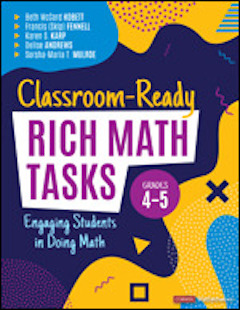
| |
|
B 97373B 97373 Classroom Ready Rich Math Tasks, Grades K-1: Engaging Students in Doing Math
Grade Lvl: T Author: Kobett, Beth McCord / Fennell, Francis (Skip)
Length: 306 Copyright: 2021
Details 56 research and standards aligned, high-cognitive-demand tasks that will have your students doing deep-problem-based learning. These ready-to-implement, engaging tasks connect skills, concepts and practices, while encouraging students to reason, problem-solve, discuss, explore multiple solution pathways, connect multiple representations, and justify their thinking. They help students monitor their own thinking and connect the mathematics they know to new situations. Text offers: • Complete task-based lessons, referencing mathematics standards and practices, vocabulary, and materials • Downloadable planning tools, student resource pages, and thoughtful questions, and formative assessment prompts • Guidance on preparing, launching, facilitating, and reflecting on each task • Notes on access and equity, focusing on students’ strengths, productive struggle, and distance or alternative learning environments. |
Classroom Ready Rich Math Tasks, Grades K-1: Engaging Students in Doing Mat T
 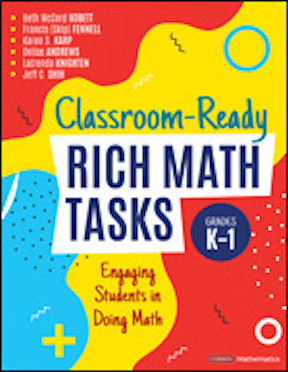
| |
|
B 97142B 97142 Close Reading for the Whole Class
Grade Lvl: T Author: Athans, Sandra / Devine, Denise
Length: 128 Copyright: 2015
Easy Strategies for: Choosing Complex Texts, Creating Text-Dependent Questions, Teaching Close Reading Lessons. Close reading is a key strategy for comprehending the complex texts required by the Common Core. Sandra Athans and Denise Devine unpack this strategy, breaking it down into manageable components and sharing their classroom-tested lessons and teaching tools that guide students step-by-step through close reading grade-level texts. Athans and Devine demonstrate how to • select appropriate text for instruction • develop high-level questions to guide student thinking • teach students to use evidence to support their responses • facilitate discussion to further deepen student comprehension • scaffold struggling readers Intended for use with Grades 2-6. |
Close Reading for the Whole Class T
 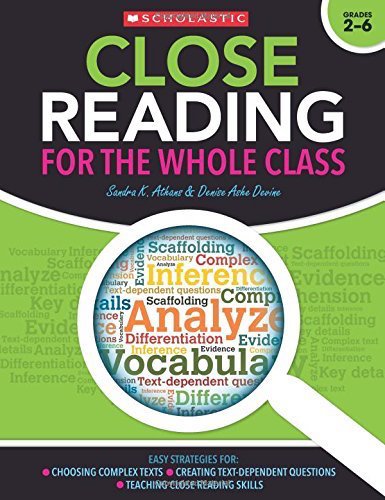
| |
|
B 97599B 97599 Closing Circles K-6
Grade Lvl: T Author: Januszka, Dana / Vincent, Kristen
Length: 134 Copyright: 2015
Bringing the school day to a peaceful end enhances learning and reaffirms classroom community. Gather with your class for a 5- or 10-minute activity before dismissal and you’ll all leave school feeling encouraged and competent. Classroom climate. Classroom management. Wellbeing. This book contains 50 easy-to-do activities for the end of the day: songs and chants, individual reflection questions, energetic cheers, silent cheers, quick partner and group chats, team or class challenges, quiet think time, and more. Use the activities as written or make them your own by adapting them to fit your students’ mood or developmental needs. |
Closing Circles K-6 T
 
| |
|
KM 12656KM 12656 Coaching Classroom Management Strategies and Tools for Administrators and Coaches, 2nd Ed.
Grade Lvl: T Author: Sprick, Randy / Knight, Jim
Length: 264 Copyright: 2010
The second edition is designed to help administrators, staff developers, behavior specialists, and instructional coaches who work directly with teachers to improve classroom management and student behavior. Provides tools to implement effective behavioral coaching including observation forms, staff development materials, checklists, rating scales, & tip sheets for classroom walk-throughs. Contents: Book and reproducible forms. Authors: Randy Sprick, Jim Knight, Wendy Reinke, Tricia McKale Skyles, and Lynn Barnes. From Randy Sprick's Safe & Civil Schools series. |
Coaching Classroom Management Strategies and Tools for Administrators and C T
 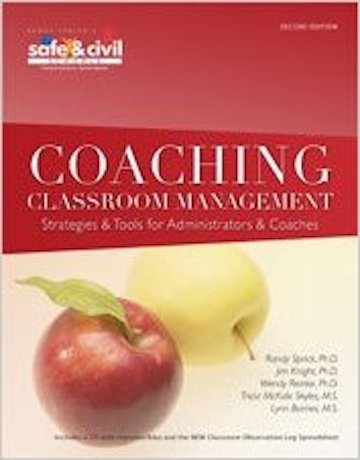
| |
|
B 97325B 97325 Coding as a Playground: Programming and Computational Thinking in the Early Childhood Classroom, Second Edition
Grade Lvl: T Author: Bers, Marina Umaschi
Length: 229 Copyright: 2021
Coding as a Playground, Second Edition focuses on how young children (aged 7 and under) can engage in computational thinking and be taught to become computer programmers, a process that can increase both their cognitive and social-emotional skills. Learn how coding can engage children as producers―and not merely consumers―of technology in a playful way. You will come away from this groundbreaking work with an understanding of how coding promotes developmentally appropriate experiences such as problem-solving, imagination, cognitive challenges, social interactions, motor skills development, emotional exploration, and making different choices. Featuring all-new case studies, vignettes, and projects, as well as an expanded focus on teaching coding as a new literacy, this second edition helps you learn how to integrate coding into different curricular areas to promote literacy, math, science, engineering, and the arts through a project-based approach and a positive attitude to learning. |
Coding as a Playground: Programming and Computational Thinking in the Early T
 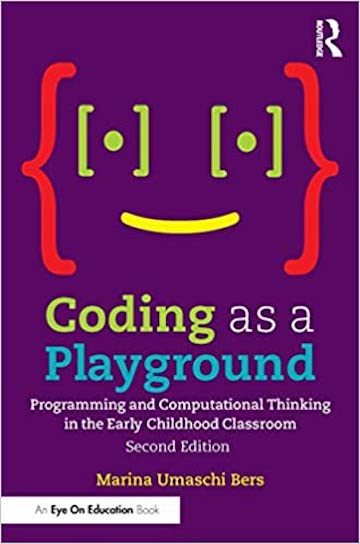
| |
|
B 97510B 97510 Collaboration for Career and Technical Education: Teamwork Beyond the Core Content Areas in a PLC at Work
Grade Lvl: T Author: Custable, Wendy / Farmer, Paul C
Length: 176 Copyright: 2020
A guide for readers who wish to integrate the PLC process into their CTE programs of study. The authors note that CTE teachers are often singleton teachers and, as a result, are often left out of the collaborative process, if they have access to one at all. The PLC system has numerous proven benefits that CTE teachers can use to develop their students' knowledge, develop rigorous academic standards and best practices, and best prepare their students for their lives post graduation. Consequently, these CTE educators need a PLC system that is structured uniquely for their situation and their fields of study. Key to developing a professional learning community consisting of multiple singleton teachers is learning how to focus on what all of these educators' fields of study have in common. Therefore, the authors provide all of the information these educators will need to define their clarity of purpose, discover their common denominators, and build a powerful collaborative process. Using this book, CTE educators and singleton teachers will learn the vital strategies necessary for team building and improvement and the creation of customizable collaborative processes. |
Collaboration for Career and Technical Education: Teamwork Beyond the Core T
 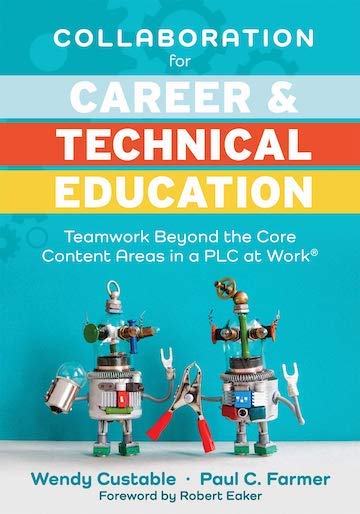
| |
|
B 97148B 97148 Connected Reading: Teaching Adolescent Readers in a Digital World
Grade Lvl: T Author: Turner, Kristen Hawley / Hicks, Troy
Length: 179 Copyright: 2015
As readers of all ages increasingly turn to the Internet and a variety of electronic devices for both informational and leisure reading, teachers need to reconsider not just who and what teens read but where and how they read as well. Having ready access to digital tools and texts doesn't mean that middle and high school students are automatically thoughtful, adept readers. So how can we help adolescents become critical readers in a digital age? Using NCTE's policy research brief Reading Instruction for All Students as both guide and sounding board, experienced teacher-researchers Kristen Hawley Turner and Troy Hicks took their questions about adolescent reading practices to a dozen middle and high school classrooms. In this book, they report on their interviews and survey data from visits with hundreds of teens, which led to the development of their model of Connected Reading: "Digital tools, used mindfully, enable connections. Digital reading is connected reading." They argue that we must teach adolescents how to read digital texts effectively, not simply expect that teens can read them because they know how to use digital tools. Turner and Hicks offer practical tips by highlighting classroom practices that engage students in reading and thinking with both print and digital texts, thus encouraging reading instruction that reaches all students. |
Connected Reading: Teaching Adolescent Readers in a Digital World T
 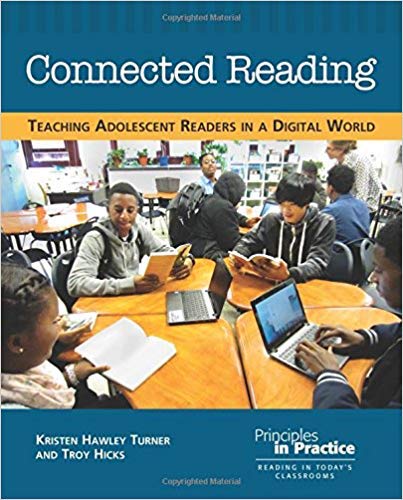
| |
|
B 97150B 97150 Create, Compose, Connect! Reading, Writing and Learning with Digital Tools
Grade Lvl: T Author: Hyler, Jeremy / Hicks, Troy
Length: 200 Copyright: 2014
Find out how to incorporate digital tools into your English language arts class to improve students’ reading, writing, listening, and speaking skills. Authors Jeremy Hyler and Troy Hicks show you that technology is not just about making a lesson engaging; it’s about helping students become effective creators and consumers of information in today’s fast-paced world. You’ll learn how to use mobile technologies to teach narrative, informational, and argument writing as well as visual literacy and multimodal research. Each chapter is filled with exciting lesson plans and tech tool suggestions that you can take back to your own classroom immediately. |
Create, Compose, Connect! Reading, Writing and Learning with Digital Tools T
 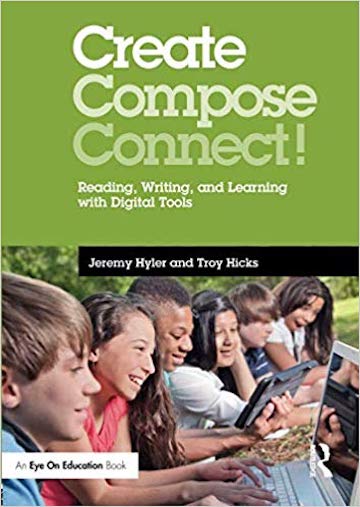
| |
|
KM 13463KM 13463 Creative Curriculum for Preschool Gardening Study
Grade Lvl: T Author:
Length: 0 Copyright: 2021
Brings the garden to your classroom. Children benefit from abundant opportunities for hands-on exploration and discovery as they grow and taste nutritious produce, see the rainbow of colors that different plants create, and share their harvest with the community. The Gardening Study Teaching Guide presents six weeks of daily plans to help teachers individualize instruction, provide meaningful learning experiences, address objectives for development and learning, and successfully engage families in their children’s learning. With the Gardening Study, you can create even more opportunities for dynamic learning experiences in your preschool classroom. Kit Includes: Gardening Study Teaching Guide; 3 fiction books: Harvesting Friends / Cosechando amigos, Grandpa’s Garden, and The Book Tree. Also includes 3 Book Discussion Cards and 1 nonfiction book: It’s Our Garden: From Seeds to Harvest in a School Garden. |
Creative Curriculum for Preschool Gardening Study T
 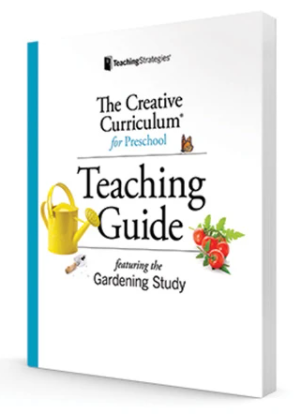
| |
|
KM 13403KM 13403 Data-Based Instruction in Early Writing Bundle
Grade Lvl: T Author:
Length: 0 Copyright: 2020
Writing is key to children’s overall literacy development, and has a strong connection to reading. The Early Writing Project their Data-Based Instruction in Early Writing Bundle includes tools, learning and coaching resources. This toolkit bundle includes both books: -DBI: Manual, CBM Toolkit, and Decision Making Toolkit -DBI Materials; Writing Intervention Toolkit. Explicit instruction. Professional kit. |
Data-Based Instruction in Early Writing Bundle T
 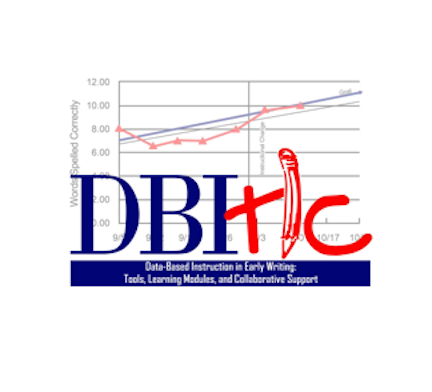
| |
|
KM 12812KM 12812 DBQs in American History
Grade Lvl: IJST Author:
Length: 0 Copyright: 2016
The DBQ Project Method provides a framework of best practices that guides teachers and students to read smart, think straight, and write clearly. The DBQ Project utilizes a 6-Step Method and delivers this methodology in all DBQs and Mini-Qs. Each step builds on students’ curiosity and increases motivation and confidence to answer a compelling, authentic question. Teachers across the country are using the DBQ Project with elementary, middle school, and high school students. Teacher scaffolding to serve the social studies learning experience and to meet the students' skill level will be key for successful implementation. DBQ - Document Based Questions. Ten High-Interest Units of Study What Caused the Salem Witch Trial Hysteria in 1692? How Revolutionary Was the American Revolution? How Democratic Was Andrew Jackson? The California Gold Rush: A Personal Journal What Caused the Civil War? How Violent Was the Old West? Was Andrew Carnegie a Hero? What Caused the Great Depression? Martin Luther King and Malcolm X: Whose Philosophy Made the Most Sense for America in the 1960s? Why Was the Equal Rights Amendment Defeated? |
DBQs in American History IJST
 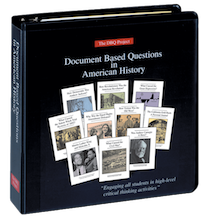
| |
|
KM 12825KM 12825 DBQs in World History
Grade Lvl: IJST Author:
Length: 0 Copyright: 2016
The DBQ Project Method provides a framework of best practices that guides teachers and students to read smart, think straight, and write clearly. The DBQ Project utilizes a 6-Step Method and delivers this methodology in all DBQs and Mini-Qs. Each step builds on students’ curiosity and increases motivation and confidence to answer a compelling, authentic question. Teachers across the country are using the DBQ Project with elementary, middle school, and high school students. Teacher scaffolding to serve the social studies learning experience and to meet the students' skill level will be key for successful implementation. DBQ - Document Based Questions. Ten High-Interest Units of Study Classical Greece and China: How Great Were the Differences? The Mongols: How Barbaric Were the “Barbarians”? The Black Death: How Different Were Christian and Muslim Responses? The Aztecs: What Should History Say? What Was the Most Important Consequence of the Printing Press? What Drove the Sugar Trade? How Did Colonialism Affect Kenya? Female Mill Workers in England and Japan: How Similar Were Their Experiences? What Were the Underlying Causes of World War I? Gandhi, King and Mandela: What Made Non-Violence Work? |
DBQs in World History IJST
 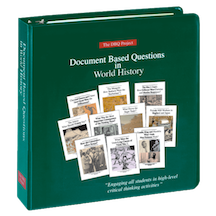
| |
|
KM 13622KM 13622 Decodable Cards: Advanced Phonics Concepts
Grade Lvl: KPI Author:
Length: 0 Copyright: 2022
Each box contains laminated cards that target and teach must-know concepts including short vowels, long vowels, blends, digraphs, and more. The front of each card introduces the skill focus while the back challenges kids to read a just-right decodable story. Includes five copies of each card to facilitate group learning and a complete teaching guide. Kit includes: 125 Cards (5 copies of 25 different cards, 48-page teaching guide. IL K-5. |
Decodable Cards: Advanced Phonics Concepts KPI
 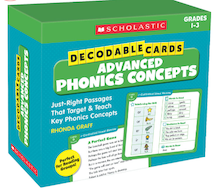
| |
|
KM 13620KM 13620 Decodable Cards: Long Vowels & More
Grade Lvl: KPI Author:
Length: 0 Copyright: 2022
Just-Right Passages to target & teach key phonics concepts. Each box contains laminated cards that target and teach must-know concepts including short vowels, long vowels, blends, digraphs, and more. The front of each card introduces the skill focus while the back challenges kids to read a just-right decodable story. Includes five copies of each card to facilitate group learning and a complete teaching guide. Kit includes: 125 Cards (5 copies of 25 different cards, 48-page teaching guide. IL K-5. |
Decodable Cards: Long Vowels & More KPI
 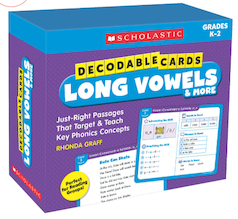
| |
|
KM 13621KM 13621 Decodable Cards: Short Vowels & More
Grade Lvl: KPI Author:
Length: 0 Copyright: 2022
Just-right passages that target & teach key phonics concepts. Each box contains laminated cards that target and teach must-know concepts including short vowels, long vowels, blends, digraphs, and more. The front of each card introduces the skill focus while the back challenges kids to read a just-right decodable story. Includes five copies of each card to facilitate group learning and a complete teaching guide. Kit includes: 125 Cards (5 copies of 25 different cards), 48-page teaching guide. IL K-5.
|
Decodable Cards: Short Vowels & More KPI
 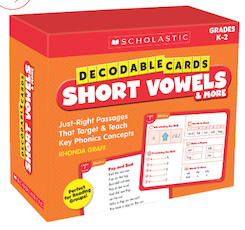
| |
|
B 97628B 97628 Differentiating Phonics Instruction for Maximum Impact
Grade Lvl: T Author: Blevins, Wiley
Length: 282 Copyright: 2024
Subtitle: How to Scaffold Whole-Group Instruction So All Students Can Access Grade-Level Content. Think in powerful new ways about differentiating whole-class phonics lessons, so students at every skill level can engage. Text provides: high-impact routines that focus on the skills known to develop students’ literacy best; Differentiated application of these routines―with fun multi-modal games and variations―for students working on below , and above grade-level expectations, and for multilingual learners. Several reproducible phonics and spelling assessments for placement, progress monitoring, and formative assessments to keep every learner growing as readers and writers. |
Differentiating Phonics Instruction for Maximum Impact T
 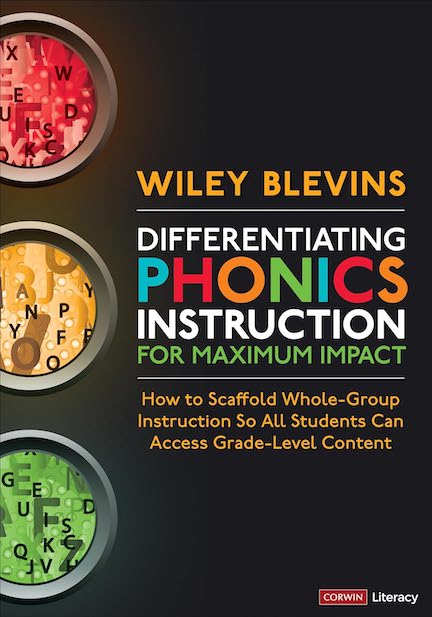
| |
|
B 97256B 97256 Digital Citizenship in Action: Empowering Students to Engage in Online Communities
Grade Lvl: T Author: Mattson, Kristen
Length: 120 Copyright: 2017
Text provides readers practical ways for taking digital citizenship lessons beyond a conversation about personal responsibility so that you can create opportunities for students to become participatory citizens, actively engaging in multiple levels of community and developing relationships based on mutual trust and understanding with others in these spaces. Digital responsibility. ISTE Standards for Educators. Teaching methods and materials. |
Digital Citizenship in Action: Empowering Students to Engage in Online Comm T
 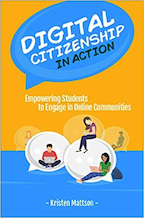
| |
|
B 96935B 96935 Digital Writing for English Learners
Grade Lvl: T Author: Alrubail,Rusul
Length: 67 Copyright: 2017
Digital Writing for English Language Learners provides practical ways to use technology in the English/Language Arts classroom for ELL students. Classroom activities and assignments are provided for use with social media and other digital writing tools, as well as how to create a culture for fostering conditions for student voice. |
Digital Writing for English Learners T
 
| |
|
B 97177B 97177 Disciplinary Literacy in Action: How to Create and Sustain a School-Wide Culture of Deep Reading, Writing, and Thinking
Grade Lvl: T Author: Lent, ReLeah Cossett / Voigt, Marsha McCracken
Length: 346 Copyright: 2019
Aimed at middle and high school teachers, authors provide educators with a framework that keeps their subjects at the center and shows them how to pool strengths with colleagues in ongoing communities of professional learning (PL) around content-specific literacy. Professional book. |
Disciplinary Literacy in Action: How to Create and Sustain a School-Wide Cu T
 
| |
|
B 96963B 96963 Disrupting Thinking: Why How We Read Matters
Grade Lvl: T Author: Beers, Kylene / Probst, Robert E
Length: 176 Copyright: 2017
Discusses an on-going problem: lack of engagement with reading. Presents a vision of what reading and what education across all the grades could be. Hands-on-strategies make it applicable right away for the classroom teacher, and turn-and-talk discussion points make it a guidebook for school-wide conversations. Shares new strategies and ideas for helping classroom teachers: Create engagement and relevance; Encourage responsive and responsible reading; Deepen comprehension; and Develop lifelong reading habits. |
Disrupting Thinking: Why How We Read Matters T
 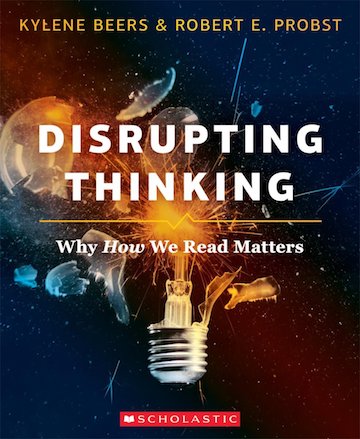
| |
|
B 97572B 97572 Doing Language Arts in Morning Meeting
Grade Lvl: T Author: Luongo, Jodie / Riordan, Joan
Length: 225 Copyright: 2015
Quick and easy to teach and do, these activities offer K–6 teachers engaging ways to give students rich practice in language arts. Find language arts-themed ideas for all four components of Morning Meeting, including activities created to fit the needs, interests, and content area focus for a wide variety of students. IL K-6. |
Doing Language Arts in Morning Meeting T
 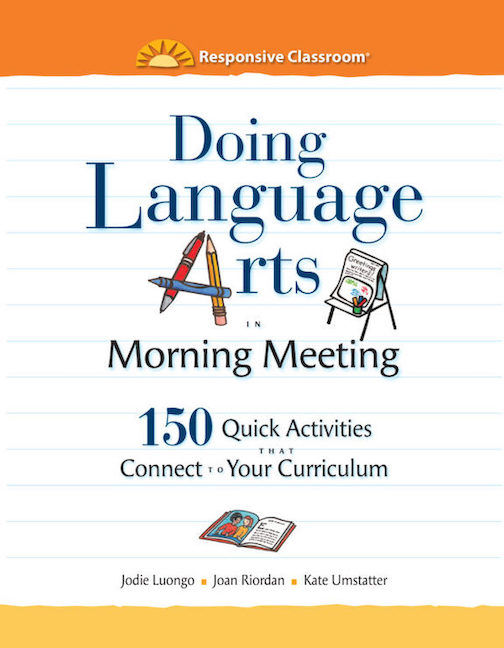
| |
|
B 97570B 97570 Doing Math in the Morning Meetings
Grade Lvl: T Author: Dousis, Andy / Wilson, Margaret
Length: 255 Copyright: 2010
Bring joy and energy to elementary math without adding to your already-packed schedule with fun and engaging activities for grades K–5. 150 quick activities for elementary teachers that include guessing games, songs, hands-on experiments, and more. IL K-6. |
Doing Math in the Morning Meetings T
 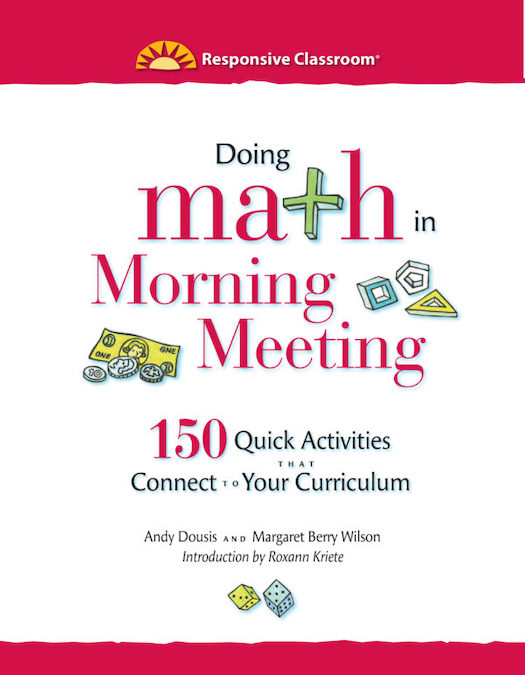
| |
|
B 97571B 97571 Doing Science in Morning Meeting
Grade Lvl: T Author: Webb, Lara / Wilson, Margaret
Length: 227 Copyright: 2016
Foster science learning and excitement with these quick, fun, meaningful activities for students K–6. Disciplines include physical sciences, life sciences, Earth and space sciences, as well as engineering, technology, and applications of science. Though designed specifically to fit into Morning Meeting, these activities are flexible enough to use at any time of day. IL K-6. |
Doing Science in Morning Meeting T
 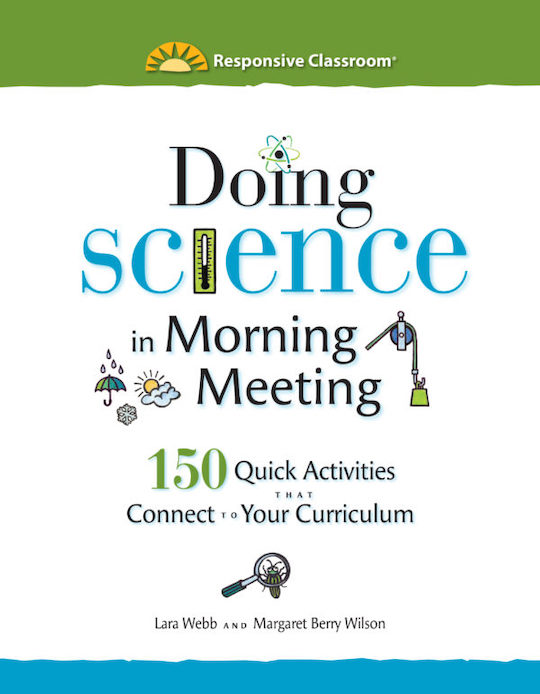
| |
|
B 97569B 97569 Doing Social Studies in Morning Meeting
Grade Lvl: T Author: Carson, Leah / Cofie, Jane
Length: 0 Copyright: 209
Enliven Elementary Morning Meetings and inspire students to become active, contributing members of their school, community, and beyond. Each activity is designed to help students connect what they learn to their own lives while boosting knowledge and skills in geography, history, civics, economics, and more. IL K-6. |
Doing Social Studies in Morning Meeting T
 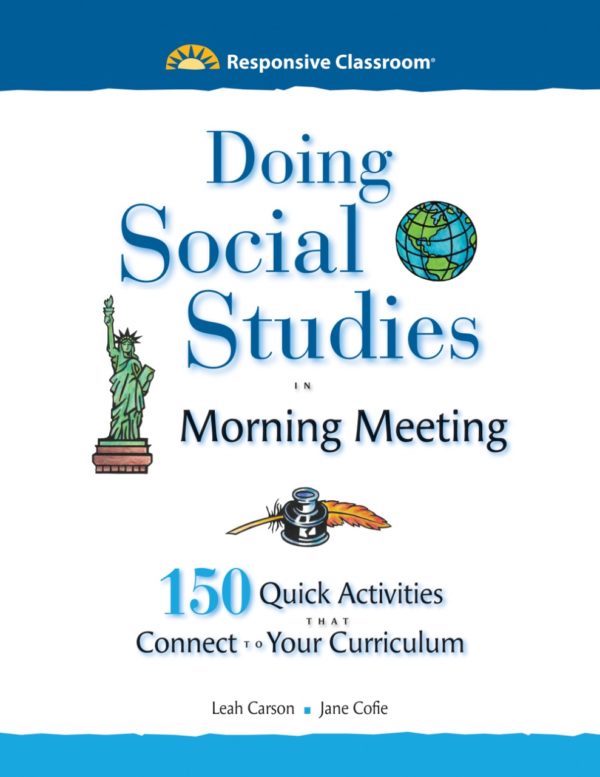
| |
|
B 97026B 97026 Drones in Education: Let Your Students' Imaginations Soar
Grade Lvl: T Author: Carnahan, Christopher / Zeiger, Laura
Length: 120 Copyright: 2016
This book was written for educators who want to incorporate drones into their curriculum but have no idea where to start. It will cover all that you need to need to know to get off of the ground with a drone program in your school. It covers such basic but important information as which drones need to be registered and where you can fly them. It also provides recommendations as to the drones that are best for specific students' age levels and subject areas. Complete with lesson plans, real-world applications, and tips on securing funding for drones, the information provided here will offer you everything you need to know to start using drones in the classroom. |
Drones in Education: Let Your Students' Imaginations Soar T
 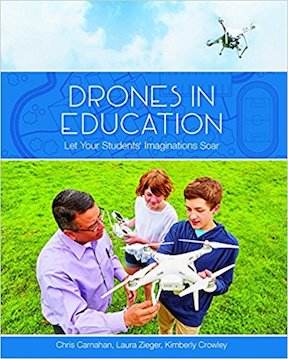
| |
|
B 97608B 97608 Dyslexia Outside-the-Box (2nd Edition)
Grade Lvl: T Author: Nash, Beth Ellen
Length: 236 Copyright: 2023
Subtitle: Equipping Dyslexic Kids to Not Just Survive but Thrive. Text offers readers a balanced perspective showing how a dyslexic child’s challenges are directly connected to the flip-side strengths of their brain’s unique wiring: Using evidenced-based information about dyslexia, the book is organized in an easy-to-understand format for anyone who knows and wants to support someone with dyslexia. It breaks down the many aspects of dyslexia and offers solutions that have the “whole person” in mind, showing how these children whose brains are delightfully wired differently can thrive, not just survive. Text is filled with fun and easy suggestions, tips, teaching ideas, and, best of all, encouragement for parents and teachers of dyslexic students. |
Dyslexia Outside-the-Box (2nd Edition) T
 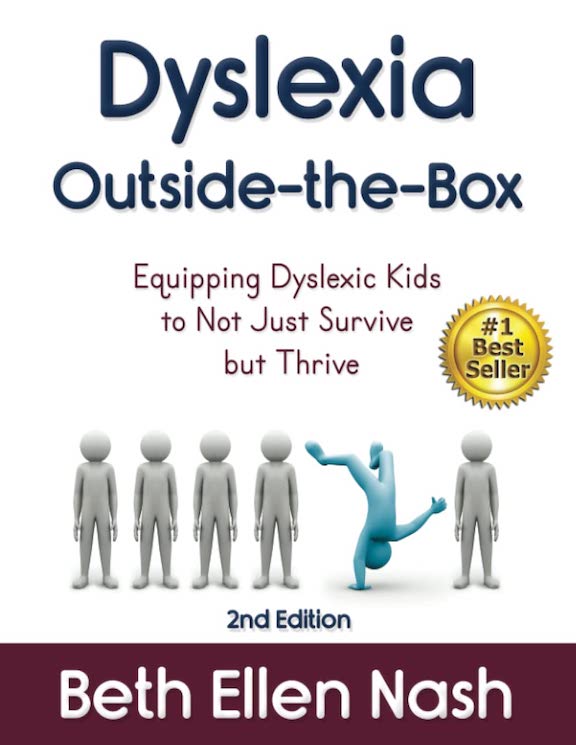
| |
|
KM 13054KM 13054 Early Childhood Coaching Handbook (11 books)
Grade Lvl: T Author: Rush, Dathan D / Shelden, M'Lisa L
Length: 220 Copyright: 2011
Evidence-based and highly effective, coaching helps early childhood practitioners support other professionals and families as they enhance existing knowledge, develop new skills, and promote healthy development of young children. This hands-on guide shows professionals how to conduct skillful coaching in any setting—home, school, or community. Eight week loan period on this kit. This guidebook walks professionals step by step through the coaching process and shows them explicitly what best practices look like. Developed by authorities on coaching and informed by the authors' staff development and technical assistance activities with other professionals, this book directly addresses the real-world challenges of coaching and gives readers concrete guidance on successful strategies and interactions. Pre-service and in-service early childhood professionals will: •Master the five characteristics of coaching practices—observation, action, reflection, feedback, and joint planning •See exactly how to conduct a positive coaching session, with transcripts of successful coaching in action •Learn about the qualities of effective coaches, including openness to experiences, adaptability, empathy, and honesty •Adjust coaching techniques to meet the specific needs of early childhood educators, parents, and caregivers •Incorporate coaching into professional development programs to ensure immediate use of the latest best practices •Understand how coaching differs from other collaborative models, such as consultation, direct teaching, and counseling *Discover cutting-edge early childhood research that demonstrates the effectiveness of a coaching approach To keep their skills sharp and ensure adherence to best coaching practices, readers will get easy-to-use, photocopiable tools that help them implement coaching consistently and effectively. They'll also have samples so they can see how to use the tools to evaluate and improve their interactions. With this coaching guidebook, every early childhood professional including developmental specialists, Early Head Start and Head Start staff, early literacy specialists, infant mental health specialists, nurses, occupational therapists, physical therapists, psychologists, social workers, service coordinators, speech-language pathologists, and teachers will provide effective support to families and other professionals to enhance developmental outcomes for all young children. Kit includes 11 books for professional use. Restricted to Keystone AEA Admin Staff. |
Early Childhood Coaching Handbook (11 books) T
 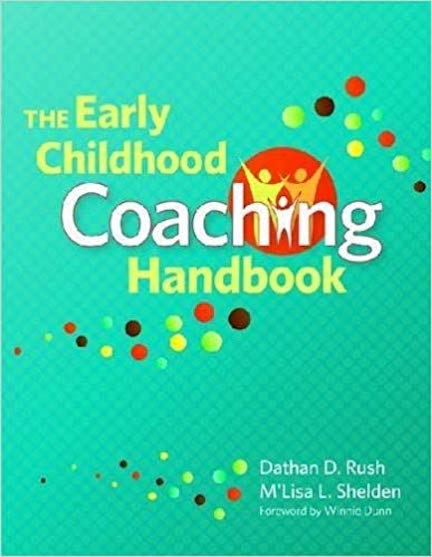
| |
|
KM 12822KM 12822 Early Start Denver Model for Young Children with Autism: Promoting Language, Learning, and Engagement
Grade Lvl: T Author: Rogers, Sally J / Dawson, Geraldine
Length: 297 Copyright: 2010
Manual presents the Early Start Denver Model (ESDM), the first comprehensive, empirically tested intervention approach specifically designed for toddlers and preschoolers with autism. Supported by the principles of developmental psychology and applied behavior analysis, ESDM's intensive teaching interventions are delivered within play-based, relationship-focused routines. The manual provides structured, hands-on strategies for working with very young children in individual and group settings to promote development in such key domains as imitation; communication; social, cognitive, and motor skills; adaptive behavior; and play. Includes copies of "Early Start Model Curriculum Checklist for Young Children with Autism". There is a Professional Book in the Keystone collection that would be helpful with this kit #95699. Restricted to Keystone AEA Special Education Staff Only. |
Early Start Denver Model for Young Children with Autism: Promoting Language T
 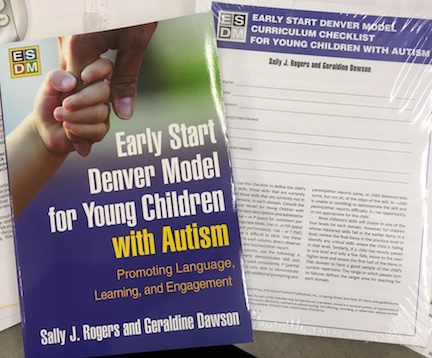
| |
|
B 97575B 97575 Educator's Guide to AI in the Classroom
Grade Lvl: T Author: McKeag, Abigail
Length: 180 Copyright: 2023
Subtitle: : The Transformative Power of AI in Education, How to Use AI in School, K-12 Classroom Lesson Plans, and Answers to Common AI Questions. Drawing on the latest research and practical insights, this guide offers a holistic approach to incorporating AI in schools. From understanding the broader impact of AI to practical applications and K-12 classroom lesson plans. In this book, you will find: Insights into the transformative power of AI in education Practical strategies for using AI in school settings K-12 classroom lesson plans blending AI with hands-on learning Answers to common questions and concerns about AI Information on ethical considerations and responsible use of AI technologies |
Educator's Guide to AI in the Classroom T
 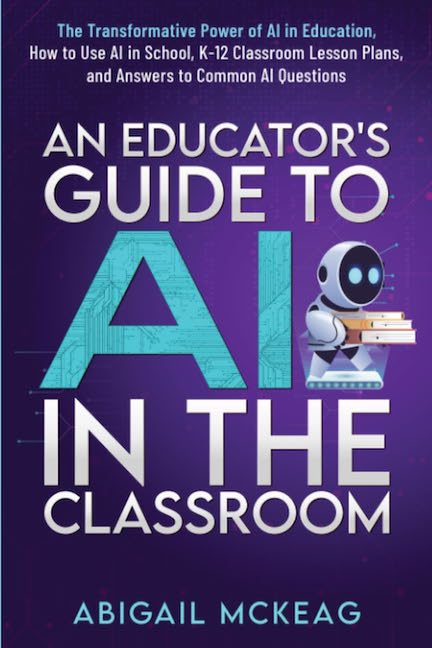
| |
|
B 97139B 97139 Effective Universal Instruction: An Action-Oriented Approach to Improving Tier 1 (The Guilford Practical Intervention in the Schools Series)
Grade Lvl: T Author: Gibbons, Kimberly / Brown, Sarah
Length: 220 Copyright: 2019
This accessible volume helps school leadership teams accomplish the crucial yet often overlooked task of improving universal instruction--Tier 1 within a multi-tiered system of support (MTSS). Strong universal instruction reduces the numbers of PreK–12 students who may need additional services and supports. Providing clear action steps and encouraging guidance, the expert authors present a roadmap for evaluating the effectiveness of Tier 1, identifying barriers to successful implementation, and making and sustaining instructional improvements. In a large-size format with lay-flat binding for easy photocopying, the book includes 27 reproducible checklists, worksheets, and forms. Purchasers get access to a Web page where they can download and print the reproducible materials. |
Effective Universal Instruction: An Action-Oriented Approach to Improving T T
 
| |
|
KM 13056KM 13056 Elementary Mini-Qs (Volume 1)
Grade Lvl: PI Author:
Length: 0 Copyright: 2019
Elementary Mini-Qs: Volume 1. Ten High-Interest Units of Study What Does the Longhouse Teach Us about the Iroquois? Why Should We Protect the Wolf? Valley Forge: Would You Have Quit? Why Does Our Hindu-Arabic Number System Work So Well? Why Is Freedom of the Press Essential to a Democracy? An Early American Diary Grimms’ Fairy Tales: Was Grimm Too Grim? Why Are Hurricanes So Dangerous? Life on the Plains: A Letter Home Should Your Town Ban the Sale of Plastic Water Bottles? IL 3-6. |
Elementary Mini-Qs (Volume 1) PI
 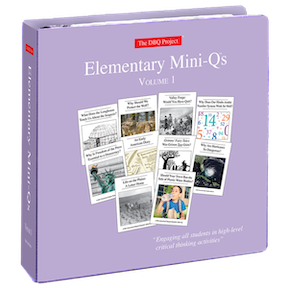
| |
|
KM 13247KM 13247 Elementary Mini-Qs (Volume 2)
Grade Lvl: PI Author:
Length: 0 Copyright: 2019
Mini-Qs in Elementary Vol. 2: Teacher Resource Binder. Compliment to KM 13056. Eleven High-Interest Units of Study How Did the Buffalo Shape Arapaho Culture? The Oregon Trail: Go or Stay Put? What Was Harriet Tubman's Greatest Achievement? Is Coyote a Good Role Model? How Does Haiku Spark the Senses? Early Jamestown: Why Did So Many Colonists Die? How Can Your School Reduce Food Waste? What Caused the Dust Bowl? Young Activists: How Can You Change the World? Why Was Thomas Edison Called the "Wizard of Menlo Park"? How Do We Remember 9/11? IL 3-6. |
Elementary Mini-Qs (Volume 2) PI
 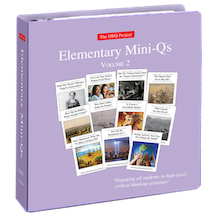
| |
|
B 97136B 97136 Embedded Formative Assessment (Strategies for Classroom Formative Assessment That Drives Student Engagement and Learning) 2nd Edition
Grade Lvl: T Author: William, Dylan
Length: 225 Copyright: 2018
By integrating classroom formative assessment practices into daily activities, educators can substantially increase student engagement and the rate of student learning. The second edition presents new research, insights, and formative assessment strategies teachers can immediately apply in their classrooms. Updated examples and templates are included to help teachers elicit evidence of learning, provide meaningful feedback, and empower students to take ownership of their education. Through new research, insights, examples and formative assessment techniques this professional teaching resources shows K-12 teachers and administrators how to positively impact student achievement. Contents: Chapter 1: Discovering Why Educational Achievement Matters Chapter 2: Making the Case for Formative Assessment Chapter 3: Clarifying, Sharing, and Understanding Learning Intentions and Success Criteria Chapter 4: Eliciting Evidence of Learners' Achievement Chapter 5: Providing Feedback That Moves Learning Forward Chapter 6: Activating Students as Instructional Resources for One Another Chapter 7: Activating Students as Owners of Their Own Learning |
Embedded Formative Assessment (Strategies for Classroom Formative Assessmen T
 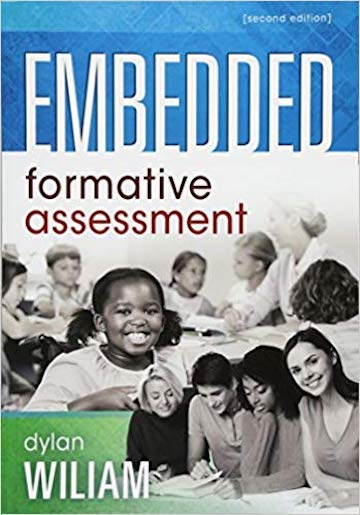
| |
|
B 97362B 97362 Engagement is Not a Unicorn (It’s a Narwhal): Mind-Changing Theory and Strategies That Will Create Real Engagement
Grade Lvl: T Author: Lyon, Heather
Length: 292 Copyright: 2020
Despite the fact that unicorns are not real, you undoubtedly know what a unicorn is. Despite the fact that narwhals ARE real, you may not know what a narwhal is. In schools, we think that engagement at the highest level like it's a unicorn-something we've heard of, but know isn't real. We should be thinking of engagement in schools as a narwhal-something that we may not know much about, but is absolutely real and can be found right in your own school. In this book, Heather Lyon creates a common understanding of what engagement looks and sounds like so that anyone can design and gauge instruction using this understanding. More importantly, with this knowledge educators can make changes to instruction to truly increase student engagement. |
Engagement is Not a Unicorn (It’s a Narwhal): Mind-Changing Theory and Stra T
 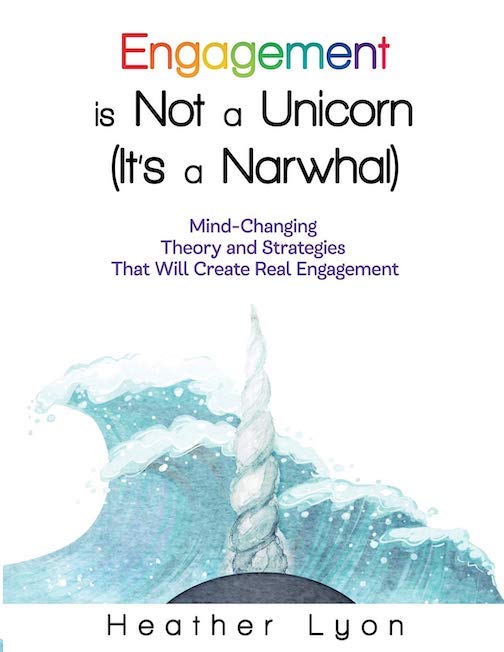
| |
|
B 97589B 97589 Every Child a Super Reader (2nd Edition)
Grade Lvl: T Author: Allyn, Pam / Morrell, Ernest
Length: 208 Copyright: 2022
Subtitle: 7 Strengths for a Lifetime of Independence, Purpose, and Joy. In this revised edition, Allyn and Morrell address how the 7 Strengths framework is needed more than ever in a post-pandemic world. They show how building on children's strengths while immersing them in a literature-rich classroom community can transform them into "super readers"-avid readers who grow together as they read and share their ideas with a sense of belonging, curiosity, friendship, kindness, confidence, courage, and hope. Teaching. Reading and Language Arts. |
Every Child a Super Reader (2nd Edition) T
 
| |
|
B 96922B 96922 Excellence Through Equity: Five Principles of Courageous Leadership to Guide Achievement for Every Student
Grade Lvl: T Author: Blankstein, Alan M / Noguera, Pedro
Length: 304 Copyright: 2015
Looks at how real-world educators are creating schools where all students are able to thrive. In these schools, educators understand that equity is not about treating all children the same. They are deeply committed to ensuring that each student receives what he or she individually needs to develop their full potential and succeed. |
Excellence Through Equity: Five Principles of Courageous Leadership to Guid T
 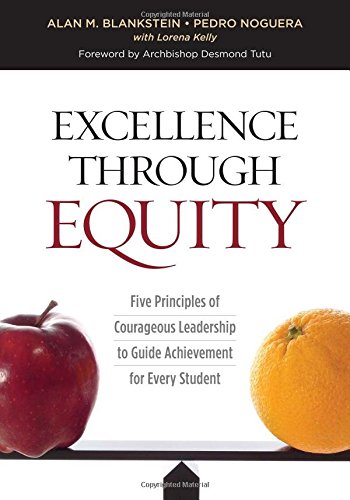
| |
|
B 95531B 95531 Explicit Instruction: Effective and Efficient Teaching
Grade Lvl: T Author: Archer, Anita / Hughes, Charles
Length: 290 Copyright: 2011
Provides tools and advice for educators to use explicit instruction for efficient classroom teaching, explaining how to identify and design effective lessons around key concepts, and including samples of lesson plans, reproducible checklists, and teacher worksheets. Cognitive learning. Intervention. From the series What Works for Special-Needs Learners. |
Explicit Instruction: Effective and Efficient Teaching T
 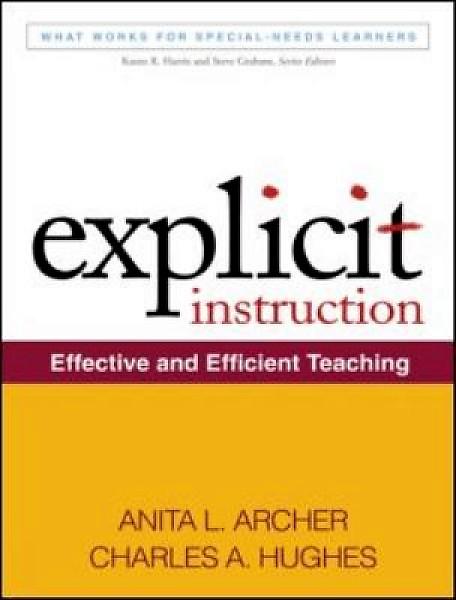
| |
|
B 97329B 97329 Explicit Instruction: Strategies for Meaningful Direct Teaching
Grade Lvl: T Author: Goeke, Jennifer
Length: 132 Copyright: 2009
Presenting both a theoretical background as well as concrete strategies for classrooms, this book speaks to teachers about the necessity of becoming effective Explicit Instructors and gives them the tools to do so. KEY TOPICS: The book walks teachers through the entire Explicit Instruction structure from introduction to implementation, breaking the practice down into manageable units and illuminating EI through scripted lessons and examples of EI in practice. MARKET: K-5 teachers, and secondary instruction of students who have not acquired basic skills. |
Explicit Instruction: Strategies for Meaningful Direct Teaching T
 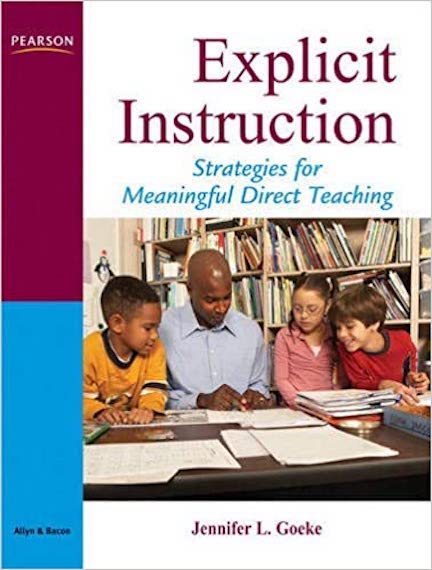
| |
|
B 97167B 97167 Fact Vs. Fiction: Teaching Critical Thinking Skills in the Age of Fake News
Grade Lvl: T Author: LaGarde, Jennifer / Hudgins, Darren
Length: 147 Copyright: 2018
The advent of the 24-hour news cycle, citizen journalism and an increased reliance on social media as a trusted news source have had a profound effect not only on how we get our news, but also on how we evaluate sources of information, share that information and interact with others in online communities. When these issues are coupled with the “fake news” industry that intentionally spreads false stories designed to go viral, educators are left facing a new and challenging landscape. This book will help them address these new realities. Fact vs. Fiction provides educators with tools and resources to help students discern fact from fiction in the information they access not only at school, but on the devices they carry in their pockets and backpacks. |
Fact Vs. Fiction: Teaching Critical Thinking Skills in the Age of Fake News T
 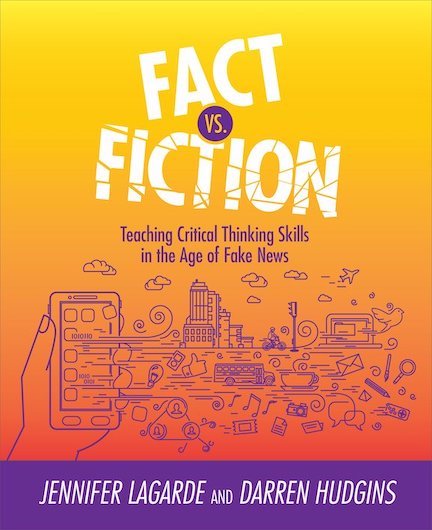
| |
|
B 97141B 97141 Falling in Love with Close Reading: Lessons for Analyzing Texts--and Life
Grade Lvl: T Author: Lehman, Christopher / Roberts, Kathleen
Length: 152 Copyright: 2013
Close reading can be rigorous, meaningful, and joyous. You'll empower students to not only analyze texts but to admire the craft of a beloved book, study favorite songs and videogames, and challenge peers in evidence-based discussions. Chris and Kate start with a powerful three-step close-reading ritual that students can apply to any text. Then they lay out practical, engaging lessons that not only guide students to independence in reading texts closely but also help them transfer this critical, analytical skill to media and even the lives they lead. Responsive to students' needs and field-tested in classrooms, these lessons include: strategies for close reading narratives, informational texts, and arguments suggestions for differentiation sample charts and student work from real classrooms connections to the Common Core State Standards a focus on viewing media and life in this same careful way. "We see the ritual of close reading not just as a method of doing the academic work of looking closely at text-evidence, word choice, and structure," write Chris and Kate, "but as an opportunity to bring those practices together to empower our students to see the subtle messages in texts and in their lives." |
Falling in Love with Close Reading: Lessons for Analyzing Texts--and Life T
 
| |
|
KM 13210KM 13210 Financial Literacy-1st Grade (4 books)
Grade Lvl: P Author:
Length: 0 Copyright: 2019
State of Iowa's Core Standards outline a path to help our students become financially literate. Financial literacy standards have been incorporated into the Social Studies standards to to ensure learning is addressed at all grade levels. This kit offers curriculum for the 1st grade student to support educators with teaching financial literacy that is developmentally appropriate and engaging. Included is a bound copy of the lesson plans for 1st Grade. Book titles include: Beatrice's Goat; AR 4.0. RC 3.5. Lexile 640. Brody Borrows Money; AR 2.4, RC 2.2. Lexile 510. GR L. Shanti Saves Her Money; AR 2.3. RC 2.4. Lexile 530. GR M. Clothesline Clues to Jobs People Do. AR 1.5. Lexile 490. Books and lesson guide has been donated by ISU Extension and Outreach. IL 1st Grade. |
Financial Literacy-1st Grade (4 books) P
 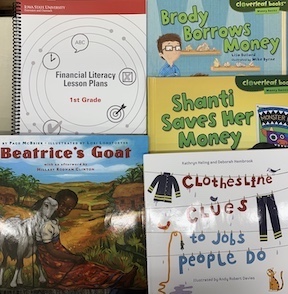
| |
|
KM 13211KM 13211 Financial Literacy-2nd Grade (3 books)
Grade Lvl: P Author:
Length: 0 Copyright: 2019
State of Iowa's Core Standards outline a path to help our students become financially literate. Financial literacy standards have been incorporated into the Social Studies standards to to ensure learning is addressed at all grade levels. This kit offers curriculum for the 2nd grade student to support educators with teaching financial literacy that is developmentally appropriate and engaging. Included is a bound copy of the lesson plans for 2nd Grade. Book titles include: A Chair for My Mother: AR 3.4. RC 3.3. Lexile 640. Rock, Brock and the Savings Shock; AR 5.0, GR M. Whose Hands are These? RC 1.4. Lexile 420. GR N. Books and lesson guide has been donated by ISU Extension and Outreach. IL 2nd Grade. |
Financial Literacy-2nd Grade (3 books) P
 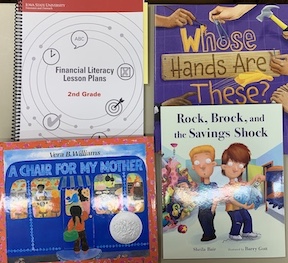
| |
|
KM 13212KM 13212 Financial Literacy-3rd Grade (3 books)
Grade Lvl: P Author:
Length: 0 Copyright: 2019
State of Iowa's Core Standards outline a path to help our students become financially literate. Financial literacy standards have been incorporated into the Social Studies standards to to ensure learning is addressed at all grade levels. This kit offers curriculum for the 3rd grade student to support educators with teaching financial literacy that is developmentally appropriate and engaging. Included is a bound copy of the lesson plans for 3rd Grade. A bound copy of the lesson plans for 3rd grade level. Book titles include: Ella Earns Her Own Money; AR 2.3. RC 2.2. Lexile 530. GR L. Kermit the Hermit; AR 5.1. RC 5.9. One Hen - How One Small Loan Made a Big Difference; AR 4.6. RC 4.7. Lexile 650. GR P. Books and lesson guide has been donated by ISU Extension and Outreach. IL 3rd Grade. |
Financial Literacy-3rd Grade (3 books) P
 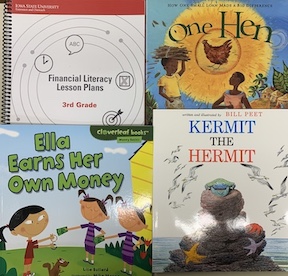
| |
|
KM 13213KM 13213 Financial Literacy-4th Grade (3 books)
Grade Lvl: I Author:
Length: 0 Copyright: 2019
State of Iowa's Core Standards outline a path to help our students become financially literate. Financial literacy standards have been incorporated into the Social Studies standards to to ensure learning is addressed at all grade levels. This kit offers curriculum for the 4th grade student to support educators with teaching financial literacy that is developmentally appropriate and engaging. Included is a bound copy of the lesson plans for 4th Grade. Book titles include: The Good Garden: How One Family Went from Hunger to Having Enough; AR 5.1. RC 5.4. Lexile 820. GR O. Those Shoes; AR 3.1. RC 3.2. Lexile 550. GR L. Tops & Bottoms; AR 3.2. RC 3.8. Lexile 580. GR M. Books and lesson guide has been donated by ISU Extension and Outreach. IL 4th Grade. |
Financial Literacy-4th Grade (3 books) I
 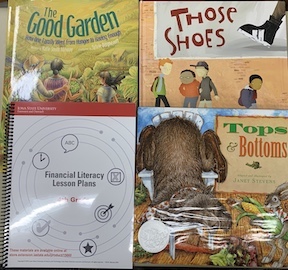
| |
|
KM 13214KM 13214 Financial Literacy-5th Grade (3 books)
Grade Lvl: I Author:
Length: 0 Copyright: 2010
State of Iowa's Core Standards outline a path to help our students become financially literate. Financial literacy standards have been incorporated into the Social Studies standards to to ensure learning is addressed at all grade levels. This kit offers curriculum for the 5th grade student to support educators with teaching financial literacy that is developmentally appropriate and engaging. Included is a bound copy of the lesson plans for 5th Grade. Book titles include: Gabriel Gets a Great Deal; AR 2.2. RC 2.2. Lexile 500. GR L. My Rows and Piles of Coins; AR 3.8. RC 4.1. Lexile 760. Uncle Willie and the Soup Kitchen; AR 3.3. RC 3.1. Lexile 560. Books and lesson guide has been donated by ISU Extension and Outreach. IL 5th Grade. |
Financial Literacy-5th Grade (3 books) I
 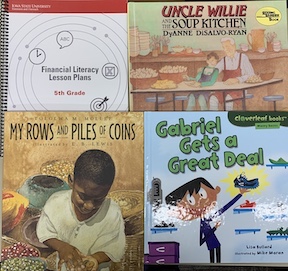
| |
|
KM 13209KM 13209 Financial Literacy-Kindergarten (3 books)
Grade Lvl: K Author:
Length: 0 Copyright: 2019
State of Iowa's Core Standards outline a path to help our students become financially literate. Financial literacy standards have been incorporated into the Social Studies standards to to ensure learning is addressed at all grade levels. This kit offers curriculum for the kindergarten student to support educators with teaching financial literacy that is developmentally appropriate and engaging. Included is a bound copy of the lesson plans for Kindergarten. Book titles include: Joseph Had a Little Overcoat; IL Pres-2. AR 1.7, RC 1.9. Lexile 330. GR I. Lily Learns About Wants and Needs; IL Pres-2. AR 2.0. RC 1.7. Lexile 490, GR K. Whose Tools are These? IL Pres-2. AR 3.5, Lexile 580. GR J. Books and lesson guide has been donated by ISU Extension and Outreach. IL Kindergarten. |
Financial Literacy-Kindergarten (3 books) K
 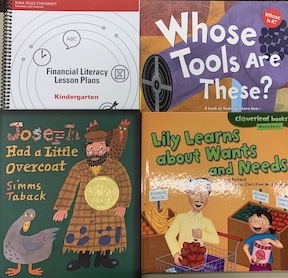
| |
|
KM 13253KM 13253 Fractions SOAR Kit
Grade Lvl: PI Author:
Length: 0 Copyright: 2015
The Supporting Ongoing Achievement Responsively (SOAR) learning series was designed to identify and support students' mathematical understanding that is in need of further inquiry and development. SOAR Survey Tools offer teacher support in 3 parts: a set of survey questions, a monitoring checklist, and tiered survey summary. SOAR Activities are intervention activities designed and sequenced to support students across tiers of intervention. Each activity is aligned to the survey tool and designed to support student learning in areas of need. Each activity outlines mathematical foci, identifies the essential mathematical understandings, and provides questions to target understandings. Contact Keystone AEA Math Consultants for further information and implementation. Mathematics Number and Operations: Fractions. Three week loan period. IL 3-6. |
Fractions SOAR Kit PI
 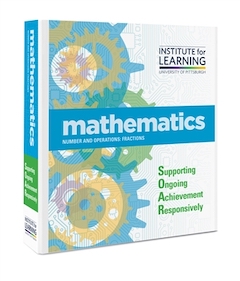
| |
|
B 96954B 96954 From Striving to Thriving: How to Grow Confident, Capable Readers
Grade Lvl: T Author: Harvey, Stephanie / Ward, Annie
Length: 320 Copyright: 2017
Demonstrates how to “table the labels” and use detailed formative assessments to craft targeted, personalized instruction that enable striving readers to do what they need above all - to find books they love and engage in voluminous reading. Loaded with ready-to-go lessons, routines, and “actions,” as well as the latest research. |
From Striving to Thriving: How to Grow Confident, Capable Readers T
 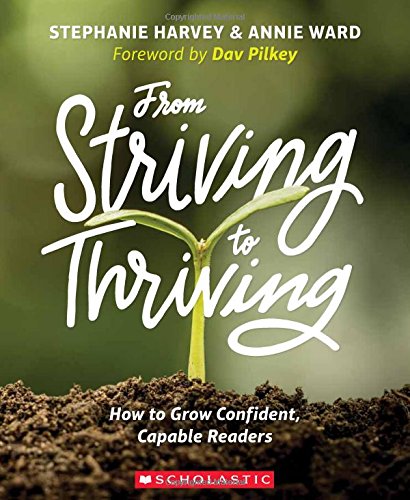
| |
|
KM 13438KM 13438 Geodes: Level 1 Module 1: Sets 1-4: A World of Books
Grade Lvl: KP Author:
Length: 0 Copyright: 2019
Geodes Level 1, Module 1 Sets 1 through 4. Offers students an opportunity to explore the power of books shared across time and culture. Level 1, Module 1 - Sets 1 through 4 offers readers literary and informational text experiences. Included in this module are full color, paperback books including 16 titles with access to multiple copies of each title. Titles in this set include: Set 1: Sharing Stories: Anansi and the Pot of Beans, The Story in the Cave, The Magical Stack, The Brothers Grimm. Set 2: Unusual Libraries: Library Cat, The Story Ship, A Library of Our Own, The Library of Fez. Set 3: Bringing Books to Life: Just in Time, Feb by Art the Work of Leo Lion, Jerry Draws, an Illustrator at Work. Set 4: Books for All: How to Make Paper, The Printing Press, The Story of Louis Braille, and A Library to Go. Also included in this kit is Inside Geodes®, a teacher resource that includes a comprehensive introduction to the module design and components and provides recommendations for implementation. K-3. |
Geodes: Level 1 Module 1: Sets 1-4: A World of Books KP
 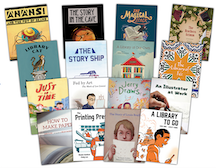
| |
|
KM 13439KM 13439 Geodes: Level 1 Module 2: Set 1-4: Creature Features
Grade Lvl: KP Author:
Length: 0 Copyright: 2019
Geodes Level 1, Module 2, Sets 1 through 4. Offers students an opportunity to explore the power of books shared across time and culture. Level 1, Module 2 - Sets 1 through 4 offers readers literary and informational text experiences. Included in this module are full color, paperback books including 16 titles with access to multiple copies of each title. Titles in this set include: Set 1: Creature Code: Vervet Monkey Alarm, Smell Tells, Bee Waggle, and Elephant Talk. Set 2: Safety First: Super Spiny Mouse, Thorny Devil, The Crab and the Urchin, and Stick with Us. Set 3: Curious Creatures: Small Wonders, A Wish to Fly, One Look, and Slug Study. Set 4: Rabbits and Hares, Oh My! Rabbit or Hare?, Draw a Rabbit, The Hares and the Frogs, and Young Hare. Also included in this kit is Inside Geodes®, a teacher resource that includes a comprehensive introduction to the module design and components and provides recommendations for implementation. K-3. |
Geodes: Level 1 Module 2: Set 1-4: Creature Features KP
 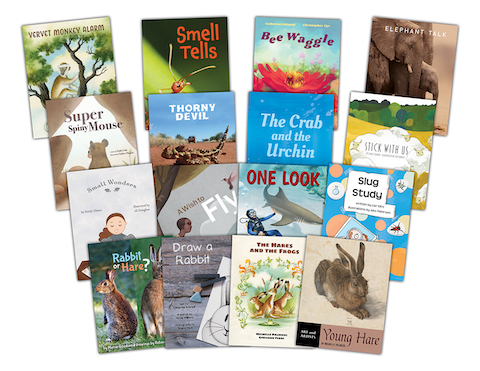
| |
|
KM 13440KM 13440 Geodes: Level 1 Module 3: Sets 1-4: Powerful Forces
Grade Lvl: KP Author:
Length: 0 Copyright: 2019
Geodes Level 1, Module 3 Sets 1 through 4. Offers students an opportunity to explore the power of books shared across time and culture. Level 1, Module 3 - Sets 1 through 4 offers readers literary and informational text experiences. Included in this module are full color, paperback books including 16 titles with access to multiple copies of each title. Titles in this set include: Set 1: Wind and Earth: Seed Scatter, In Motion, Crafted by the Wind, and A Growing Wind. Set 2: Blown Away: Soaring, Kite Messengers, Full Sail Ahead: A Viking Story, and The Wright Brothers. Set 3: Catching the Wind: Wind Giants, Towers of Nastifan, Fire at the Mill, and Mondrian. Set 4: The Mighty Wind, Measure the Wind, The Great Storm of Galveston, The Dust Bowl, and Ride the Storm. Also included in this kit is Inside Geodes®, a teacher resource that includes a comprehensive introduction to the module design and components and provides recommendations for implementation. K-3. |
Geodes: Level 1 Module 3: Sets 1-4: Powerful Forces KP
 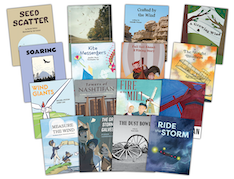
| |
|
KM 13441KM 13441 Geodes: Level 1 Module 4: Sets 1-4: Cinderella Stories
Grade Lvl: KP Author:
Length: 0 Copyright: 2019
Geodes Level 1, Module 4 Sets 1 through 4. Offers students an opportunity to explore the power of books shared across time and culture. Level 1, Module 4 - Sets 1 through 4 offers readers literary and informational text experiences. Included in this module are full color, paperback books including 16 titles with access to multiple copies of each title. Titles in this set include: Set 1: France: Cinderella, Old Tale, New Twist, World Traveler: Eiffel Tower, and First Steps. Set 2: Egypt: The King and the Sandal, One Sign at a Time, World Traveler: The Sphinx, and Shoes Tell a Tale Set 3: Ireland: Billy Beg and His Bull, Book of Kelli, World Traveler: Hook Lighthouse, and Castles. Set 4: Russia: Cinderella on Stage, A Musical Life: The Work of Sergei Prokofiev, World Traveler: St. Basil's Cathedral and All the World's A Stage. Also included in this kit is Inside Geodes®, a teacher resource that includes a comprehensive introduction to the module design and components and provides recommendations for implementation. K-3. |
Geodes: Level 1 Module 4: Sets 1-4: Cinderella Stories KP
 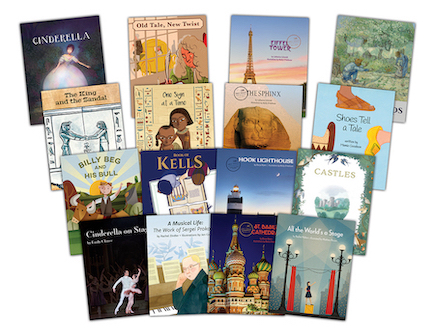
| |
|
KM 13443KM 13443 Geodes: Level 2 Module 1: Sets 1-4: A Season of Change
Grade Lvl: KP Author:
Length: 0 Copyright: 2020
Geodes Level 2, Module 1: Sets 1 through 4. Offers students an opportunity to explore the power of books shared across time and culture. Level 2, Module 1 - Sets 1 through 4 offers readers literary and informational text experiences with recurring content words used throughout the text. Included in this module are full color, paperback books including 16 titles with access to multiple copies of each title. Titles in this set include: Set 1: Get Ready for Fall: Seed Stash, Cranberry Crop, Leaves, and Born to Fly. Set 2: Winter's Chill: Winters USA, Arctic Caterpillar, The Evergreen Tale and Daytime Darkness. Set 3: Spring to Life: Spring Fever, Sap to Syrup, Finch Study, and Blossom. Set 4: Summer Sun: Road Trip, Bathers, Nature's Thermometer, and Summer Snow. Also included in this kit is Inside Geodes®, a teacher resource that includes a comprehensive introduction to the module design and components and provides recommendations for implementation. Two week loan period. K-3. |
Geodes: Level 2 Module 1: Sets 1-4: A Season of Change KP
 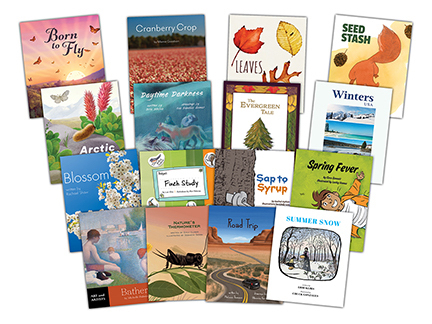
| |
|
KM 13444KM 13444 Geodes: Level 2 Module 2: Sets 1-4: The American West
Grade Lvl: KP Author:
Length: 0 Copyright: 2020
Geodes Level 2, Module 2: Sets 1 through 4. Offers students an opportunity to explore the power of books shared across time and culture. Level 2, Module 2 - Sets 1 through 4 offers readers literary and informational text experiences with recurring content words used throughout the text. Included in this module are full color, paperback books including 16 titles with access to multiple copies of each title. Titles in this set include: Set 1: Looking West: The West Is..., The Lakota and the Buffalo, Mesa Village, and Nez Percé: The People. Set 2: Go West!: Wagon Tracks, The Pony Express, East Meets West, and We Must Try. Set 3: Majestic Mountains: Eagle Eye, Among the Sierra Nevada, More Than Gold, and The Legend of El Capitan: A Miwok Story. Set 4: Mavericks of the West: Wagons and Yokes, Horizons, Esther Hobart Morris, and Walking with the President. Also included in this kit is Inside Geodes®, a teacher resource that includes a comprehensive introduction to the module design and components and provides recommendations for implementation. Two week loan period. K-3. |
Geodes: Level 2 Module 2: Sets 1-4: The American West KP
 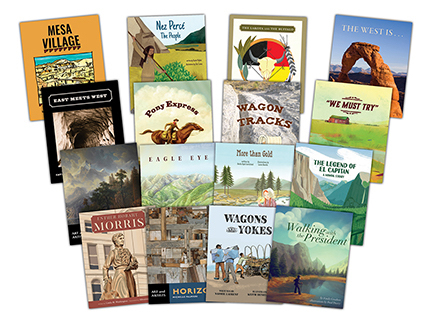
| |
|
KM 13445KM 13445 Geodes: Level 2 Module 3: Sets 1-4: Civil Rights Heroes
Grade Lvl: KP Author:
Length: 0 Copyright: 2020
Geodes Level 2, Module 3: Sets 1 through 4. Offers students an opportunity to explore the power of books shared across time and culture. Level 2, Module 3 - Sets 1 through 4 offers readers literary and informational text experiences with recurring content words used throughout the text. Included in this module are full color, paperback books including 16 titles with access to multiple copies of each title. Titles in this set include: Set 1: Right to Learn: Brown vs Board of Education, And the Winner Is..., Bring a Chair, and Free to Move. Set 2: Extraordinary: Sampson's Disguise, Robinson and Rickey, Zaha Hadid, and Stop,Wait,Start. Set 3: Uniting Communities: Just Like Jane, Gordan Parks, We Will Ride and The Paralympics. Set 4: I Voted: A Vote is a Voice, Expanding the Right to Vote, Susan Adds Her Name and My Freedom Story. Also included in this kit is Inside Geodes®, a teacher resource that includes a comprehensive introduction to the module design and components and provides recommendations for implementation. Two week loan period. K-3. |
Geodes: Level 2 Module 3: Sets 1-4: Civil Rights Heroes KP
 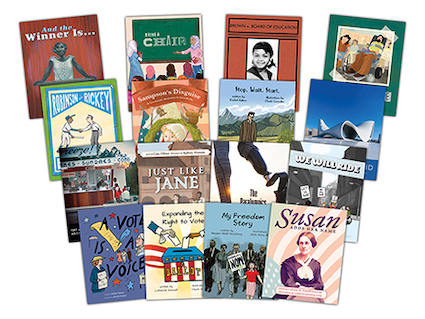
| |
|
KM 13446KM 13446 Geodes: Level 2 Module 4: Sets 1- 4: Good Eating
Grade Lvl: KP Author:
Length: 0 Copyright: 2020
Geodes Level 2, Module 4: Sets 1 through 4. Offers students an opportunity to explore the power of books shared across time and culture. Level 2, Module 4 - Sets 1 through 4 offers readers literary and informational text experiences with recurring content words used throughout the text. Included in this module are full color, paperback books including 16 titles with access to multiple copies of each title. Titles in this set include: Set 1: Food to Fuel: The Inside Scoop, Stomach vs. Tongue, How Do You Chew? and Body of Water. Set 2: Power Up: Sick at Sea, Bone Builder, Space Menu, and Please Pass the Bugs. Set 3: Farm to Table: Garden Study, Milk to Mozzarella, Thank You Mr. Peanut Man, and Rice Staircase. Set 4: Celebrating with Food: Mooncakes, Lü'au, Matzo Meal, and Cakes. Also included in this kit is Inside Geodes®, a teacher resource that includes a comprehensive introduction to the module design and components and provides recommendations for implementation. Two week loan period. K-3. |
Geodes: Level 2 Module 4: Sets 1- 4: Good Eating KP
 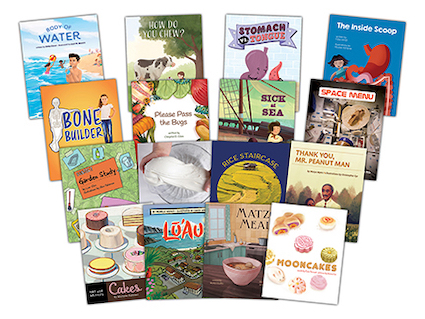
| |
|
KM 13434KM 13434 Geodes: Level K Module 1: Set 1 and 2: The Five Senses
Grade Lvl: KP Author:
Length: 0 Copyright: 2020
Paperback readers in full color. Students explore sensory experiences in South America and in museums around the world. Module 1 set 1 and 2 include story-focused Wordless Picture Books and six letter-sound based Sound Search Books. Wordless Picture Books boost students’ knowledge of story structure and vocabulary, while Sound Search Books grow students’ letter-sound awareness. Two week loan period. IL Pres-1. Module 1: Set 1: Explore South America 4 titles: 8 copies Pele (Wordless Picture Book), Fabric of the Andes (Sound Search- t, b, f), A Day at the Market, (Sound Search m, i, u) and Galapagos Adventure (Sound Search - f, n, m) Set 2 - Experience Museums 4 titles: 8 copies each Clay Army (Wordless Picture Book) Treasures of King Tut (Sound Search- g, d, s) Visit the Art Museum (Sound Search - c, o) Museum Cat (Sound Search - a, g) Includes Teacher Guide - Inside Geodes. |
Geodes: Level K Module 1: Set 1 and 2: The Five Senses KP
 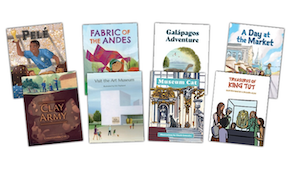
| |
|
KM 13435KM 13435 Geodes: Level K Module 2: Set 1 and Set 2: Once Upon a Farm
Grade Lvl: KP Author:
Length: 0 Copyright: 2020
Paperback readers in full color. Students explore sensory experiences in A Day's Work and Working the Land. Module 2: set 1 and set 2 offer story-focused Wordless Picture Books and six letter-sound based Sound Search Books. Wordless Picture Books boost students’ knowledge of story structure and vocabulary, while Sound Search Books grow students’ letter-sound awareness. Two week loan period. IL Pres-1 Set 1 - A Day's Work 4 titles: 8 copies each American Gothic (Wordless Picture Book) Red Barn Farm (Sound Search - e, r) Peach Picking (Sound Search - r, p, j) Lei Harvest (Sound Search - l, _l, h, k) Set 2 - Working on the Land 4 titles: 8 copies each Garden Party (Wordless Picture Book) Sheepdog (Sound Search _x, z, qu) Farmers Market (Sound Search w, y _x) Farm Work (Sound Search v, w) Includes Teacher Guide - Inside Geodes |
Geodes: Level K Module 2: Set 1 and Set 2: Once Upon a Farm KP
 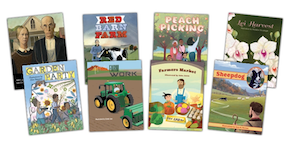
| |
|
KM 13436KM 13436 Geodes: Level K Module 3: Sets 1-4: America, Then and Now
Grade Lvl: KP Author:
Length: 0 Copyright: 2020
Paperback readers in full color. Through literary and informational text and illustrations, students explore America, Then and Now. All books are duet readers. Designed to be read by a student reader, and an adult reader. These books build decoding and word recognition skills. IL Pres-1 Set 1: Homelife (Duet books - student reader, adult reader) - Literary text. 4 titles: 6 copies of each title. Ice Harvest Three Sisters Bath Night Build a Log Cabin Set 2: Transportation (Duet books - student read, adult read) - Literary Nonfiction 4 titles: 6 copies of each title. Call a Cab (Book 1) The First Car to Get That Far (Book 2) The Golden Gate (Book 3) Fly, Amelia, Fly (Book 4) Set 3: American Made (Duet books - student reader, adult reader) - Literary Nonfiction Lightning Ben (Book 1) Frank's Ice Pops (Book 2) Ella Sang Back (Book 3) Scraping the Sky (Book 4) Set 4: National Symbols (Duet books - student reader, adult reader) - Informational Text The Flag is Up (Book 1) Statue of Liberty (Book 2) Sea To Shining Sea (Book 3) Washington Crossing the Delaware (Book 4) Includes Teacher Guide - Inside Geodes |
Geodes: Level K Module 3: Sets 1-4: America, Then and Now KP
 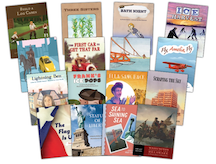
| |
|
KM 13437KM 13437 Geodes: Level K Module 4: Sets 1-4: Continents
Grade Lvl: KP Author:
Length: 0 Copyright: 2020
Paperback readers in full color. Through literary and informational text and illustrations, students explore Continents. All books are duet readers, designed to be read by a student reader, and an adult reader. These books build decoding and word recognition skills. IL Pres-1 Set 1: Australia - (Duet books - student reader, adult reader) Land of Wonder (Book 1) - Informational Jack, Jill and Joey (Book 2) - Literary The Great Reef (Book 3) - Literary Hop Around Sydney - (Book 4) - Literary Set 2: Africa - (Duet books - student reader, adult reader) Is that a Cat? (Book 1) - Informational Ladi's Pots (Book 2) - Informational Made of Mud (Book 3) - Literary Nonfiction Anansi and His Legs (Book 4) - Literary Set 3: Asia - (Duet books - student reader, adult reader) One-Dot (Book 1) - Literary Brush & Ink (Book 2) - Literary Floating Market (Book 3) - Literary Night Climb (Book 4) - Literary Set 4: Exploring (Duet books - student reader, adult reader) Map to the Past (Book 1) Informational Sit and Paint (Book 2) - Literary Nonfiction Tap-Tap to Tuk-Tuk (Book 3) - Informational Sky Laps (Book 4) - Literary Nonfiction Includes Teacher Guide - Inside Geodes. |
Geodes: Level K Module 4: Sets 1-4: Continents KP
 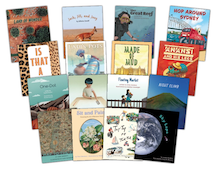
| |
|
B 97626B 97626 Guided Inquiry Design: A Framework for Inquiry in Your School
Grade Lvl: T Author: Kuhlthau, Carol C / Maniotes, Leslie K
Length: 188 Copyright: 2012
All sectors of society are turning to education to solve our pressing problems. In order for our children to grow into productive citizens who live successful lives in a changing world, they need to be able to think, learn, and create to be able to locate, evaluate, and use information effectively to do so. "Inquiry" has become the buzz word in today's schools. But teachers are asking, "How do we do it?" Guided Inquiry prepares today's learners for an uncertain future by providing the education that enables them to make meaning from myriad sources of information in a rapidly evolving world. This book, Guided Inquiry Design: A Framework for inquiry in your school explains how to do it. |
Guided Inquiry Design: A Framework for Inquiry in Your School T
 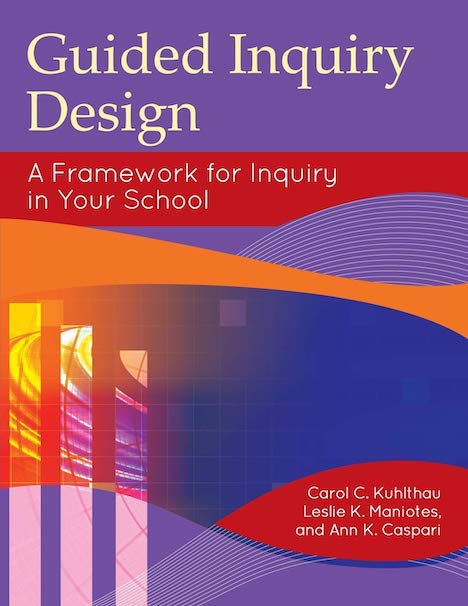
| |
|
B 96925B 96925 Habits of Mind Across the Curriculum: Practical and Creative Strategies for Teachers
Grade Lvl: T Author: Costa, Arthur L / Kallick, Bena
Length: 237 Copyright: 2009
Presents a collection of stories by educators around the world who have successfully implemented the habits in their day-to-day teaching in K 12 classrooms. The collective wisdom and experience of these thoughtful practitioners provide readers with insight into the transdisciplinary nature of the 16 Habits of Mind--intelligent behaviors that lead to success in school and the larger world--as well as model lessons and suggestions for weaving the habits into daily instruction in language arts, music, physical education, social studies, math, foreign language, and other content areas. Readers will come to understand that, far from an add-on to the curriculum, the habits are an essential element for helping students at all grade levels successfully deal with the challenges they face in school and beyond. Practical examples are included in the text. |
Habits of Mind Across the Curriculum: Practical and Creative Strategies for T
 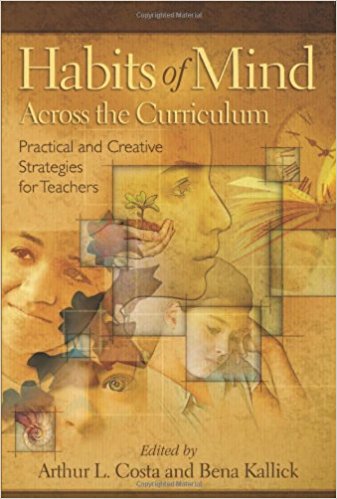
| |
|
B 97304B 97304 Head Start on Life Science: Encouraging a Sense of Wonder
Grade Lvl: T Author: Straits, William
Length: 209 Copyright: 2018
Nurture curiosity and even joy in the youngest scientists. The 24 inquiry-based lessons in this lively collection show you how. The activities are organized into sections on animals, plants, and nature walks. Rather than merely presenting science facts to 3- to 7-year-olds, you’ll prompt them to make discoveries of their own. They’ll explore critter camouflage, probe pumpkin insides, make bird feeders, and more. Each lesson includes lists of learning objectives and required materials, relevant background to help you prepare, plus at-home activities written in English and Spanish. Connections to multiple subjects—including reading, writing, math, dramatic play, and art allow teachers to offer related=integrated learning opportunities. |
Head Start on Life Science: Encouraging a Sense of Wonder T
 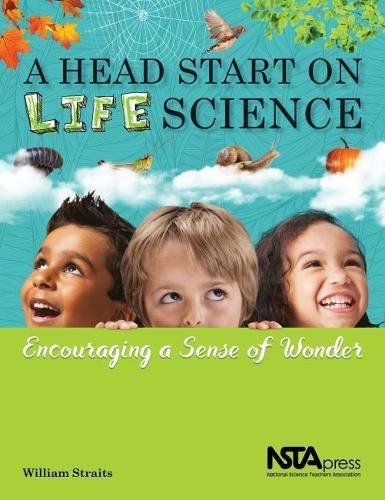
| |
|
B 97303B 97303 Head Start on Science, Second Edition: Encouraging a Sense of Wonder
Grade Lvl: T Author: Ritz, William C / Straits, William
Length: 324 Copyright: 2019
This book emphasizes child-centered development of science practices and skills. Children can explore the natural world as they take advantage of lively opportunities for science learning. But here’s what sets this book apart: It’s an all-in-one resource for caregivers and teachers from PreK to grade 2. Each lesson includes a follow-up activity, connections to centers and children’s literature, assessment guides, and bonus activities written in Spanish and English that let families continue the fun—and the learning—at home. Each activity also supports both the 2015 Head Start Early Learning Outcomes Framework and the Next Generation Science Standards. |
Head Start on Science, Second Edition: Encouraging a Sense of Wonder T
 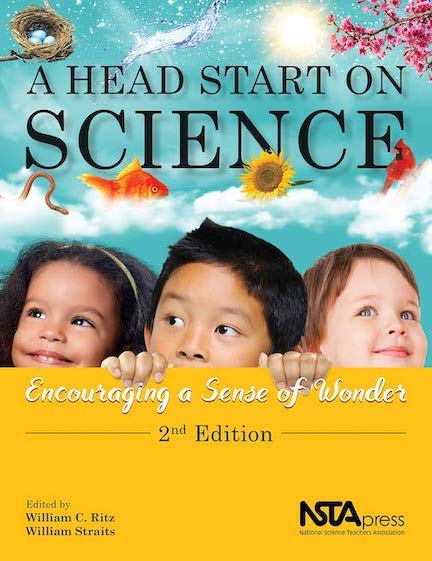
| |
|
B 96945B 96945 Helping Students Make Sense of the World Using Next Generation Science and Engineering Practices
Grade Lvl: T Author: Schwarz, Christina V / Passmore, Cindy
Length: 381 Copyright: 2017
Provides a play-by-play understanding of the practices strand of A Framework for K 12 Science Education (Framework) and the Next Generation Science Standards (NGSS). Written in clear, nontechnical language, this book provides a wealth of real-world examples to show you what s different about practice-centered teaching and learning at all grade levels. The book addresses three important questions: 1. How will engaging students in science and engineering practices help improve science education? 2. What do the eight practices look like in the classroom? 3. How can educators teach the practices to support the NGSS? Helping Students Make Sense of the World Using Next Generation Science and Engineering Practices was developed for K 12 science teachers, curriculum developers, teacher educators, and administrators. |
Helping Students Make Sense of the World Using Next Generation Science and T
 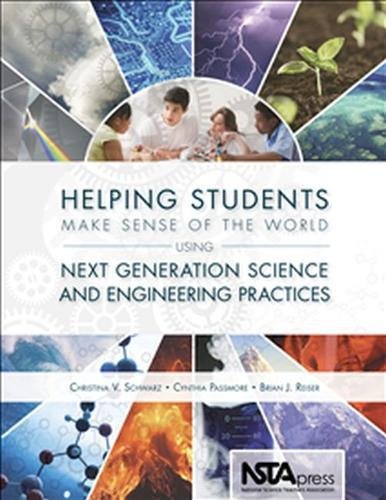
| |
|
B 97395B 97395 High Leverage Practices for Inclusive Classrooms
Grade Lvl: T Author:
Length: 343 Copyright: 2019
High Leverage Practices for Inclusive Classrooms offers a set of practices that are integral to the support of student learning, and that can be systematically taught, learned, and implemented by those entering the teaching profession. The book focuses primarily on Tiers 1 and 2, or work that mostly occurs with students with mild disabilities in general education classrooms; and provides rich, practical information highly suitable for teachers, but that can also be useful for teacher educators and teacher preparation programs. This research-based resource offers twenty-two brief, focused chapters that will be fundamental to effective teaching in inclusive classrooms. |
High Leverage Practices for Inclusive Classrooms T
 
| |
|
B 97330B 97330 High-Leverage Practices in Special Education: The Final Report of the HLP Writing Team
Grade Lvl: T Author:
Length: 135 Copyright: 2017
Special education teachers, as a significant segment of the teaching profession, came into their own with the passage of Public Law 94-142, the Education for All Handicapped Children Act, in 1975. Since then, although the number of special education teachers has grown substantially it has not kept pace with the demand for their services and expertise. The roles and practice of special education teachers have continuously evolved as the complexity of struggling learners unfolded, along with the quest for how best to serve and improve outcomes for this diverse group of students. High-Leverage Practices in Special Education defines the activities that all special educators needed to be able to use in their classrooms, from Day One. HLPs are organized around four aspects of practice collaboration, assessment, social/emotional/behavioral practices, and instruction because special education teachers enact practices in these areas in integrated and reciprocal ways. The HLP Writing Team is a collaborative effort of the Council for Exceptional Children, its Teacher Education Division, and the CEEDAR Center; its members include practitioners, scholars, researchers, teacher preparation faculty, and education advocates. |
High-Leverage Practices in Special Education: The Final Report of the HLP W T
 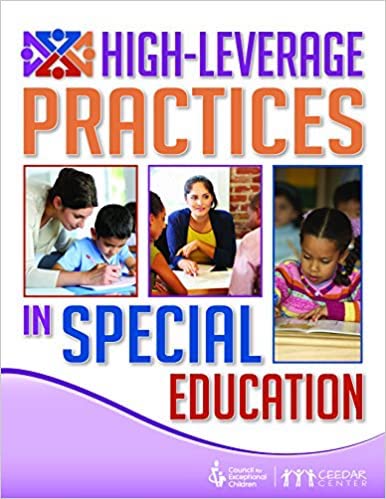
| |
|
B 96919B 96919 How to Reach the Hard to Teach: Excellent Instruction for Those Who Need It Most
Grade Lvl: T Author: Echevarria, Jana / Frey, Nancy
Length: 178 Copyright: 2016
Strategies informed by principles of effective instruction, the SIOP® Model and the FIT Teaching® approach for breakthrough success with students who struggle in school. |
How to Reach the Hard to Teach: Excellent Instruction for Those Who Need It T
 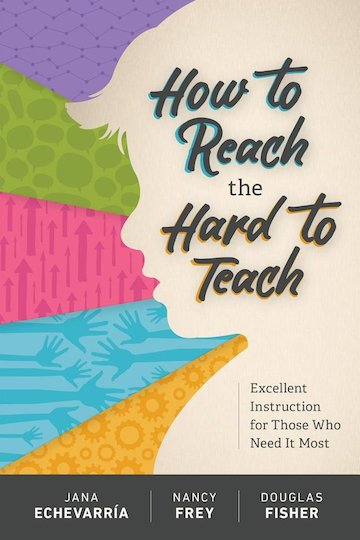
| |
|
B 97487B 97487 Improve Every Lesson Plan with SEL
Grade Lvl: T Author: Benson, Jeffrey
Length: 173 Copyright: 2021
Text offers explicit, step-by-step guidance on how to incorporate social and emotional learning (SEL) into K-12 lesson planning-without imposing a separate SEL curriculum. The book identifies SEL skills in three broad categories: skills for self, interpersonal skills, and skills as a community member. It offers research-based strategies for seamlessly integrating these skills into every section of lesson plans, from introducing a topic in a way that sparks students' interest, to accessing prior knowledge, providing direct instruction, allowing time for experimentation and discovery, using formative assessment, and closing a lesson in a purposeful way. |
Improve Every Lesson Plan with SEL T
 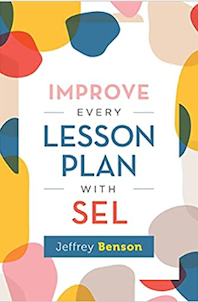
| |
|
B 97456B 97456 Inclusive Learning 365: Edtech Strategies for Every Day of the Year
Grade Lvl: T Author: Bugaj, Christopher / Janowski, Karen
Length: 384 Copyright: 2021
Educators across the world are working to design individualized instruction that empowers every student to become experts at learning. Technology and instructional interventions designed to support students with disabilities often eventually become mainstream and used by the masses. These practices provide a pathway for designing inclusive, equitable and accessible educational experiences that meet the needs of every individual learner. The text offers daily strategies accompanied by examples of tools that can be implemented immediately to design meaningful instruction. Inclusive education. Educational technology. Special education computer assisted instruction. |
Inclusive Learning 365: Edtech Strategies for Every Day of the Year T
 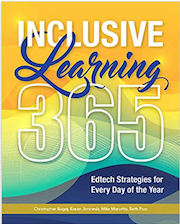
| |
|
B 96927B 96927 Inspiring Early Childhood Leadership: Eight Strategies to Ignite Passion and Transform Program Quality
Grade Lvl: T Author: MacDonald, Susan
Length: 144 Copyright: 2016
A positive, strengths-based leadership system is the key to transforming the quality of early childhood programs. Inspiring Early Childhood Leadership lays out strategies designed to support program leaders in finding new ways to reduce the levels of stress on themselves and their staff, and move into a unified, engaging system for leading with passion, intention, and purpose. Grounded in current research, the book incorporates decades-old best practices, making the strategies appropriate for leaders of all backgrounds. The book addresses common dilemmas: How do I motivate and inspire teachers? How can I be the most effective in observing and giving nonjudgmental feedback? How can I be more confident in my role as a leader? How can I manage my time more effectively? |
Inspiring Early Childhood Leadership: Eight Strategies to Ignite Passion an T
 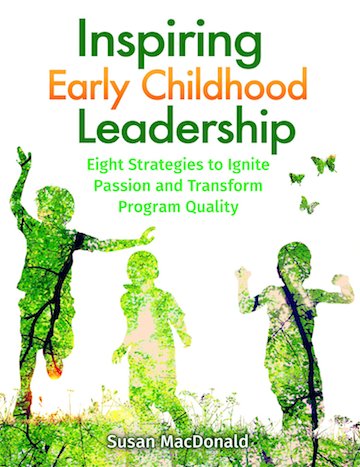
| |
|
B 97302B 97302 Instructional Sequence Matters, Grades 3-5: Explore Before Explain
Grade Lvl: T Author: Brown, Patrick
Length: 160 Copyright: 2020
nstructional Sequence Matters, Grades 3–5 is a one-stop resource that will inspire you to reimagine how you teach science in elementary school. The book discusses two popular approaches for structuring your lessons: POE (Predict, Observe, and Explain) and 5E (Engage, Explore, Explain, Elaborate, and Evaluate). It also shows how simple shifts in the way you arrange and combine activities will help young students construct firsthand knowledge, while allowing you to put the Next Generation Science Standards (NGSS) into practice. |
Instructional Sequence Matters, Grades 3-5: Explore Before Explain T
 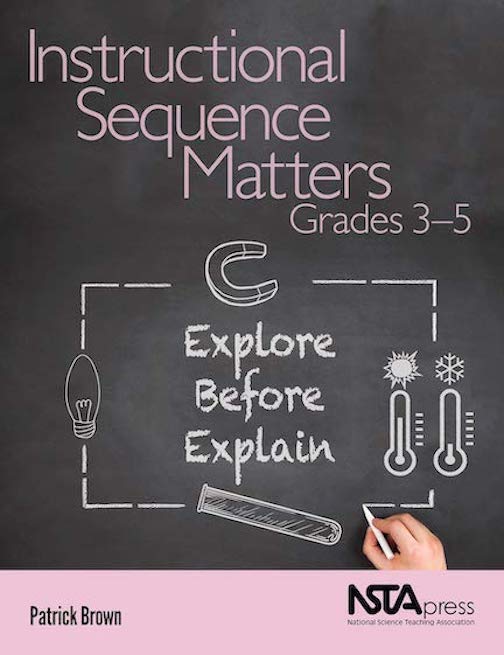
| |
|
B 97144B 97144 Integrated Multi-Tiered Systems of Support: Blending RTI and PBIS (The Guilford Practical Intervention in the Schools Series)
Grade Lvl: T Author: McIntosh, Kent / Goodman, Steve
Length: 356 Copyright: 2016
Many schools have implemented academic response to intervention (RTI) and schoolwide positive behavioral interventions and supports (PBIS) as separate initiatives. This book provides keys to making these programs more effective, seamless, efficient, and sustainable by combining them into a single multi-tiered system of support (MTSS). Steps and strategies are outlined for integrating data structures, practices, teams, and district systems. Contributing authors present detailed case examples of successful MTSS implementation in three states. In a large-size format with lay-flat binding, the book features 27 reproducible checklists and evaluation tools. Purchasers get access to a companion website where they can download and print the reproducible materials plus other helpful resources. |
Integrated Multi-Tiered Systems of Support: Blending RTI and PBIS (The Guil T
 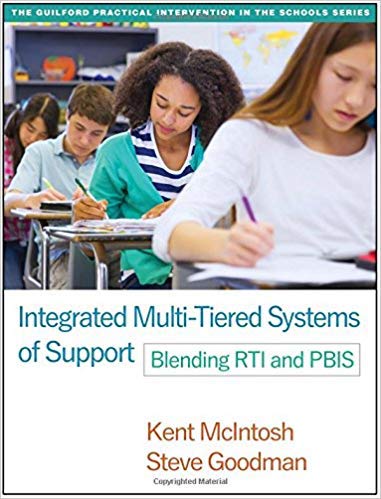
| |
|
B 97028B 97028 Integrating Transition Planning into the IEP Process
Grade Lvl: T Author:
Length: 160 Copyright: 2010
Written for the educator new to transition, this edition provides critical information including a thorough introduction to transition planning in a user-friendly question-and-answer format. Chapters include: legislation; self-determination; transition assessments; curriculum decision-making; support services; interagency planning; program evaluation; and resources. |
Integrating Transition Planning into the IEP Process T
 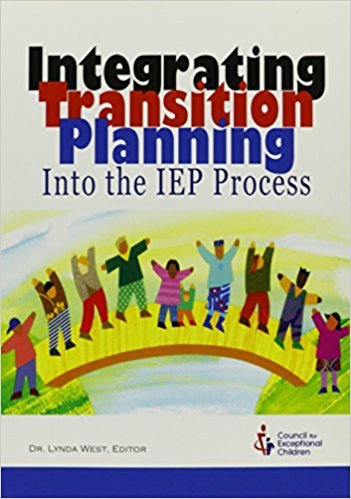
| |
|
B 97356B 97356 Interactive Class: Using Technology to Make Learning More Relevant and Engaging in the Elementary Classroom
Grade Lvl: T Author: Merrill, Joe / Merrill, Kristin
Length: 187 Copyright: 2019
Are you looking for ways to make teaching and learning more interactive in your classroom? Do you ever feel overwhelmed when it comes to integrating technology and content standards? Are you searching for lessons that you can immediately implement in your learning environment?!In this practical and idea-packed book, classroom teachers Joe and Kristin Merrill share their personal framework for teaching. Their text helps teachers: Define interactive learning and how to use it to instantly transform your learning space, Create long-lasting bonds with students and parents that will empower your learners and lead to success both in and out of the classroom, and Learn to PIVOT! and design interactive lessons that foster grit and challenge students to grow. |
Interactive Class: Using Technology to Make Learning More Relevant and Enga T
 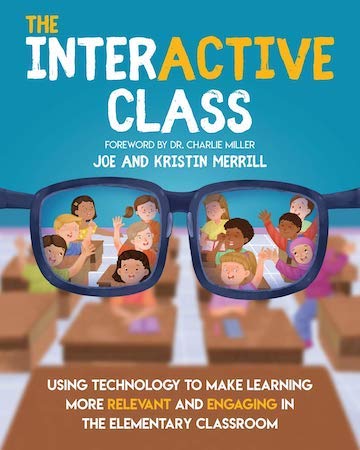
| |
|
B 97583B 97583 Intervention Reinvention: A Volume-Based Approach to Reading Success
Grade Lvl: T Author: Ward, Annie / Harvey, Stephanie
Length: 176 Copyright: 2021
Offers an easy-to-use decision-making guide that begins with key questions, leads you to make pinpointed observations about your striving readers, and then offers targeted lessons and actions you can take to help them make gains―and learn to love reading! |
Intervention Reinvention: A Volume-Based Approach to Reading Success T
 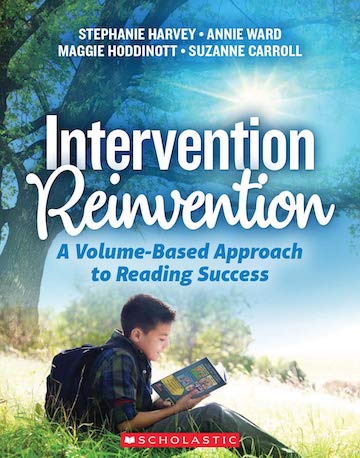
| |
|
KM 13087KM 13087 Kagan Structures
Grade Lvl: T Author: Kagan, Spencer / Kagan, Miguel
Length: 0 Copyright: 2016
Kagan Structures are revolutionary teaching strategies. Why? Because they create an unparalleled level of student engagement. Kagan Structures create a cooperative and caring class tone by putting students on the same side as they interact in pairs, small teams, and with classmates. Structures ensure every student is individually accountable so no one can hide and take a free ride. Structures create equal participation, which means all students are engaged a much greater percent of the time. In this must-have Kagan reference guide, you get 59 step-by-step Kagan Structures you'll use time and time again. More structures means more tools in your teaching toolbox to create more student engagement, more student learning, and more success! Flip chart also included. Professional kit. |
Kagan Structures T
 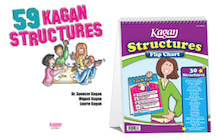
| |
|
KM 13088KM 13088 Kagan Win Win Discipline
Grade Lvl: T Author: Kagan, Spencer / Kyle, Patricia
Length: 0 Copyright: 2007
Win-Win Discipline is the single most comprehensive and effective classroom discipline program available. Period. Never before has there been a more practical and powerful step-by-step approach to discipline. Win-Win seeks a higher goal than other discipline programs: The goal is not merely to end disruptions; the goal is to teach students to meet their unmet needs so they no longer need to be disruptive. Watch disruptive behavior disappear as Win-Win... • Turns Anger into Rational Decision-Making • Replaces Boredom with Active Engagement • Channels Excess Energy into Productive Learning • Transforms Attention-Seeking into Self-Validation • Ends Control-Seeking via Learned Self-Efficacy • Converts Avoidance of Failure into Self-Confidence Book and Flip Chart. Professional kit. |
Kagan Win Win Discipline T
 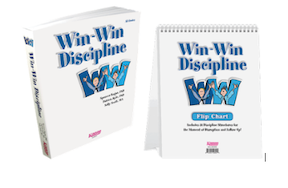
| |
|
B 96973B 96973 Kids First from Day One: A Teacher's Guide to Today's Classroom
Grade Lvl: T Author: Hertz, Christine / Mraz, Kristine
Length: 184 Copyright: 2018
Strengthen and deepen the connections between your love of working with kids, your desire to impact their lives, and your teaching practice. Kids First shares: plans for designing beautiful classroom spaces filled with fun, learning positive language and classroom routines that reduce disruptive behavior-without rewards and consequences, and suggestions for matching students' needs to high-impact teaching structures. Included in the pages are the authors' favorite "teacher stuff" like quick guides for challenging behavior, small-group planning grids, and parent letters as well as links to videos that model teaching practices explored in the text. |
Kids First from Day One: A Teacher's Guide to Today's Classroom T
 
| |
|
B 96928B 96928 Ladders to Literacy: A Preschool Curriculum, 2nd Edition
Grade Lvl: T Author: Notari-Syverson, Angela / O'Connor, Rollanda E
Length: 486 Copyright: 2007
Help the children in your preschool become successful early readers with this field-tested, activity-based curriculum, an effective way to supplement children's instruction without giving up current language arts programming. In this second edition, early childhood educators will get well-defined links between the activities and Head Start Recommended Outcomes, so teachers can be sure they're giving children the best start in literacy a scope-and-sequence chart that helps educators choose which activities to do each month more than 60 creative, field-tested games, crafts, role plays, and other activities that improve children's basic preliteracy skills such as writing words, recognizing letter sounds, and breaking words into syllables and phonemes fresh Tips for Teachers The book also includes developmentally appropriate, ecologically valid assessment procedures, ideal for evaluating children's skills and ensuring that they're making progress. Start using Ladders to Literacy today, and you'll equip children with the emergent literacy skills they'll need to succeed in kindergarten and beyond. |
Ladders to Literacy: A Preschool Curriculum, 2nd Edition T
 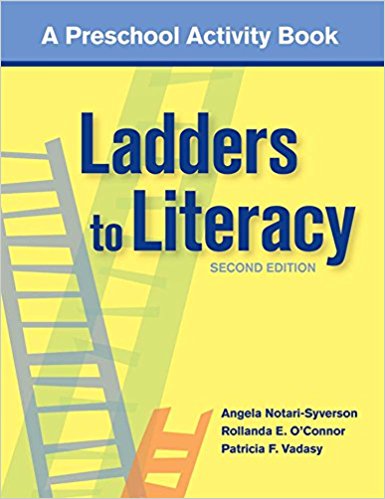
| |
|
B 97412B 97412 Learning Centers for School Libraries
Grade Lvl: T Author: Madigan, Maura
Length: 246 Copyright: 2021
Learning Centers for School Libraries contains detailed, step-by-step instructions and reproducible templates for over 20 learning centers. Professional text presents innovative, engaging, and fun ideas to target the AASL National School Library Standards and content-area standards. The ideas are flexible and can fit different grade levels and lesson lengths. |
Learning Centers for School Libraries T
 
| |
|
B 97178B 97178 Learning First, Technology Second: The Educator's Guide to Designing Authentic Lessons
Grade Lvl: T Author: Kolb, Liz
Length: 220 Copyright: 2017
Learning with technology does not happen because a specific tool “revolutionizes” education. It happens when proven teaching strategies intersect with technology tools, and yet it is not uncommon for teachers to use a tool because it is “fun” or because the developer promises it will help students learn. Learning First, Technology Second offers teachers the professional learning they need to move from arbitrary uses of technology in their classrooms to thoughtful ways of adding value to student learning. This book includes: an introduction to the Triple E Framework that helps teachers engage students in time-on-task learning, enhance learning experiences beyond traditional means and extend learning opportunities to bridge classroom learning with students’ everyday lives; effective strategies for using technology to create authentic learning experiences for their students; case studies to guide appropriate tech integration; and a lesson planning template to show teachers how to effectively frame technology choices and apply them in instruction. Educational technology. Technology integration. Methods and materials. Professional book. |
Learning First, Technology Second: The Educator's Guide to Designing Authen T
 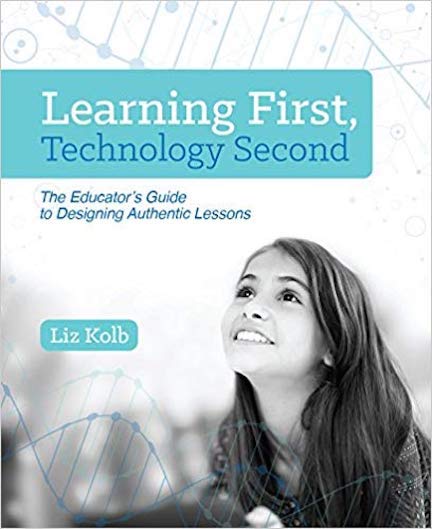
| |
|
B 97213B 97213 Learning on Your Feet: Incorporating Physical Activity into the K-8 Classroom
Grade Lvl: T Author: Johnson, Brad / Jones, Melody
Length: 119 Copyright: 2016
Educators learn how incorporating physical activity into the classroom can improve students’ engagement, achievement, and overall wellness. Students typically spend most of the day sitting at their desks, and many don’t have recess or PE. Research shows that regular exercise helps stimulate brain function and improve skills such as reading, critical thinking, organization, and focus. Authors Brad Johnson and Melody Jones, have consulted with schools across the globe on fitness issues, offer a variety of games and activities educators can use to integrate exercise into any class or subject area. |
Learning on Your Feet: Incorporating Physical Activity into the K-8 Classro T
 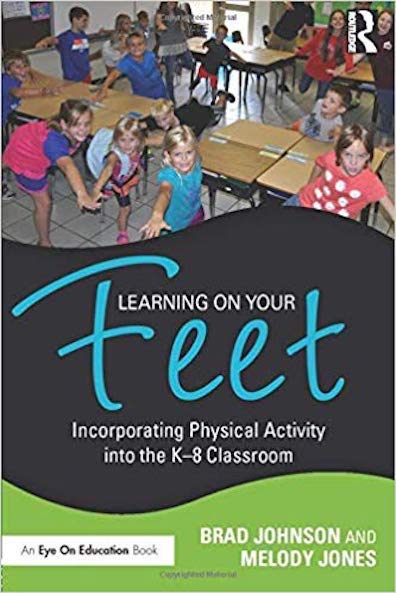
| |
|
B 97429B 97429 Learning That Sticks: A Brain-Based Model for K-12 Instructional Design and Delivery
Grade Lvl: T Author: Goodwin, Brian / Gibson, Tonia
Length: 157 Copyright: 2020
Learning That Sticks helps educators unpack the cognitive science underlying research-supported learning strategies so you can sequence them into experiences that challenge, inspire, and engage your students. As a result, you'll learn to teach with more intentionality and understanding not just what to do but also when and why to do it. By way of an easy-to-use six-phase model of learning, this book:* Analyzes how the brain reacts to, stores, and retrieves new information. * Helps educators "zoom out" to understand the process of learning from beginning to end. and * Helps educators "zoom in" to see what's going on in students' minds during each phase. Learning That Sticks helps shine a light onto learning in your classroom and fosters purposeful and powerful instructional practices. |
Learning That Sticks: A Brain-Based Model for K-12 Instructional Design and T
 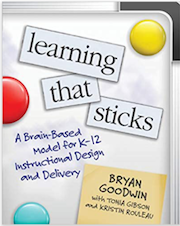
| |
|
B 97584B 97584 Literacy Strategies for Grades 1–2
Grade Lvl: T Author: Bowers, Erica
Length: 180 Copyright: 2024
Bring the science of reading directly into the classroom! Developed for Grades 1-2, this resource offers teachers thoughtful strategies to build students’ reading and writing skills. This book provides easy-to-use methods and lessons to give young learners practice with word recognition, reading comprehension and content knowledge, and writing. With these research-based strategies, first and second grade teachers can make reading and writing fun, meaningful, and effective! This book meets College and Career Readiness and other state standards. Professional book series: What the Science of Reading Says. |
Literacy Strategies for Grades 1–2 T
 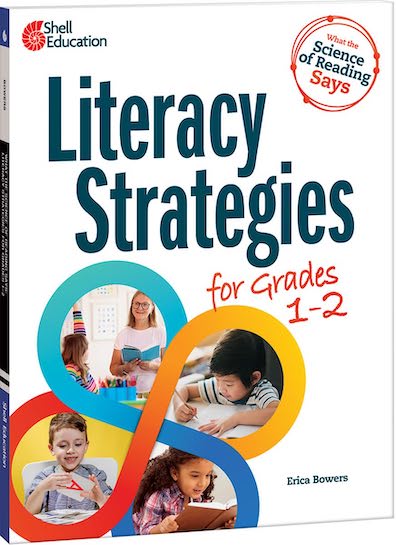
| |
|
B 97582B 97582 Literacy Strategies for Grades 3–5
Grade Lvl: T Author: Keisler, Laura
Length: 180 Copyright: 2024
Bring the science of reading directly into the classroom! Developed for Grades 3-5, this resource provides teachers with meaningful strategies to boost students’ reading and writing skills. This book offers easy-to-use lessons and methods to help students practice word recognition, reading comprehension and content knowledge, and writing. With these research-based strategies, third through fifth grade teachers can make reading and writing simple, fun, and effective! This book meets College and Career Readiness and other state standards. Professional series: What the Science of Reading Says. |
Literacy Strategies for Grades 3–5 T
 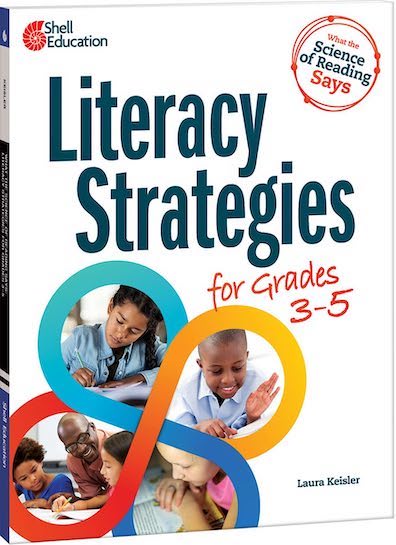
| |
|
B 97581B 97581 Literacy Strategies for Secondary Grades
Grade Lvl: T Author: Keisler, Laura
Length: 193 Copyright: 2024
Bring the science of reading directly into the classroom! Developed for Grades 6-12, this resource offers teachers meaningful strategies to build students’ reading and writing skills. Text provides easy-to-use methods and lessons to help older learners practice word recognition, reading comprehension and content knowledge, and writing. With these research-based strategies, middle and high school teachers can make reading and writing simple, engaging, and effective! This book meets College and Career Readiness and other state standards. Professional Series: What the Science of Reading Says. |
Literacy Strategies for Secondary Grades T
 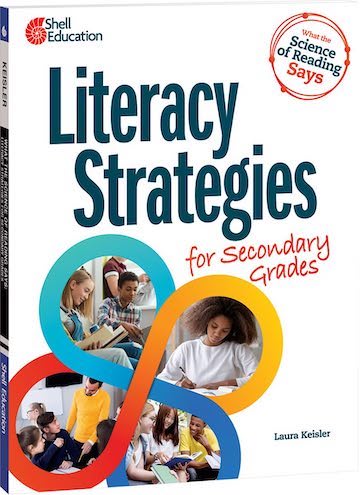
| |
|
KM 12850KM 12850 Living On Your Own Lesson Plans
Grade Lvl: T Author: Bastian, Don / Kinney, Tom
Length: 76 Copyright: 2015
Lesson Plans provide topic narratives, student objectives, teacher scripts, plus a PDF CD that includes the Survival Guide, Reader, and Activity Assessment Forms. Living on Your Own teaches a wide range of housekeeping activities and related interpersonal skills. Activities include the basics like setting the table and mopping the floor, outdoor maintenance, and living with roommates. |
Living On Your Own Lesson Plans T
 
| |
|
B 97137B 97137 Mastering Formative Assessment Moves: 7 High-Leverage Practices to Advance Student Learning
Grade Lvl: T Author: Duckor, Brent / Holmberg, Carrie
Length: 360 Copyright: 2017
Educators Brent Duckor and Carrie Holmberg invite you on the journey to becoming a formative assessor. Authors encourage educators to focus on these seven research-based, high-leverage formative assessment moves: Priming—building on background knowledge and creating a formative assessment rich, equitable classroom culture. Posing—asking questions in relation to learning targets across the curriculum that elicit Habits of Mind. Pausing—waiting after powerful questions and rich tasks to encourage more student responses by supporting them to think aloud and use speaking and listening skills related to academic language. Probing—deepening discussions, asking for elaborations, and making connections using sentence frames and starters. Bouncing—sampling student responses systematically to broaden participation, manage flow of conversation, and gather more "soft data" for instructional use. Tagging—describing and recording student responses without judgment and making public how students with different styles and needs approach learning in real-time. Binning—interpreting student responses with a wide range of tools, categorizing misconceptions and "p-prims," and using classroom generated data to make more valid and reliable instructional decisions on next steps in the lesson and unit. Each chapter explores a classroom-tested move, including foundational research, explaining how and when to best use it, and describing what it looks like in practice. Highlights include case studies, try-now tasks and tips, and advice from beginning and seasoned teachers who use these formative assessment moves in their classrooms. |
Mastering Formative Assessment Moves: 7 High-Leverage Practices to Advance T
 
| |
|
B 97379B 97379 Mastering Math Manipulatives Grades 4-8: Hands-On and Virtual Activities for Building and Connecting Mathematical Ideas
Grade Lvl: T Author: Moore, Sara Delano / Rimbey, Kimberly
Length: 259 Copyright: 2022
Mastering Math Manipulatives includes everything you need to integrate math manipulatives, both concrete and virtual, into math learning. Each chapter of this illustrated, guide focuses on a different powerful tool, such as two-color counters, linking cubes, base ten blocks, fraction manipulatives, pattern blocks, tangrams, geometric solids, and others, and includes a set of activities that demonstrate the many ways teachers can leverage manipulatives to model and reinforce math concepts for all learners. Text features: • Classroom strategies for introducing math manipulatives, into formal math instruction. • Step-by-step instructions for 75 activities that work with any curriculum. • Handy charts that sort activities by manipulative type, math topic, domains aligned with standards, and grade-level appropriateness. |
Mastering Math Manipulatives Grades 4-8: Hands-On and Virtual Activities fo T
 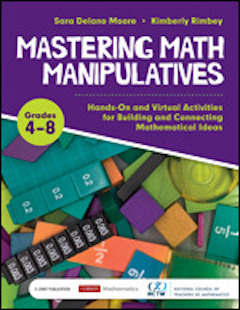
| |
|
B 97378B 97378 Mastering Math Manipulatives Grades K-3: Hands-On and Virtual Activities for Building and Connecting Mathematical Ideas
Grade Lvl: T Author: Moore, Sara Delano / Rimbey, Kimberly
Length: 287 Copyright: 2022
Mastering Math Manipulatives includes everything you need to integrate math manipulatives, both concrete and virtual, into math learning. Each chapter of this illustrated, guide focuses on a different powerful tool, such as two-color counters, linking cubes, base ten blocks, fraction manipulatives, pattern blocks, tangrams, geometric solids, and others, and includes a set of activities that demonstrate the many ways teachers can leverage manipulatives to model and reinforce math concepts for all learners. Text features: • Classroom strategies for introducing math manipulatives, into formal math instruction. • Step-by-step instructions for 75 activities that work with any curriculum. • Handy charts that sort activities by manipulative type, math topic, domains aligned with standards, and grade-level appropriateness. |
Mastering Math Manipulatives Grades K-3: Hands-On and Virtual Activities fo T
 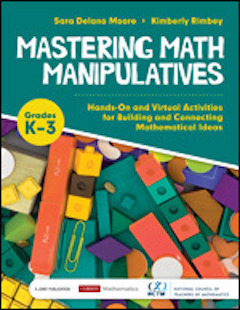
| |
|
KM 13258KM 13258 Math Pathways & Pitfalls Percents, Ratios, Proportions with Algebra Readiness (Grades 6-8)
Grade Lvl: T Author: Barnett-Clarke, Carne / Ramirez, Alma
Length: 0 Copyright: 2010
This volume of Math Pathways & Pitfalls K–8 curriculum helps students tackle stubborn pitfalls head-on and transform them into pathways for learning key standards for grades 6–8. The lessons in this book address percents, ratios, and proportions interwoven with algebraic reasoning. In rigorous research studies, Math Pathways & Pitfalls significantly increased student achievement for diverse students, including for English learners, in all grades tested. This kit contains everything a teacher needs to teach Math Pathways & Pitfalls with ease and success. Includes 22 complete lessons. Teaching manual, DVD video footage of Math Pathways & Pitfalls in action, CD with black line masters of student handouts, classroom quizzes, answer keys, and resources, Discussion Builders classroom poster and Teacher professional development tasks, activities, and video footage. Restricted to AEA 1 Math Consultants. IL 6-8. |
Math Pathways & Pitfalls Percents, Ratios, Proportions with Algebra Readine T
 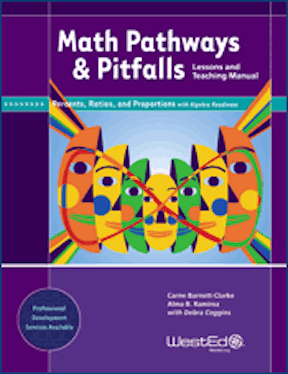
| |
|
B 97415B 97415 Media Literacy in the K-12 Classroom, 2nd Edition
Grade Lvl: T Author: Baker, Frank W
Length: 221 Copyright: 2016
Today's average youth spends over 10 hours a day consuming media. Aided by technology, young people can instantly share and engage with media messages to find answers, get directions, shop or connect with friends. But access alone doesn't lead to critical thinking. Media are texts, designed to be read, analyzed, deconstructed and reconstructed. Understanding how to interpret advertising messages, check for bias or avoid stereotyping are among the skills students need to become knowledgeable consumers and producers of media. This book helps educators understand the importance of teaching media literacy and gives them the tools needed to bring this form of literacy into the classroom. The text provides ways to bring media literacy into the K-12 classroom through any school subject matter, and teaches students skills that enable them to become knowledgeable media consumers and producers. |
Media Literacy in the K-12 Classroom, 2nd Edition T
 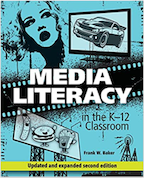
| |
|
B 97183B 97183 Megabook of Fluency
Grade Lvl: T Author: Rasinski, Timothy V / Smith, Melissa Cheesman
Length: 320 Copyright: 2018
Fluency expert Timothy V. Rasinski teams up with Melissa Cheesman Smith, a veteran fifth grade teacher, to help teachers effectively weave fluency work into their daily reading instruction. The book is packed with engaging text and tools, an assessment scale, and high quality ready-to-use lessons including text phrasing and tonality, echo reading, word ladders, and more! Given the importance of fluency— and its pivotal relationship to comprehension and word recognition—the potential is high for improving students’ overall reading achievement, and their performance in other content areas. |
Megabook of Fluency T
 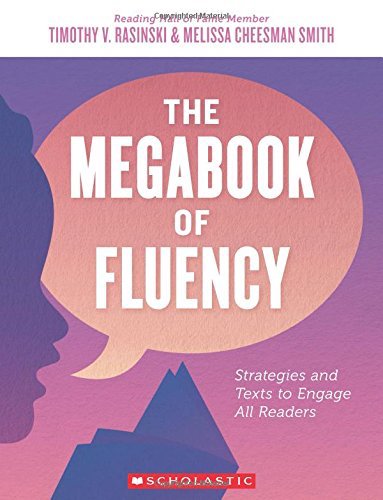
| |
|
B 97587B 97587 Micro Mentor Texts
Grade Lvl: T Author: Kittle, Penny
Length: 176 Copyright: 2022
Subtitle: Using Short Passages From Great Books to Teach Writer's Craft. At a time when students’ attention is being pulled in many directions, writing expert Penny Kittle shows us the power of helping them to focus in and communicate clearly. She does that through the study of "micro mentor texts." The text includes over 100 excerpts from acclaimed books, and the decisions authors make to craft those texts so they deeply engage readers. Her book also includes mini-lessons based on them-as well as many practice opportunities for students and demonstration videos for readers. Teaching language arts. Composition. Mentor texts. Reading. |
Micro Mentor Texts T
 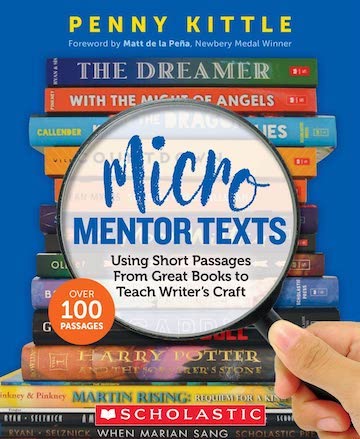
| |
|
B 96956B 96956 Mindful Teaching and Teaching Mindfulness: A Guide for Anyone Who Teaches Anything
Grade Lvl: T Author: Schoeberlein David, Deborah / Sheth, Suki
Length: 224 Copyright: 2009
Emphasizes how the teacher's personal familiarity with mindfulness plants the seed for an education infused with attention, awareness, kindness, empathy, compassion, and gratitude. |
Mindful Teaching and Teaching Mindfulness: A Guide for Anyone Who Teaches A T
 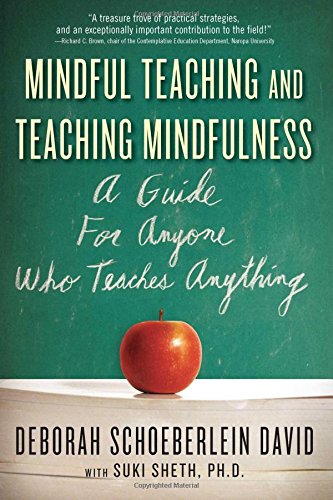
| |
|
B 96972B 96972 Mindset for Learning: Teaching the Traits of Joyful, Independent Growth
Grade Lvl: T Author: Mraz, Kristine / Hertz, Christine
Length: 192 Copyright: 2015
We want our students to take on challenges with zeal, to see themselves not as static test scores but as agents of change. Shows us how to lead students to a growth mindset for school-and life-by focusing on five crucial, research-driven attitudes: optimism-putting aside fear and resistance to learn something new persistence-keeping at it, even when a task is hard flexibility-trying different ways to find a solution resilience-bouncing back from setbacks and learning from failure empathy-learning by putting oneself in another person's shoes. A Mindset for Learning pairs research-psychological, neurological, and pedagogical-with practical classroom help, including instructional language, charts and visuals, teaching tips, classroom vignettes, and more. |
Mindset for Learning: Teaching the Traits of Joyful, Independent Growth T
 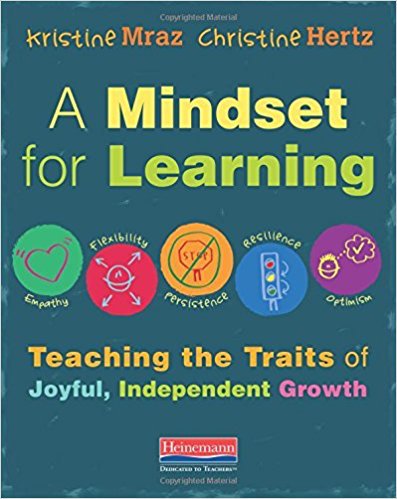
| |
|
B 97108B 97108 Mindset Mathematics: Visualizing and Investigating Big Ideas, Grade 3
Grade Lvl: T Author: Boaler, Jo / Munson, Jen
Length: 250 Copyright: 2018
Engage students in mathematics using growth mindset techniques. The most challenging parts of teaching mathematics are engaging students and helping them understand the connections between mathematics concepts. In this volume, teachers will find a collection of low floor, high ceiling tasks that will help engage students in math by looking at the big ideas at the third-grade level through visualization, play, and investigation. During their work with tens of thousands of teachers, authors Jo Boaler, Jen Munson, and Cathy Williams heard the same message—that they want to incorporate more brain science into their math instruction, but they need guidance in the techniques that work best to get across the concepts they needed to teach. So the authors designed Mindset Mathematics around the principle of active student engagement, with tasks that reflect the latest brain science on learning. Open, creative, and visual math tasks have been shown to improve student test scores, and more importantly change their relationship with mathematics and start believing in their own potential. The tasks in Mindset Mathematics reflect the lessons from brain science that: There is no such thing as a math person - anyone can learn mathematics to high levels. Mistakes, struggle and challenge are the most important times for brain growth. Speed is unimportant in mathematics. Mathematics is a visual and beautiful subject, and our brains want to think visually about mathematics. With engaging questions, open-ended tasks, and four-color visuals that will help kids get excited about mathematics, Mindset Mathematics is organized around nine big ideas which emphasize the connections within the Common Core State Standards (CCSS) and can be used with any current curriculum. |
Mindset Mathematics: Visualizing and Investigating Big Ideas, Grade 3 T
 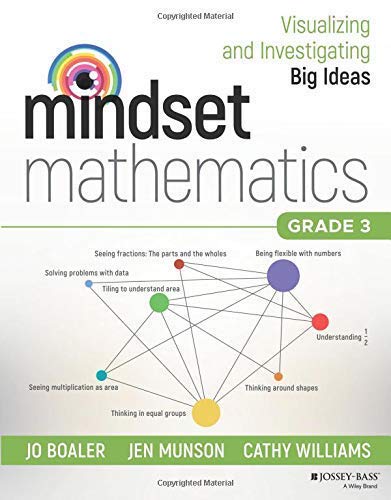
| |
|
B 96936B 96936 Mindset Mathematics: Visualizing and Investigating Big Ideas, Grade 4
Grade Lvl: T Author: Boaler, Jo / Munson, Jen
Length: 288 Copyright: 2017
A collection of low floor, high ceiling tasks that will help you teach mathematics, engage students and help them understand the connections between mathematics concepts by looking at the big ideas at the fourth-grade level through visualization, play, and investigation. |
Mindset Mathematics: Visualizing and Investigating Big Ideas, Grade 4 T
 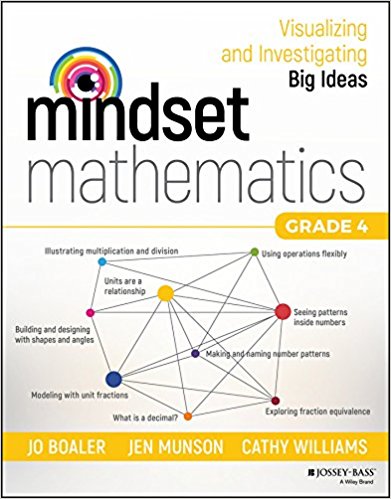
| |
|
B 97109B 97109 Mindset Mathematics: Visualizing and Investigating Big Ideas, Grade 5
Grade Lvl: T Author: Boaler, Jo / Munson, Jen
Length: 295 Copyright: 2018
Engage students in mathematics using growth mindset techniques. The most challenging parts of teaching mathematics are engaging students and helping them understand the connections between mathematics concepts. In this volume, teachers will find a collection of low floor, high ceiling tasks that will help students engage in mathematics by looking at the big ideas at the fifth-grade level through visualization, play, and investigation. During their work with tens of thousands of teachers, authors Jo Boaler, Jen Munson, and Cathy Williams heard the same message—that they want to incorporate more brain science into their math instruction, but they need guidance in the techniques that work best to get across the concepts they needed to teach. So the authors designed Mindset Mathematics around the principle of active student engagement, with tasks that reflect the latest brain science on learning. Open, creative, and visual mathematics tasks have been shown to improve student test scores, and more importantly change their relationship with mathematics and start believing in their own potential. The tasks in Mindset Mathematics reflect the lessons from brain science that: There is no such thing as a math person - anyone can learn mathematics to high levels. Mistakes, struggle and challenge are the most important times for brain growth. Speed is unimportant in mathematics. Mathematics is a visual and beautiful subject, and our brains want to think visually about mathematics. With engaging questions, open-ended tasks, and four-color visuals that will help kids get excited about mathematics, Mindset Mathematics is organized around nine big ideas which emphasize the connections within the Common Core State Standards (CCSS) and can be used with any current curriculum. |
Mindset Mathematics: Visualizing and Investigating Big Ideas, Grade 5 T
 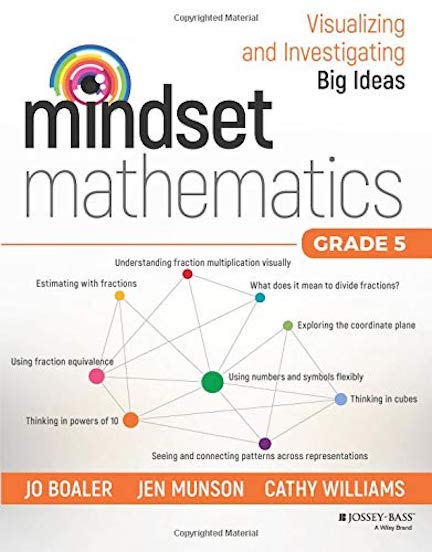
| |
|
B 97134B 97134 Mindset Mathematics: Visualizing and Investigating Big Ideas, Grade 6
Grade Lvl: T Author: Boaler, Jo / Munson, Jen
Length: 272 Copyright: 2019
Engage students in mathematics using growth mindset techniques. The most challenging parts of teaching mathematics is helping students understand the connections between mathematics concepts. In this text teachers will find a collection of low floor, high ceiling tasks that will help students make math connections, by looking at the big ideas at the grade level through visualization, play, and investigation. With engaging questions, open-ended tasks, and four-color visuals that will help kids get excited about mathematics, Mindset Mathematics is organized around nine big ideas which emphasize the connections within the Common Core State Standards (CCSS) and can be used with any current curriculum. Intended for use with Grade 6. |
Mindset Mathematics: Visualizing and Investigating Big Ideas, Grade 6 T
 
| |
|
B 97309B 97309 Mindset Mathematics: Visualizing and Investigating Big Ideas, Grade 7
Grade Lvl: T Author: Boaler, Jo / Munson, Jen
Length: 297 Copyright: 2019
Engage students in mathematics using growth mindset techniques. The most challenging parts of teaching mathematics is helping students understand the connections between mathematics concepts. In this text teachers will find a collection of low floor, high ceiling tasks that will help students make math connections, by looking at the big ideas at the grade level through visualization, play, and investigation. With engaging questions, open-ended tasks, and four-color visuals that will help kids get excited about mathematics, Mindset Mathematics is organized around nine big ideas which emphasize the connections within the Common Core State Standards (CCSS) and can be used with any current curriculum. Intended for use with Grade 7. |
Mindset Mathematics: Visualizing and Investigating Big Ideas, Grade 7 T
 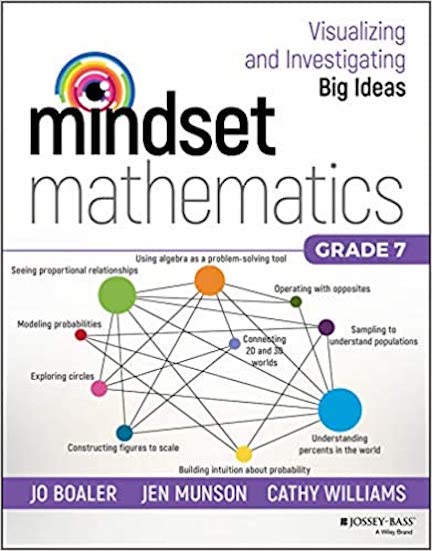
| |
|
B 97310B 97310 Mindset Mathematics: Visualizing and Investigating Big Ideas, Grade 8
Grade Lvl: T Author: Boaler, Jo / Munson, Jen
Length: 261 Copyright: 2020
Engage students in mathematics using growth mindset techniques. The most challenging parts of teaching mathematics is helping students understand the connections between mathematics concepts. In this text teachers will find a collection of low floor, high ceiling tasks that will help students make math connections, by looking at the big ideas at the grade level through visualization, play, and investigation. With engaging questions, open-ended tasks, and four-color visuals that will help kids get excited about mathematics, Mindset Mathematics is organized around nine big ideas which emphasize the connections within the Common Core State Standards (CCSS) and can be used with any current curriculum. Intended for use with Grade 8. |
Mindset Mathematics: Visualizing and Investigating Big Ideas, Grade 8 T
 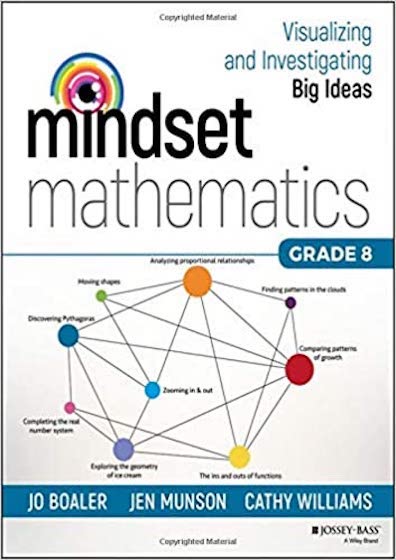
| |
|
B 97323B 97323 Mindset Mathematics: Visualizing and Investigating Big Ideas, Grade K
Grade Lvl: T Author: Boaler, Jo / Munson, Jen
Length: 250 Copyright: 2020
Engage students in mathematics using growth mindset techniques. The most challenging parts of teaching mathematics are engaging students and helping them understand the connections between mathematics concepts. In this volume, teachers will find a collection of low floor, high ceiling tasks that will help engage students in math by looking at the big ideas at the kindergarten level through visualization, play, and investigation.The authors designed Mindset Mathematics around the principle of active student engagement, with tasks that reflect the latest brain science on learning. Open, creative, and visual math tasks have been shown to improve student test scores, and more importantly change their relationship with mathematics and start believing in their own potential. The tasks in Mindset Mathematics reflect the lessons from brain science that: There is no such thing as a math person - anyone can learn mathematics to high levels. Mistakes, struggle and challenge are the most important times for brain growth. Speed is unimportant in mathematics. Mathematics is a visual and beautiful subject, and our brains want to think visually about mathematics. With engaging questions, open-ended tasks, and four-color visuals that will help kids get excited about mathematics, Mindset Mathematics is organized around nine big ideas which emphasize the connections within the Common Core State Standards (CCSS) and can be used with any current curriculum. |
Mindset Mathematics: Visualizing and Investigating Big Ideas, Grade K T
 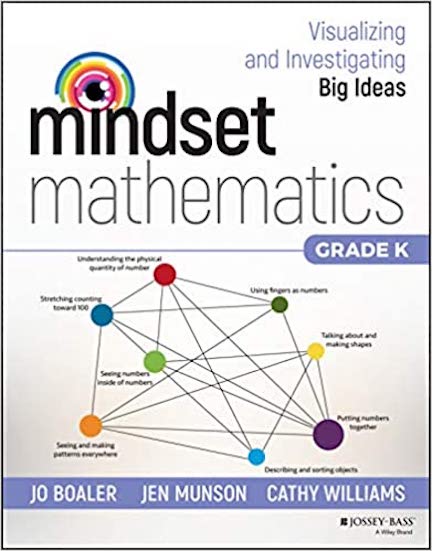
| |
|
KM 12826KM 12826 Mini-Qs in American History, Vol. 1
Grade Lvl: IJST Author:
Length: 0 Copyright: 2016
The DBQ Project Method provides a framework of best practices that guides teachers and students to read smart, think straight, and write clearly. The DBQ Project utilizes a 6-Step Method and delivers this methodology in all DBQs and Mini-Qs. Each step builds on students’ curiosity and increases motivation and confidence to answer a compelling, authentic question. Teachers across the country are using the DBQ Project with elementary, middle school, and high school students. Teacher scaffolding to serve the social studies learning experience and to meet the students' skill level will be key for successful implementation. DBQ - Document Based Questions. Mini-Qs in American History Volume 1 Twelve High-Interest Units of Study Cabeza de Vaca: How Did He Survive? Early Jamestown: Why Did So Many Colonists Die? What Caused the Salem Witch Trial Hystereia of 1692? Valley Forge: Would You Have Quit? How Did the Constitution Guard Against Tyranny? How Free Were Free Blacks in the North? Remembering the Alamo: A Personal Journal Was the United States Justified in Going to War With Mexico? The California Gold Rush: A Personal Journal What Was Harriet Tubman’s Greatest Achievement? The Battle of Gettysburg: Why Was It a Turning Point? North or South: Who Killed Reconstruction? |
Mini-Qs in American History, Vol. 1 IJST
 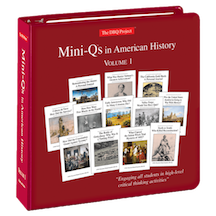
| |
|
KM 12813KM 12813 Mini-Qs in American History, Vol. 2
Grade Lvl: IJST Author:
Length: 0 Copyright: 2016
The DBQ Project Method provides a framework of best practices that guides teachers and students to read smart, think straight, and write clearly. The DBQ Project utilizes a 6-Step Method and delivers this methodology in all DBQs and Mini-Qs. Each step builds on students’ curiosity and increases motivation and confidence to answer a compelling, authentic question. Teachers across the country are using the DBQ Project with elementary, middle school, and high school students. Teacher scaffolding to serve the social studies learning experience and to meet the students' skill level will be key for successful implementation. DBQ - Document Based Questions. Mini-Qs in American History Volume 2 Twelve High-Interest Units of Study North or South: Who Killed Reconstruction? The Long Drive: Will You Re-Up Next Year? The Philanthropy of Andrew Carnegie: Did It Make Him a Hero? Should the United States Have Annexed the Philippines? Progressivism: Where Will You Put Your Million Dollars? Prohibition: Why Did America Change its Mind? What Caused the Dust Bowl? Why Did Japan Bomb Pearl Harbor? Berlin, Korea, Cuba: How Did the US Contain Communism? Politics or Principle: Why Did L.B.J. Sign the Civil Rights Act of 1964? What Made Cesar Chavez an Effective Leader? Should the US Drill for Oil in Alaska’s Wilderness? |
Mini-Qs in American History, Vol. 2 IJST
 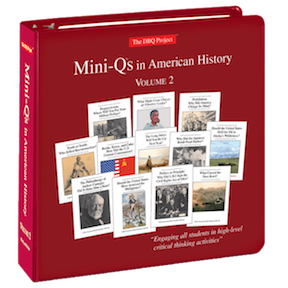
| |
|
KM 12814KM 12814 Mini-Qs in Civics
Grade Lvl: IJST Author:
Length: 0 Copyright: 2016
The DBQ Project Method provides a framework of best practices that guides teachers and students to read smart, think straight, and write clearly. The DBQ Project utilizes a 6-Step Method and delivers this methodology in all DBQs and Mini-Qs. Each step builds on students’ curiosity and increases motivation and confidence to answer a compelling, authentic question. Teachers across the country are using the DBQ Project with elementary, middle school, and high school students. Teacher scaffolding to serve the social studies learning experience and to meet the students' skill level will be key for successful implementation. DBQ - Document Based Questions. Mini-Qs in Civics Ten High-Interest Units of Study What Types of Citizen Does a Democracy Need? The Ideals of the Declaration: Which is the Most Important? The Preamble and the Federal Budget: Are We Slicing the Pie Correctly? How Did the Constitution Guard Against Tyranny? Should Schools Be Allowed to Limit Students’ Online Speech? Search and Seizure: Did the Government Go Too Far? Is the American Jury System Still a Good Idea? Should Americans be Required to Vote? Campaign Propaganda: Which Strategies Would You Use? Should the Electoral College Be Abolished? |
Mini-Qs in Civics IJST
 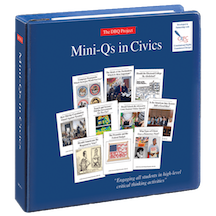
| |
|
KM 12815KM 12815 Mini-Qs in Economics
Grade Lvl: IJST Author:
Length: 0 Copyright: 2017
The DBQ Project Method provides a framework of best practices that guides teachers and students to read smart, think straight, and write clearly. The DBQ Project utilizes a 6-Step Method and delivers this methodology in all DBQs and Mini-Qs. Each step builds on students’ curiosity and increases motivation and confidence to answer a compelling, authentic question. Teachers across the country are using the DBQ Project with elementary, middle school, and high school students. Teacher scaffolding to serve the social studies learning experience and to meet the students' skill level will be key for successful implementation. DBQ - Document Based Questions. Mini-Qs in Economics Ten High-Interest Units of Study Does GDP Tell the Right Story? Is College Worth It? Are Corn Subsidies a Good Idea? How Should the U.S. Reduce Economic Inequality? Fixing a Broken Economy: Did Reagan Get It Right? Fixing a Broken Economy: Did Obama Get It Right? Businesses and Food Waste: What Story Should Be Told? Stopping Food Waste: What Works for Our School? Is the Fed Good for America? How Much Should We Worry about the National Debt? |
Mini-Qs in Economics IJST
 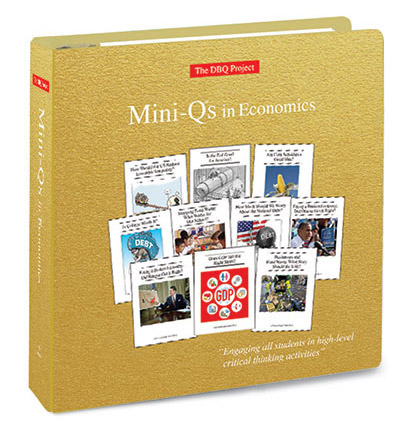
| |
|
KM 12816KM 12816 Mini-Qs in Geography
Grade Lvl: IJST Author:
Length: 0 Copyright: 2016
The DBQ Project Method provides a framework of best practices that guides teachers and students to read smart, think straight, and write clearly. The DBQ Project utilizes a 6-Step Method and delivers this methodology in all DBQs and Mini-Qs. Each step builds on students’ curiosity and increases motivation and confidence to answer a compelling, authentic question. Teachers across the country are using the DBQ Project with elementary, middle school, and high school students. Teacher scaffolding to serve the social studies learning experience and to meet the students' skill level will be key for successful implementation. DBQ - Document Based Questions. Mini-Qs in Geography Eleven High-Interest Units of Study A Question of Scale: How Wealthy Is Brazil? China’s One-Child Policy: Was It a Good Idea? What Is the Most Important Consequence of Climate Change? Is Gentrification Good for Vancouver’s Downtown Eastside? The Great Migration: A Personal Journal Globalization at the Border: Has NAFTA Kept Its Promises to Mexican Workers? What Is Driving China’s Water-Scarcity Crisis? The European Union: Do the Benefits of Membership Outweigh the Costs? Famine in Ethiopia: How Did the Government Make It Worse? Is Chocolate Good for Cote d’Ivoire? The Syrian Civil War: What Is Fueling the Violence? |
Mini-Qs in Geography IJST
 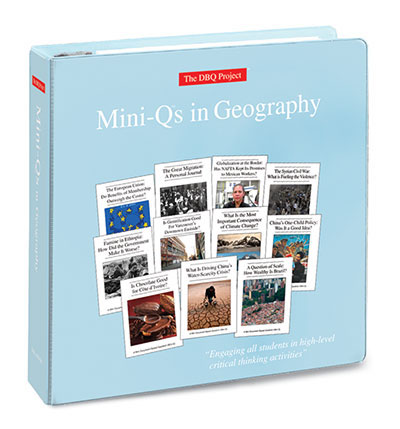
| |
|
KM 12817KM 12817 Mini-Qs in Literature, Volume 2
Grade Lvl: IJST Author:
Length: 0 Copyright: 2016
The DBQ Project Method provides a framework of best practices that guides teachers and students to read smart, think straight, and write clearly. The DBQ Project utilizes a 6-Step Method and delivers this methodology in all DBQs and Mini-Qs. Each step builds on students’ curiosity and increases motivation and confidence to answer a compelling, authentic question. Teachers across the country are using the DBQ Project with elementary, middle school, and high school students. Teacher scaffolding to serve the social studies learning experience and to meet the students' skill level will be key for successful implementation. DBQ - Document Based Questions. Ten High-Interest Units of Study How Does The Great Gatsby Reflect America in the Twenties? How Did Abolitionists Make the Case Against Slavery? Lord of the Flies: What Is the “Beast”? Immigration: Was It Worth It? The Relationship Between Huckleberry Finn and Jim: How Does Huck See Jim? Holocaust Writings: How Does One Say the Unspeakable? The Crucible and McCarthyism: What Are the Parallels? Meaning and Metaphor: What is Frost Saying? Their Eyes Were Watching God: Was Wright Right? Are Hamlet’s Actions Justified? |
Mini-Qs in Literature, Volume 2 IJST
 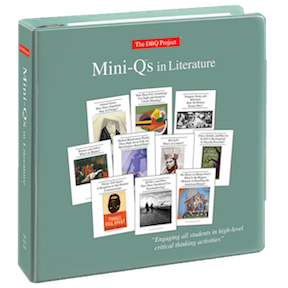
| |
|
KM 12818KM 12818 Mini-Qs in World History Vol. 3
Grade Lvl: IJST Author:
Length: 0 Copyright: 2016
The DBQ Project Method provides a framework of best practices that guides teachers and students to read smart, think straight, and write clearly. The DBQ Project utilizes a 6-Step Method and delivers this methodology in all DBQs and Mini-Qs. Each step builds on students’ curiosity and increases motivation and confidence to answer a compelling, authentic question. Teachers across the country are using the DBQ Project with elementary, middle school, and high school students. Teacher scaffolding to serve the social studies learning experience and to meet the students' skill level will be key for successful implementation. DBQ - Document Based Questions. Mini-Qs in World History Volume 3 Eleven High-Interest Units of Study The Enlightenment Philosophers: What Was Their Main Idea? The Reign of Terror: Was It Justified? How Should We Remember Toussaint Louvertoure? Latin American Independence: Why Did the Creoles Lead the Fight? Female Workers in Japanese Silk Factories: Did the Costs Outweigh the Benefits? What Was the Driving Force Behind European Imperialism in Africa? What Was the Underlying Cause of World War I? How Did the Versailles Treaty Help Cause World War II? The Soviet Union: What Should Textbooks Emphasize? What Made Gandhi’s Nonviolent Movement Work? China’s One Child Policy: Was It a Good Idea? |
Mini-Qs in World History Vol. 3 IJST
 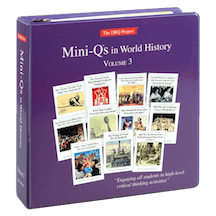
| |
|
B 96946B 96946 Models-Based Science Teaching
Grade Lvl: T Author: Gilbert, Steven W
Length: 204 Copyright: 2011
Explores the concept of mental models in relation to the learning of science and how we can apply this understanding when we teach science. Practicing science teachers at all levels who want to explore new and better ways to frame and model science will find value in this book. Models-Based Science Teaching is concerned with building models of learning that help students of all ages understand four basic ideas: •Learning involves constructing mental models that are by nature simplified and subject to change. •These models are adopted because they work and not necessarily because they are the only true and most effective ways of understanding the world. •No one has a complete grasp of any model, and most of the time we are working with approximations of a situation. •What we create when we communicate are expressions of our inner mental models. |
Models-Based Science Teaching T
 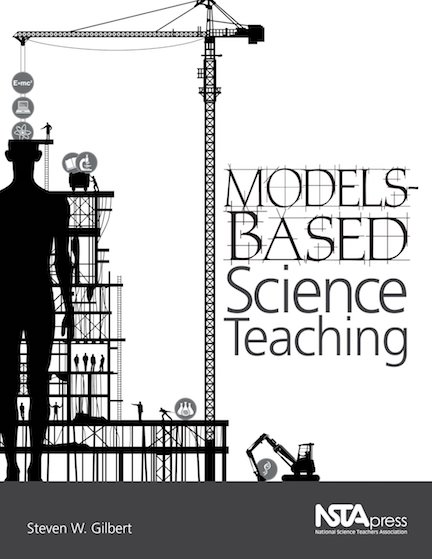
| |
|
B 97573B 97573 Morning Meeting 4th Edition
Grade Lvl: T Author: Poplawski, Karen
Length: 195 Copyright: 2023
Promote positive connections, academic growth, and productive behavior by starting each school day with Morning Meeting. Give your students a consistent time and place to gather, explore and practice social skills, build a sense of community, and prepare for the day of learning ahead. The latest edition of The Morning Meeting Book preserves the essential content and guidelines for each of the four components that have helped thousands of elementary school teachers launch each school day with Morning Meeting. |
Morning Meeting 4th Edition T
 
| |
|
KM 13254KM 13254 Multiplication/Division SOAR Kit
Grade Lvl: PIJST Author:
Length: 0 Copyright: 2015
The Supporting Ongoing Achievement Responsively (SOAR) learning series was designed to identify and support students' mathematical understanding that is in need of further inquiry and development. SOAR Survey Tools offer teacher support in 3 parts: a set of survey questions, a monitoring checklist, and tiered survey summary. SOAR Activities are intervention activities designed and sequenced to support students across tiers of intervention. Each activity is aligned to the survey tool and designed to support student learning in areas of need. Each activity outlines mathematical foci, identifies the essential mathematical understandings, and provides questions to target understandings. Contact Keystone AEA Math Consultants for further information and implementation. Mathematics Operations and Algebraic Thinking: Multiplication and Division. Three week loan period. IL 3-12. |
Multiplication/Division SOAR Kit PIJST
 
| |
|
B 97528B 97528 New Art and Science of Teaching Mathematics
Grade Lvl: T Author: Lang-Raad, Nathan D / Marzano, Robert J
Length: 143 Copyright: 2019
Reenvision the groundbreaking New Art and Science of Teaching framework for math classrooms. Readers will discover myriad math strategies, tools, and methods of teaching mathematics for every step of the process, from articulating learning targets and conducting math lessons to engaging students, tracking progress, and celebrating successes.
|
New Art and Science of Teaching Mathematics T
 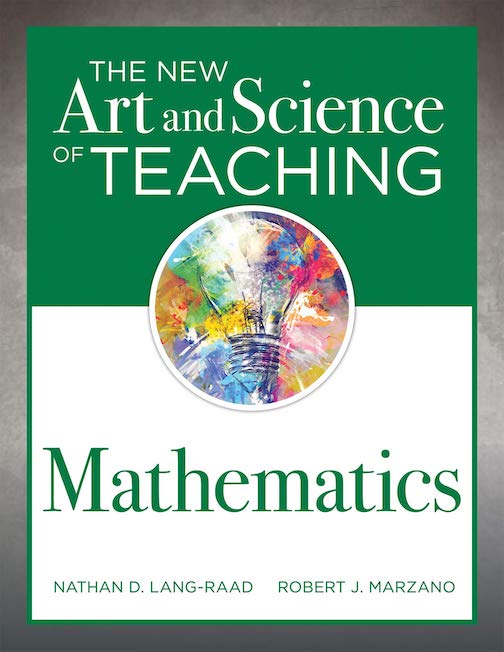
| |
|
B 97527B 97527 New Art and Science of Teaching Reading
Grade Lvl: T Author: Simms, Julia A / Marzano, Robert J
Length: 213 Copyright: 2019
Presents a compelling model for the stages of reading development, structured around five key topics: (1) foundational skills, (2) word recognition, (3) reading fluency, (4) vocabulary, and (5) reading comprehension. More than 100 reading-focused instructional strategies are laid out in detail to help teachers ensure every student becomes a proficient reader. Instructional education works. Reading research.
|
New Art and Science of Teaching Reading T
 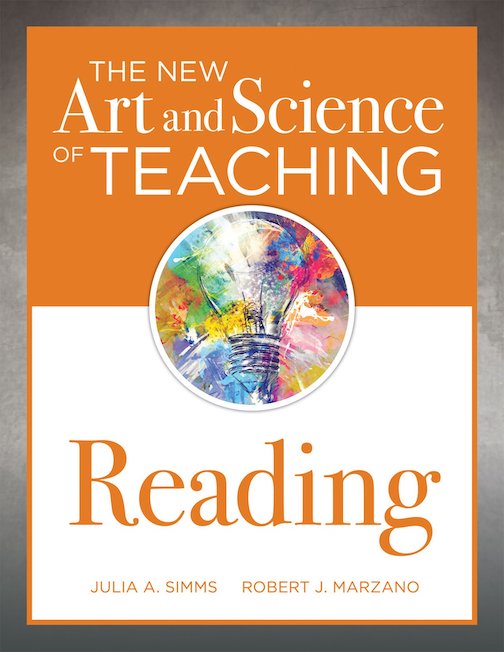
| |
|
B 97526B 97526 New Art and Science of Teaching Writing
Grade Lvl: T Author: Glass, Kathy Tuchman / Marzano, Robert J
Length: 180 Copyright: 2018
The text offers readers detailed strategies for and examples of how to assist in writing instruction. This book shares more than 100 strategies across grade levels and subject areas. Use effective teaching methods to reach desired writing learning outcomes and student success.
|
New Art and Science of Teaching Writing T
 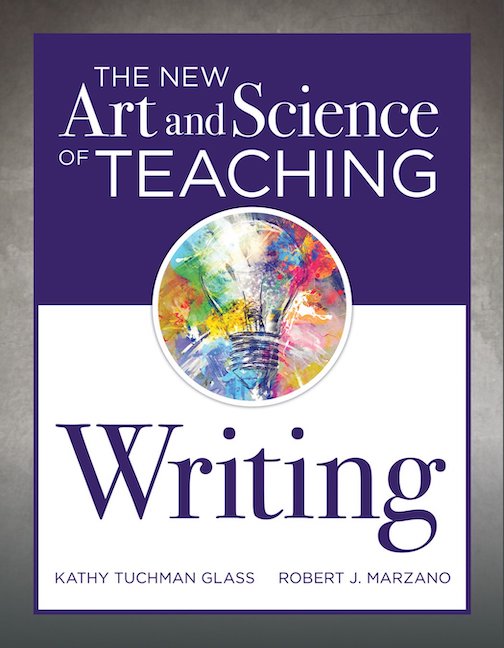
| |
|
KM 13055KM 13055 Next Step Forward in Guided Reading & Intervention
Grade Lvl: T Author: Richardson, Jan / Lewis, Ellen
Length: 0 Copyright: 2016
In this resource-rich book and teacher’s prompting guide, you’ll find: - All the planning and instructional tools you need to teach guided reading well, from pre-A to fluent, organized around Richardson’s proven Assess-Decide-Guide framework. - Prompts, discussion starters, teaching points, word lists, intervention suggestions, and more to support all students, including dual language learners and struggling readers. - 29 comprehension modules that cover essential strategies―monitoring, retelling, inferring, summarizing, and many others. - A handy flip-chart guide with prompts, discussion starters, and teaching points for use during guided reading to inform your next step forward. The Next Step Forward in Reading Intervention offers intensive, short-term, targeted instruction in reading, writing, word study, and comprehension for a K-8 classroom. It’s a step-by-step handbook for literacy teachers, literacy coaches, and reading specialists based on the RISE Framework. See stand alone copies from our professional collection as well #97225 and #97226. |
Next Step Forward in Guided Reading & Intervention T
 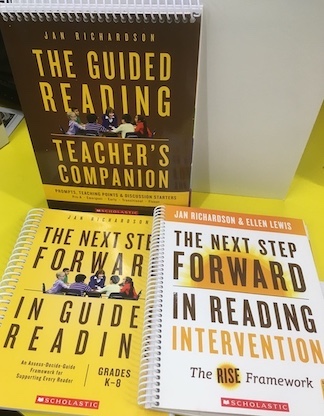
| |
|
B 97225B 97225 Next Step Forward in Guided Reading: An Assess-Decide-Guide Framework for Supporting Every Reader
Grade Lvl: T Author: Richardson, Jan
Length: 336 Copyright: 2016
All the planning and instructional tools you need to teach guided reading well, from pre-A to fluent, organized around Richardson’s proven Assess-Decide-Guide framework. Prompts, discussion starters, teaching points, word lists, intervention suggestions, and more to support all students, including dual language learners and struggling readers. This spiral-bound notebook offers 29 comprehension modules that cover essential strategies―monitoring, retelling, inferring, summarizing, and many others. Also includes access to an online resource bank with downloadable assessment and record-keeping forms, stage-specific lesson plan templates and access to 50 videos showing Jan modeling key parts of guided reading lessons for every stage. See complete professional set from our collection: KM 13055 and/or companion professional book #97226. |
Next Step Forward in Guided Reading: An Assess-Decide-Guide Framework for S T
 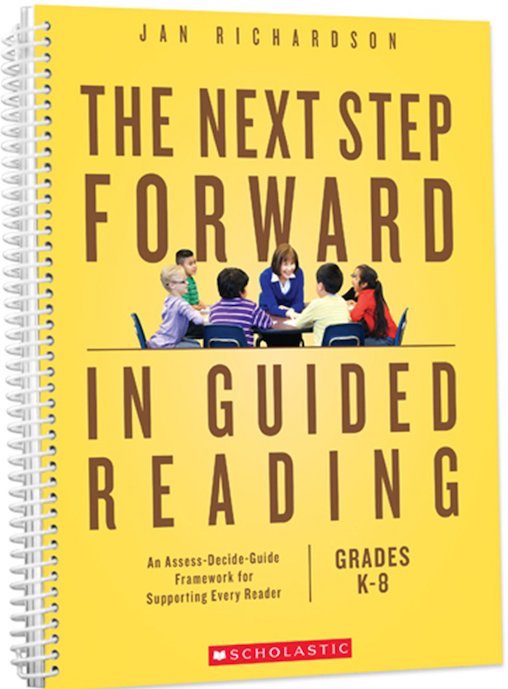
| |
|
B 97226B 97226 Next Step Forward in Reading Intervention: The RISE Framework
Grade Lvl: T Author: Richardson, Jan / Lewis, Ellen
Length: 176 Copyright: 2018
Literacy intervention should be swift and powerful. This approach by Jan Richardson and Ellen Lewis is intended to achieve growth and reading results after 6-8 weeks of intervention. Based on Jan's bestselling The Next Step Forward in Guided Reading, this companion volume is intended to be used together in order to best implement the RISE framework.. The Next Step Forward in Reading Intervention offers intensive, short-term, targeted instruction in reading, writing, word study, and comprehension. It’s a step-by-step handbook for literacy teachers, literacy coaches, and reading specialists. See complete professional set from our collection: KM 13055 and/or companion professional book #97225. |
Next Step Forward in Reading Intervention: The RISE Framework T
 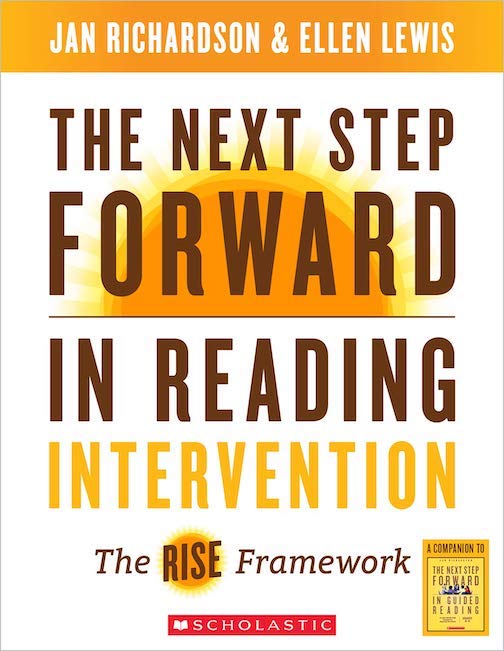
| |
|
B 97240B 97240 Next Step Forward in Word Study and Phonics
Grade Lvl: T Author: Richardson, Jan / Dufresne, Michele
Length: 288 Copyright: 2019
Guided reading experts Jan Richardson and Michele Dufresne provide teachers with clear, concise, and practical instructions and resources for planning and teaching developmentally appropriate word study and phonics lessons. Learn how students solve words, how to assess what students know and need to learn next, and what sequence, materials, and activities to use to help students become proficient. The textiIntroduces readers to not just one approach to phonics and word study—but six approaches. Also includes more than 250 ready-to-use word study lessons, leveled from pre-A–Z. See companion professional books in this series: B 97226 and B 97225. |
Next Step Forward in Word Study and Phonics T
 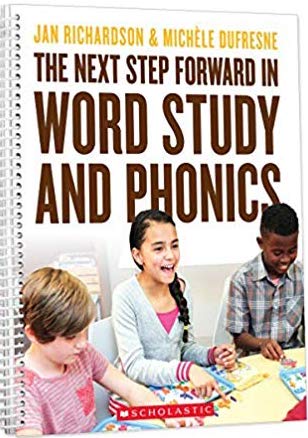
| |
|
B 97143B 97143 Notice & Note: Strategies for Close Reading
Grade Lvl: T Author: Beers, Kylene / Probst, Robert E
Length: 274 Copyright: 2013
Introduction to 6 "signposts" that alert readers to significant moments in a work of literature and encourage students to read closely. Learning first to spot these signposts and then to question them, enables readers to explore the text, any text, finding evidence to support their interpretations. In short, these close reading strategies will help your students to notice and note. In this timely and practical guide Kylene and Bob: examine the new emphasis on text-dependent questions, rigor, text complexity, and what it means to be literate in the 21st century identify 6 signposts that help readers understand and respond to character development, conflict, point of view, and theme provide 6 text-dependent anchor questions that help readers take note and read more closely offer 6 Notice and Note model lessons, including text selections and teaching tools, that help you introduce each signpost to your students. Notice and Note will help create attentive readers who look closely at a text, interpret it responsibly, and reflect on what it means in their lives. It should help them become the responsive, rigorous, independent readers we not only want students to be but know our democracy demands. |
Notice & Note: Strategies for Close Reading T
 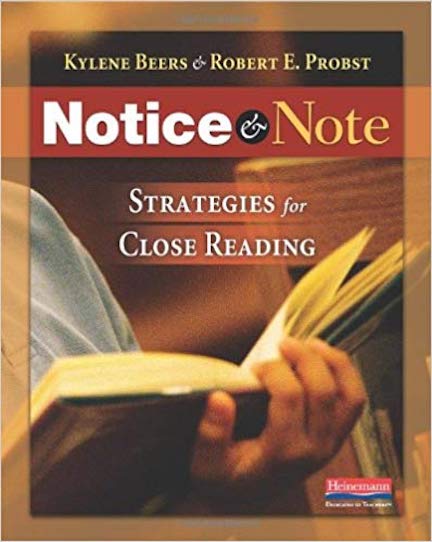
| |
|
B 97060B 97060 Novel Approach: Whole-Class Novels, Student-Centered Teaching, and Choice
Grade Lvl: T Author: Roberts, Kate
Length: 184 Copyright: 2018
Dive into the troubles and triumphs of both whole-class novels and independent reading and arrive at a persuasive conclusion: we can find a student-centered, balanced approach to teaching reading. Offers a practical framework for creating units that join both teaching methods together and helps you: - Identify the skills your students need to learn - Choose whole-class texts that will be most relevant to your kids - Map out the timing of a unit and the strategies you'll teach - Meet individual needs while teaching whole novels - Guide students to choice books and book clubs that build on the skills being taught. |
Novel Approach: Whole-Class Novels, Student-Centered Teaching, and Choice T
 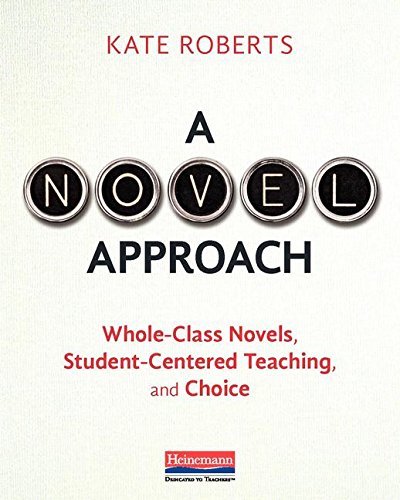
| |
|
B 97063B 97063 Number Sense Routines: Building Mathematical Understanding Every Day in Grades 3-5
Grade Lvl: T Author: Shumway, Jessica F
Length: 140 Copyright: 2018
Tap into every child's innate number sense and providing daily, connected experiences that are responsive to children’s learning needs. Through familiar five-, ten-, or fifteen-minute warm-up routines, this offers both beginner and veteran teachers easy and effective ways to build and solidify students’ number sense foundations. No matter how familiar the routine, Jessica infuses each with new joy, depth, and life. She reveals the careful thinking and planning that goes into each routine and provides detailed vignettes and dialogues of how they unfold in real classrooms. She gives teachers a clear view into her nuanced facilitation. Each routine becomes an exciting opportunity to understand where students are in their understanding and to help students articulate and extend their mathematical thinking. |
Number Sense Routines: Building Mathematical Understanding Every Day in Gra T
 
| |
|
B 97397B 97397 Open Art Room
Grade Lvl: T Author: Purtee, Melissa / Sands, Ian
Length: 215 Copyright: 2018
The Open Art Room provides a student-centered approach to art instruction that is inspirational, practical, and classroom-tested. This book uses inspiration from a variety of contemporary approaches and presents a framework for Choice-Based instruction for Secondary Level (grades 6–12) Art Education. Contents offer: Flexible instructional frameworks with options for beginner, intermediate, and advanced levels of Choice. Assessment for Choice-Based art teachers. Unit plans, boot camps, mini-lessons, and classroom examples. Clear connections to the National Core Art Standards and engaging stories of student struggles and successes. |
Open Art Room T
 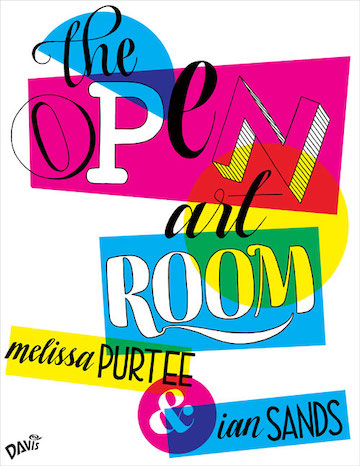
| |
|
B 97301B 97301 Patterns of Power: Inviting Young Writers into the Conventions of Language, Grades 1-5
Grade Lvl: T Author: Anderson, Jeff
Length: 446 Copyright: 2017
Patterns of Power suggests teachers take five minutes from reading workshop and five minutes from writing workshop to focus on how the conventions connect reading and writing support students' understanding of how language works for readers and writers. The professional text introduces an approach to teaching grammar that allows students to study authentic texts to recognize essential grammar conventions and includes support materials, more than one hundred mentor sentences, work samples, and tips. Includes: Extensive support materials, over 100 mentor sentences, curated for grades 1-5, student work samples, tips and power notes to facilitate your own knowledge and learning as well as examples for application. |
Patterns of Power: Inviting Young Writers into the Conventions of Language, T
 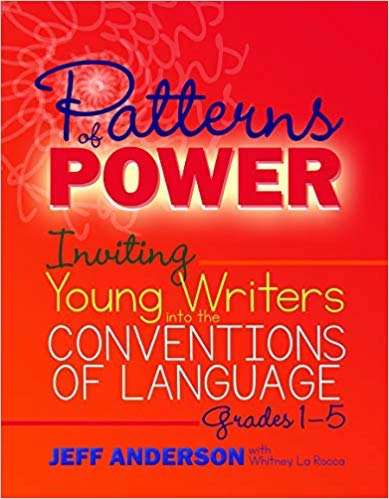
| |
|
KM 13774KM 13774 Pax (25 Books)
Grade Lvl: IJ Author: Pennypacker, Sara
Length: 0 Copyright: 2019
After being forced to give up his pet fox Pax, a young boy named Peter decides to leave home and get his best friend back. Kit contents include a classroom set of 25 books in English; plus 2 books in Spanish; a playaway and a 5 way splitter. Playaway run time: 5 hours and 30 minutes. Novel Study. Adventure. Animal story. Consequences of war. Fantasy. Multiple viewpoint. AR 5.3. RC 5.6. Lexile 760. IL 4-8. |
Pax (25 Books) IJ
 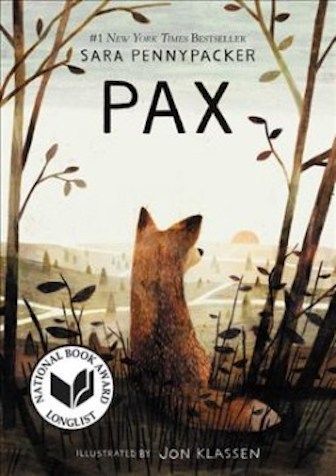
| |
|
B 97149B 97149 Personalized Reading: Digital Strategies and Tools to Support All Learners
Grade Lvl: T Author: Haiken, Michele / Furman, Robert
Length: 176 Copyright: 2018
Due to the diversity of readers in today’s classrooms, teachers are called upon to teach not reading, but readers. Personalized Reading highlights four different types of readers -- the struggling reader, the reluctant reader, English learners and advanced readers -- and presents ways to use technology tools to accommodate their different reading styles. With this book, teachers will develop the skills they need to help students select their own texts, conduct reading workshops and teach students to read both print and visual texts, while identifying what works best for each student to maximize learning and potential. The strategies and classroom-ready ideas presented here will help educators incorporate technology to promote reading, critical thinking and digital literacy, and will answer questions like: How can teachers meet the needs of all learners to help them think critically and communicate effectively? How can teachers approach reading of visual, print and digital text? This book will: help teachers empower students with the skills and strategies they need for reading success, and to find joy in reading; inspire teachers to think beyond the text to help meet students where they are and raise the level of thinking about teaching readers; and provide activities and lessons to help support the diverse learners that enter the classroom, highlighting a variety of technology tools to tap into the multifaceted texts students can access. |
Personalized Reading: Digital Strategies and Tools to Support All Learners T
 
| |
|
KM 126KM 126 Phonics Blitz Lessons 1-25 (Grades 4-12)
Grade Lvl: T Author:
Length: 0 Copyright: 2010
Contains 1 Phonics Blitz, 2nd Edition Lesson Plans 1-25; 2 copies of Student Lessons 1-25; Form A instruction book; and 9 posters. Intended for use: grades 4-12. This kit is intended for professional preview only. |
Phonics Blitz Lessons 1-25 (Grades 4-12) T
 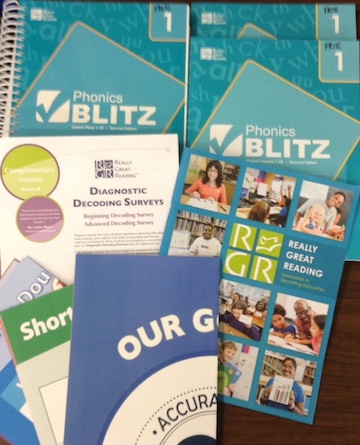
| |
|
KM 12837KM 12837 Phonics Boost 1
Grade Lvl: PIJST Author: Farrell, Linda / Hunter, Michael
Length: 0 Copyright: 2008
Phonics Boost is designed for students in grades 2 and 3 with mild, moderate or significant decoding skills weaknesses, and for students in grades 4 -12 with significant decoding skills weaknesses. The vocabulary spans from easy to challenging words. The recommended group size is 6-12 in grades 2-3 , and 4-6 in 4th grade and higher. This kit is intended for professional preview only. Contains 1 Phonics Boost, Lesson Plans/Teacher Materials for Lessons 1-20, Passages Book: Oral Reading Practice Lessons 1-40 (2 copies), Phonics Boost Book: Student Materials Lessons 1-20 9 posters. |
Phonics Boost 1 PIJST
 
| |
|
B 97400B 97400 Phonics From A to Z: A Practical Guide (3rd Edition)
Grade Lvl: T Author: Blevins, Wiley
Length: 320 Copyright: 2017
Text outlines the most recent brain research, 7 key characteristics of strong phonics instruction, and powerful instructional routines for accelerating student learning. Also includes special sections on meeting the needs of struggling readers and emerging language learners, speed drill forms, fluency tips, word sort and word building support, engaging lessons, word lists, games, learning center ideas, technology resources, and more. Targeted application level: K-3 |
Phonics From A to Z: A Practical Guide (3rd Edition) T
 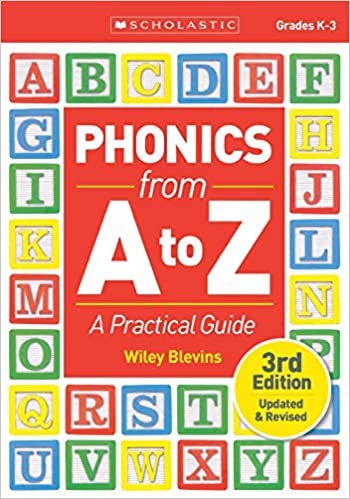
| |
|
B 97120B 97120 Picture Science: Using Digital Photography to Teach Young Children
Grade Lvl: T Author: Neumann-Hinds, Carla
Length: 100 Copyright: 2007
Young children love to investigate the natural world, and they love to take photographs. Picture Science will help you go beyond just documenting class projects. It will show you how to use digital photography to make each step in the scientific process—from posing a question, to gathering data, to showing your findings—concrete and fun for children. Keyed throughout to early learning standards, Picture Science provides inspiring examples that will stimulate you to design your own lesson plans. Technical advice and tips for buying a camera for your center or family child care business are included as well. |
Picture Science: Using Digital Photography to Teach Young Children T
 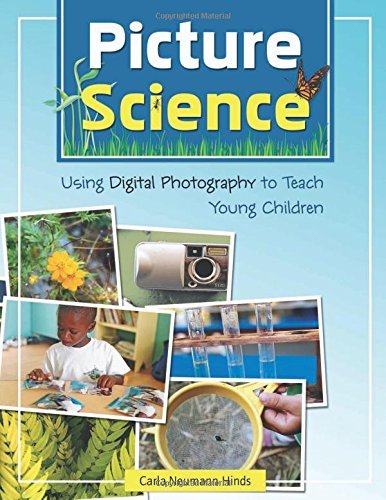
| |
|
B 97503B 97503 PLC in CTE
Grade Lvl: T Author: Adams, Sandra
Length: 116 Copyright: 2021
The power of professional learning communities to create thriving cultures of achievement within career and technical education. This book highlights how CTE experiences allow students and adult learners alike to realize new potential within themselves. The answer lies in teacher-driven change. Dr. Adams contends that in order to build efficacy in students, CTE teachers need support to build their own efficacy around instruction. PLC in CTE details how adult learners strengthen both individual and collective efficacy as educators—following the PLC frameworks of inquiry, research and the science of learning. Adult learners learn best when they transition between individual reflection and small group collaborative sessions. We need collaboration around high evidence-based instructional practices that embody career and technical experiences. |
PLC in CTE T
 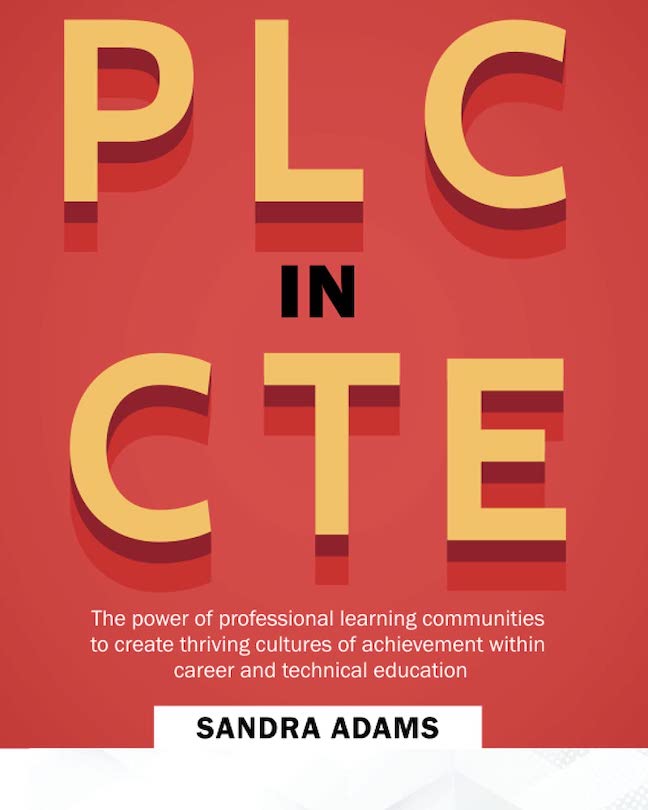
| |
|
B 96914B 96914 Power of the Adolescent Brain: Strategies for Teaching Middle and High School Students
Grade Lvl: T Author: Armstrong, Thomas
Length: 207 Copyright: 2016
Looks at the teenage brain from an empathetic, strength-based perspective—and describes how educators can make the most of their students’ potential. Grounded in current neurological research, this book explains how the adolescent brain works and proposes eight instructional elements to: Help students develop the ability to think; Make healthy choices; Regulate their emotions; Handle social conflict; Consolidate their identities; Learn enough about the world to move into adulthood with dignity and grace. |
Power of the Adolescent Brain: Strategies for Teaching Middle and High Scho T
 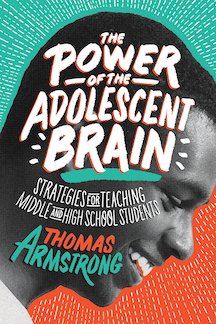
| |
|
B 96977B 96977 Problem-Based Learning in the Earth and Space Science Classroom, K-12
Grade Lvl: T Author: McConnell, Tom J / Parker, Joyce
Length: 262 Copyright: 2017
This is an all-in-one guide will help you engage your students in scenarios that represent real-world science in all its messy, thought-provoking glory. The scenarios will prompt K–12 students to work collaboratively on analyzing problems, asking questions, posing hypotheses, and constructing solutions. This book is both informative and practical. In addition to complete lesson plans that support the Next Generation Science Standards, the book offers extensive examples, instructions, and tips. The lessons cover four categories: Earth’s landforms and water, the rock cycle and plate tectonics, weather, and astronomy. Professional resource. NGSS. |
Problem-Based Learning in the Earth and Space Science Classroom, K-12 T
 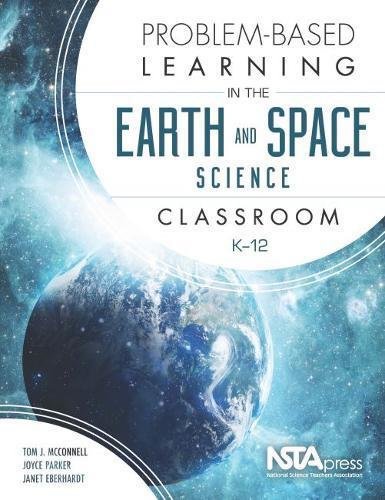
| |
|
B 96978B 96978 Problem-Based Learning in the Life Science Classroom, K-12
Grade Lvl: T Author: McConnell, Tom J / Parker, Joyce
Length: 200 Copyright: 2016
Engage students with scenarios that represent real-world science in all its messy, thought-provoking glory. The scenarios prompt K- 12 learners to immerse themselves in analyzing problems, asking questions, posing hypotheses, finding needed information, and then constructing a proposed solution. In addition to complete lesson plans supporting the Next Generation Science Standards, the book offers extensive examples, instructions, and tips. The lessons cover four categories: life cycles, ecology, genetics, and cellular metabolism. But Problem-Based Learning in the Life Science Classroom, K 12 doesn't just explain why, how, and when to implement problem-based learning (PBL). It also provides you with rich, authentic problems. Professional resource. K-12. NGSS. |
Problem-Based Learning in the Life Science Classroom, K-12 T
 
| |
|
B 96976B 96976 Problem-Based Learning in the Physical Science Classroom, K-12
Grade Lvl: T Author: McConnell, Tom J / Parker, Joyce
Length: 265 Copyright: 2018
Help students understand concepts such as motion, energy, and magnetism in true-to-life contexts. The book offers a comprehensive description of why, how, and when to implement problem-based learning (PBL) in your curriculum. Its 14 developmentally appropriate lessons cover forces and motion, energy transformation, and electricity and magnetism. This professional resources demonstrates to teachers how to use scenarios in creative ways to represent real-world science in all its messy, thought-provoking glory. The scenarios will prompt K–12 learners to work collaboratively, the way scientists do through problem analysis, inquiry, pose hypotheses, research, and then construct solutions. Offers extensive examples, instructions, and tips for implementing open-ended inquiry. It also provides rich, authentic problems you can use as is or adapt. NTSA resource. NGSS. |
Problem-Based Learning in the Physical Science Classroom, K-12 T
 
| |
|
B 96971B 96971 Read-Aloud Handbook: Seventh Edition
Grade Lvl: T Author: Trelease, Jim
Length: 384 Copyright: 2013
Helps children become avid readers through awakening their imaginations and improving their language skills. Discusses the benefits, the rewards, and the importance of reading aloud to children of a new generation. Supported by delightful anecdotes as well as the latest research (including the good and bad news on digital learning), The Read-Aloud Handbook offers proven techniques and strategies for helping children discover the pleasures of reading and setting them on the road to becoming lifelong readers. |
Read-Aloud Handbook: Seventh Edition T
 
| |
|
B 97588B 97588 Reading Above the Fray
Grade Lvl: T Author: Lindsey, Julia B
Length: 160 Copyright: 2022
Subtitle: Reliable, Research-Based Routines for Developing Decoding Skills. Dr. Julia B. Lindsey's evidence-based routines help young readers decode words efficiently so students can spend more energy on comprehending, and enjoying what they read. The text addresses content learning, culturally responsive practices, and the importance of engaging readers from the start. The Science of Reading in Practice. Phonics. Decodables. |
Reading Above the Fray T
 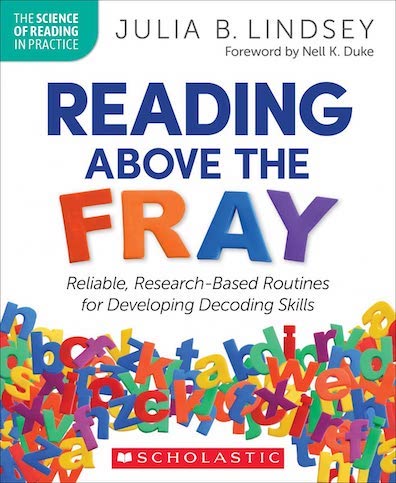
| |
|
B 97224B 97224 Red Hot Root Words: Mastering Vocabulary with Prefixes, Suffixes and Root Words Grades 3-5
Grade Lvl: T Author: Draze, Dianne
Length: 120 Copyright: 2005
Students will deepen their understanding of the English language and expand their vocabulary through forty-one lessons. Each lesson is formatted with either a prefix(es), suffix(es), or root word(s) complete with the meaning and some sample words. New words built around these concepts follow, with definitions of each and a sample sentence that uses the word in context. Students are then asked to complete a practice section. These exercises vary in construct, including fill-in-the-blank, matching, identifying synonyms and antonyms, identifying the best context for the word, and more. Following every second lesson is a review page that tests students on the concepts and words they learned in the previous two lessons. Book 1 in series. Intended for use with students in grades 3-5. |
Red Hot Root Words: Mastering Vocabulary with Prefixes, Suffixes and Root T
 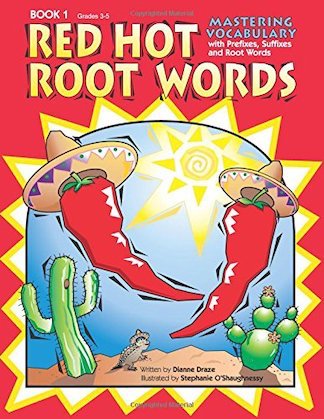
| |
|
B 97223B 97223 Red Hot Root Words: Mastering Vocabulary With Prefixes, Suffixes And Root Words Grades 6-9
Grade Lvl: T Author: Draze, Dianne
Length: 158 Copyright: 2005
Over 200 roots are presented in a series of 54 lessons. Each two-page lesson presents between two and five related roots (on average), along with their meanings and common words that use them. Then, ten vocabulary words are listed with part of speech, definition, and a sentence showing the word in context. The second page of the lesson is a student worksheet with a variety of exercises that give students practice defining and using the vocabulary words. Lesson by lesson notes are included for the teacher in the front of the book. These include suggestions for incorporating games and other extension activities (including reproducible student pages). Book 2 in series. Intended for use with students in grades 6-9. |
Red Hot Root Words: Mastering Vocabulary With Prefixes, Suffixes And Root W T
 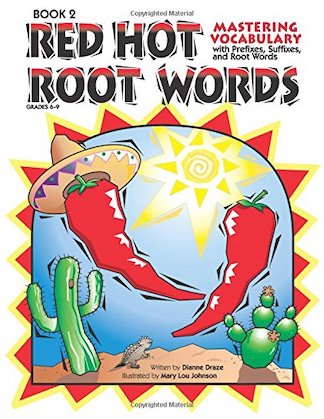
| |
|
B 96968B 96968 Resilient Classrooms: Creating Healthy Environments for Learning Second Edition
Grade Lvl: T Author: Doll, Beth / Brehm, Katherine
Length: 179 Copyright: 2014
Presents classroom-based strategies for supporting all students' success and psychological wellness in grades K-9. The authors clearly explain what makes a classroom a healthy place to learn. They describe effective procedures for recognizing when a classroom is lacking essential supports, intervening to put missing supports into place, and evaluating the effects on learning and development. Rich case studies show how the strategies have been used by actual educators. Reproducible worksheets and planning tools are included; the large-size format and lay-flat binding facilitate photocopying. Purchasers also get access to a Web page where they can download and print the reproducible materials. This book is in The Guilford Practical Intervention in the Schools Series, edited by T. Chris Riley-Tillman. New to This Edition *Incorporates a substantial new research base. *Expanded K-9 grade range. *Discussions of timely topics: English language learners, cultural diversity, response to intervention, and positive behavior supports. *Most case studies are new. *Seven additional reproducibles (intervention strategy sheets). |
Resilient Classrooms: Creating Healthy Environments for Learning Second Edi T
 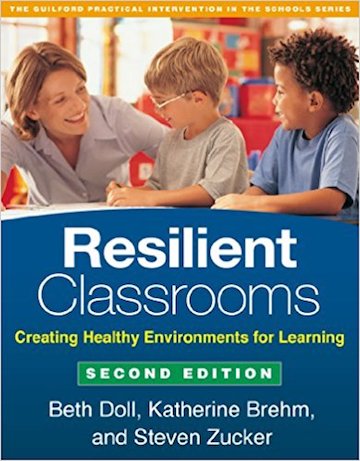
| |
|
B 97525B 97525 Rigor by Design, Not Chance: Deeper Thinking Through Actionable Instruction and Assessment
Grade Lvl: T Author: Hess, Karin
Length: 194 Copyright: 2023
A practical and systematic approach to deepening student engagement, promoting a growth mindset, and building a classroom culture that truly supports thinking and learning. Cognitive learning. Educational tests and measures. Motivation in education. |
Rigor by Design, Not Chance: Deeper Thinking Through Actionable Instruction T
 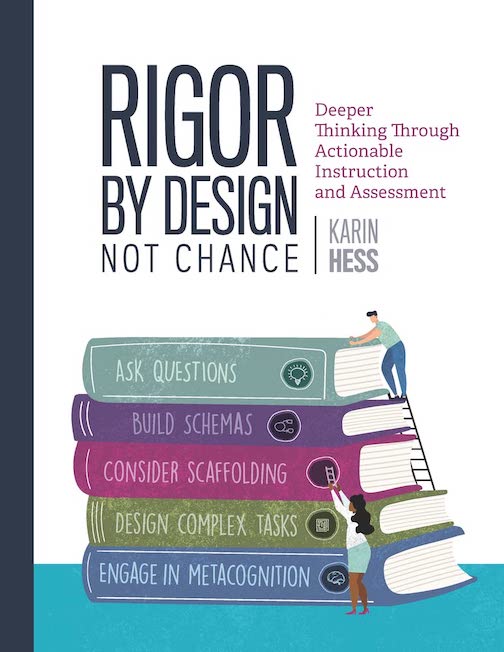
| |
|
B 97087B 97087 Rigor in the RTI and MTSS Classroom: Practical Tools and Strategies
Grade Lvl: T Author: Blackburn, Barbara R / Witzel, Bradley S
Length: 175 Copyright: 2018
Shows how to develop rigorous RTI and MTSS programs that will support students and lead them to lasting success. Written in a clear, engaging style, Rigor in the RTI and MTSS Classroom combines an in-depth discussion of the issues facing at-risk and learning-disabled students with practical strategies for all teachers. You’ll discover how to: Improve academic and social-emotional performance with scaffolding and demonstration of learning techniques; Establish and teach class rules, expectations, and consequences; Use evidence-based activities to spark student discussion; Implement rigorous, research-based strategies for math, literacy, reading, and writing development; Assess student growth and encourage self-reflection. Form an MTSS leadership team to ensure that student needs are met across building and district levels. Each chapter contains anecdotes from schools across the country as well as a variety of ready-to-use tools and activities. Many of the tools are offered as free eResources at www.routledge.com/9781138193383, so you can easily print and distribute them for classroom use. |
Rigor in the RTI and MTSS Classroom: Practical Tools and Strategies T
 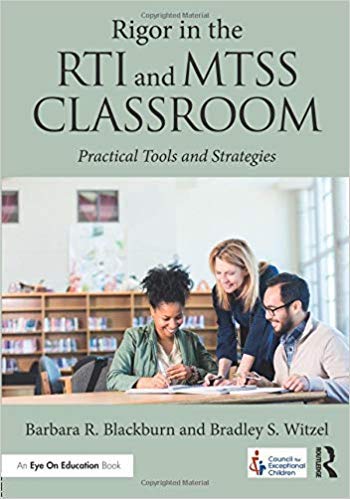
| |
|
KM 13373KM 13373 Roll of Thunder, Hear My Cry (30 copies)
Grade Lvl: IJ Author: Taylor, Mildred D
Length: 0 Copyright: 2020
Set in Mississippi at the height of the Depression, this is the story of one family's struggle to maintain their integrity, pride, and independence in the face of racism and social injustice. Told from the main heroine, Cassie Logan, is an independent school aged girl who discovers over the course of an important year why having land of their own is so crucial to the Logan family. She learns to draw strength from her own sense of dignity and self-respect. Kit contents includes: 30 paperback copies of the book, 6 audio CDs, 5 playaways, 2 splitters, Teacher guides from: Novel Ties, The Engaged Reader, Taking Grades, Teacher Created Resources, and Great Works. Historical fiction. Playaway run time: 7 hours 30 minutes. Audio CDs run time: 7 hours and 30 minutes. Mentor text. Middle School Literacy/Language Arts with Social Studies connections. IL 5-9. AR 5.7. RC 6.9. Lexile 920. GR W. Four week loan period. |
Roll of Thunder, Hear My Cry (30 copies) IJ
 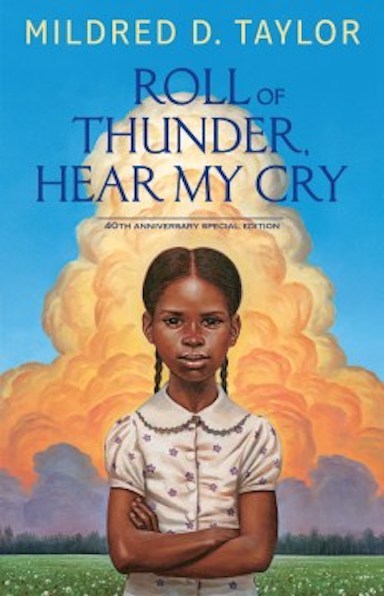
| |
|
B 97389B 97389 Rosenshine's Principles in Action
Grade Lvl: T Author: Sherrington, Tom
Length: 84 Copyright: 2019
Barak Rosenshine's Principles of Instruction are widely recognized for their clarity and simplicity and their potential to support teachers seeking to engage with cognitive science and the wider world of education research. In this concise new guide, Sherrington amplifies and augments the principles and further demonstrates how they can be put into practice in everyday classrooms. The second half of the book contain Rosenshine's original paper Principles of Instruction, as published in 2010 by the International Academy of Education (IAE) - a paper with a superb worldwide reputation for relating research findings to classroom practice. |
Rosenshine's Principles in Action T
 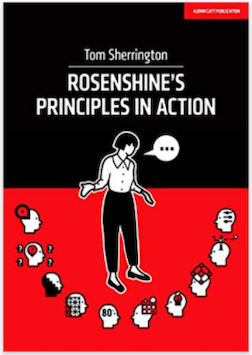
| |
|
B 97390B 97390 Rosenshine's Principles in Action: The Workbook
Grade Lvl: T Author: Grimes, Claire
Length: 89 Copyright: 2020
Following the resounding success of Tom Sherrington’s Rosenshine’s Principles in Action, the seminal principles have swiftly become a practical support for teachers looking to develop their classroom practice. The Workbook seeks to further this engagement by providing a thought-provoking and reflective guide designed to encourage teachers in all settings to become self-aware practitioners. Completed alongside a series of video masterclasses delivered by Sherrington, teachers will be led through a range of questions and activities devised to secure pedagogical understanding and ensure teachers are left with clear actions to support pupil progress. The five-session structure of the workbook explores the fundamentals of classroom practice, finishing with a guided reflection on Rosenshine’s Principles in Action, thus providing the reader with a stimulating companion to Sherrington’s excellent work. The workbook is be used as reference and preview only for educator reference. |
Rosenshine's Principles in Action: The Workbook T
 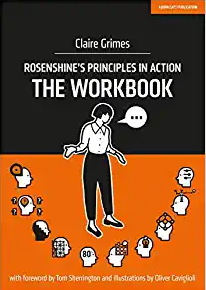
| |
|
B 97388B 97388 Rosenshine's Principles in Practice
Grade Lvl: T Author: Sherrington, Tom
Length: 66 Copyright: 2019
Barak Rosenshine's Principles of Instruction are 10 fundamental propositions for more effective teaching, derived from research and supported by the most current models in cognitive science. Breaking Rosenshine's Principles down into 4 practical strands, Sherrington brings his expertise to this guide, elaborating and building on Rosenshine's work with more classroom examples, actionable strategies, and tested methods of implementation developed from real classroom experience. Rosenshine's Principles in Practice explains exactly how to successfully and authentically make your instruction more effective. High impact teaching strategies. |
Rosenshine's Principles in Practice T
 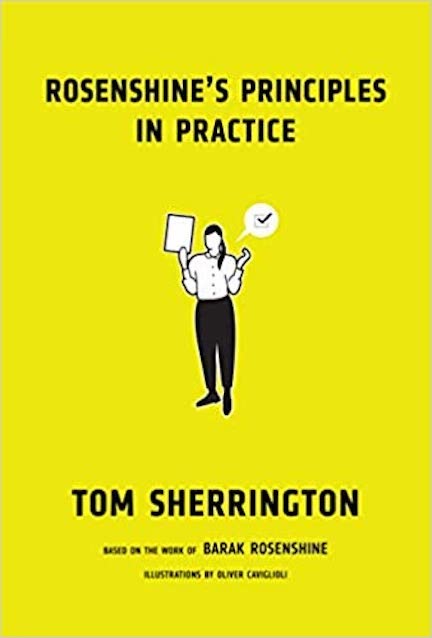
| |
|
B 97469B 97469 Ruthless Equity: Disrupt the Status Quo and Ensure Learning for ALL Students
Grade Lvl: T Author: Williams, Ken
Length: 200 Copyright: 2022
Can you imagine being empowered with the knowledge to: work with super-charged confidence because you have clarity about how to ensure equity for EVERY student? identify the difference between cosmetic gestures of equity and powerful equitable practices that are practical and impactful? leverage equitable practices that will make student achievement both measurable and predictable? lean into the collective genius of your colleagues because you understand that the answers are in the room? Can you imagine never again wondering if you make a difference, because you now understand you are the difference?. The text offers the examination of the internal obstacles to providing genuine equal opportunities for every student, bestselling author Ken Williams shows readers how to identify and defeat the enemy of equity by unlocking these barriers through mindset and practice. |
Ruthless Equity: Disrupt the Status Quo and Ensure Learning for ALL Student T
 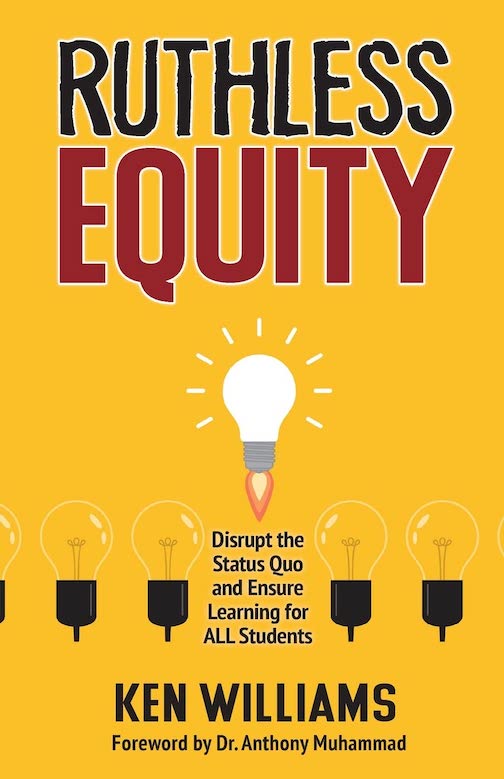
| |
|
B 96926B 96926 Saving Play: Addressing Standards through Play-Based Learning in Preschool and Kindergarten
Grade Lvl: T Author: Gronlund, Gaye / Rendon, Thomas
Length: 288 Copyright: 2017
Play, academics, and standards can work together with the right strategies and support from educators. Take an active role in child-directed play to guide learning. Become a strong advocate for saving play in early childhood education by empowering teachers to join play and standards, and learn how child-led, open-ended play addresses the seven domains and Common Core Standards. |
Saving Play: Addressing Standards through Play-Based Learning in Preschool T
 
| |
|
B 97619B 97619 Science of Reading in Action
Grade Lvl: T Author: Hollowell, Malia
Length: 166 Copyright: 2023
Subtitle: Brain-Friendly Strategies Every Teacher Needs to Know. The three most common barriers to successful reading instruction are lack of research-based training, actionable tools, and support. The Science of Reading in Action gives you all three. |
Science of Reading in Action T
 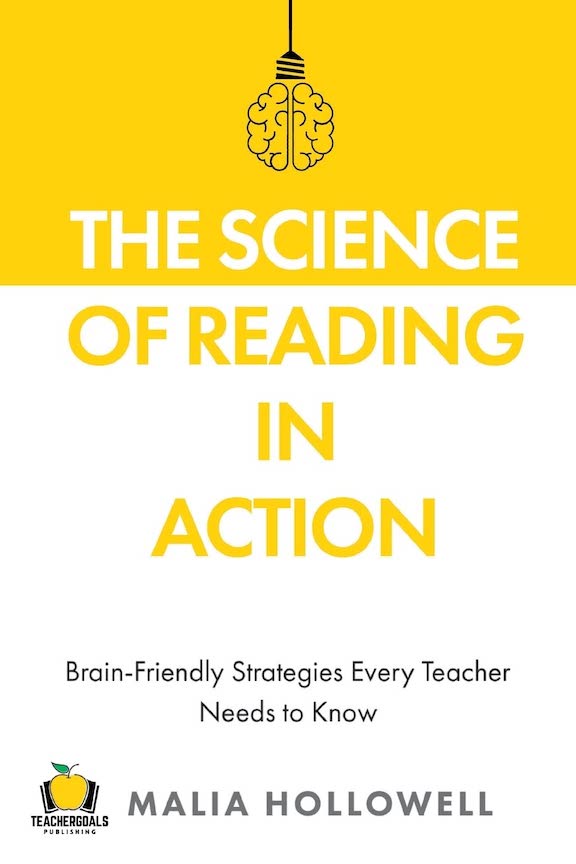
| |
|
B 97172B 97172 Shake Up Learning: Practical Ideas to Move Learning from Static to Dynamic
Grade Lvl: T Author: Bell, Kasey
Length: 169 Copyright: 2018
It's Time to Shake Up Learning! This isn't a book about technology, Google, silver bullets, or pie-in-the-sky thinking. This is a book about LEARNING! Technology is not a magic solution for education. It is an opportunity! An opportunity to shake things up, to connect and grow, and to create dynamic learning experiences for our students! In this three-part book, you will explore WHY it's time to Shake Up Learning, WHAT changes we can make in our classrooms to support dynamic learning experiences, and HOW to plan meaningful lessons for your classroom. Rapidly evolving technology and the demands of the digital age are transforming not only the way we live but also the way we learn. The tools students are using are newer, sleeker, and faster than ever before. In some cases, the medium is even changing the message. One thing is certain: Educators cannot continue the status quo if they expect to equip young people for the world to come. Here's the good news: With digital tools that are available 24/7, learning doesn't have to stop when the bell rings. Learning can take on a life of its own! Even better, technology can help you connect with students and empower them to grow and develop a lifelong love for learning--and it doesn't have to be scary or complicated. Shake Up Learning is a guide and planning tool to help educators at all grade levels make the most of technology. Educator and blogger Kasey Bell guides you through the process of using technology and proven techniques to make learning dynamic. You'll discover . . . Practical strategies to help move from static teaching to dynamic learning Straightforward and easy-to-use templates for crafting engaging learning opportunities Tips and tricks for fearless implementation of powerful lesson plans |
Shake Up Learning: Practical Ideas to Move Learning from Static to Dynamic T
 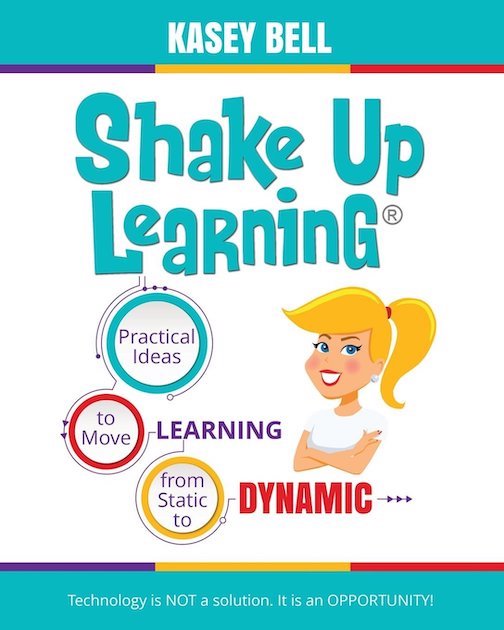
| |
|
B 97595B 97595 Shifting the Balance (Grades 3-5)
Grade Lvl: T Author: Cunningham, Katie / Burkins, Jan
Length: 250 Copyright: 2024
Subtitle: 6 Ways to Bring the Science of Reading into the Upper Elementary Classroom. A follow-up to their groundbreaking book, Shifting the Balance: 6 Ways to Bring the Science of Reading into the Balanced Literacy Classroom, the authors extend the conversation for Grades 3-5: 6 Ways to Bring the Science of Reading into the Upper Elementary Classroom. This new text is built in mind specifically for grades 3-5 teachers around best practices for the intermediate classroom. The text introduces six more shifts across individual chapters that: Zoom in on a common (but not as helpful as we had hoped) practice to reconsider and untangle several "misunderstandings" that have likely contributed to the use of the common practice. The text proposes a more science-aligned shift to the current practice and provides solid scientific research to support the revised practice Offer a collection of high-leverage, easy-to-implement instructional routines to support the shift to more brain-friendly instruction |
Shifting the Balance (Grades 3-5) T
 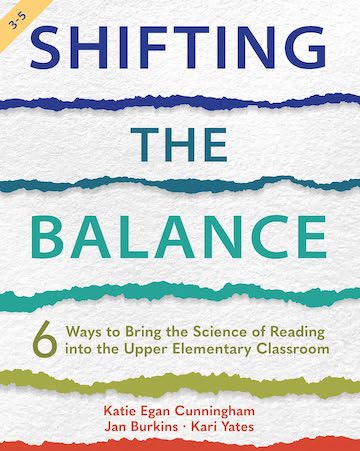
| |
|
B 97352B 97352 Shifting the Balance: 6 Ways to Bring the Science of Reading into the Balanced Literacy Classroom
Grade Lvl: T Author: Burkins, Jan / Yates, Kari
Length: 183 Copyright: 2021
Text introduces a handful of instructional shifts offered from an invitational stance to help readers consider research beyond a one size fits all mentality and confront their own biases and misunderstandings as they explore ways Balanced Literacy practitioners can reimagine early literacy instruction by incorporating some powerful tenants from the Science of Reading. Professional book appropriate to support best practices with reading instruction for students in grades K-2. |
Shifting the Balance: 6 Ways to Bring the Science of Reading into the Balan T
 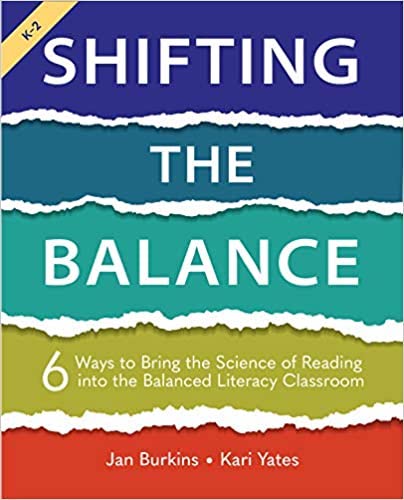
| |
|
B 97407B 97407 Six Shifts to Improve Special Education and Other Interventions: A Commonsense Approach for School Leaders
Grade Lvl: T Author: Levenson, Nathan
Length: 232 Copyright: 2020
Six Shifts to Improve Special Education and Other Interventions offers a set of bold, new ideas for dramatically raising the achievement of students with mild to moderate disabilities and students experiencing serious academic, social and emotional, and behavioral difficulties. Six Shifts to Improve Special Education and Other Interventions serves as both a call to action and a critical guide for administrators looking for more effective, affordable ways to close the achievement gap. |
Six Shifts to Improve Special Education and Other Interventions: A Commonse T
 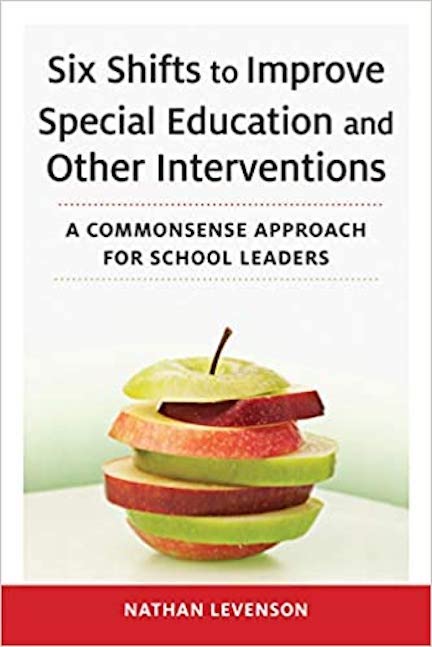
| |
|
B 97424B 97424 Sketchnoting in the Classroom: A Practical Guide to Deepen Student Learning
Grade Lvl: T Author: Carter, Nichole
Length: 166 Copyright: 2019
The book includes an analysis of the brain science behind sketchnoting, including teaching students how to identify patterns and apply them effectively in their sketchnotes; ;lesson ideas for sketchnoting across content areas, including science, social studies, English language arts and math; tools and resources for both analog and digital sketchnoting techniques; tips for using sketchnotes for professional development, including at conferences and at department or staff meetings; and examples from a variety of teachers with experience using sketchnotes in their classes. Notetaking. |
Sketchnoting in the Classroom: A Practical Guide to Deepen Student Learning T
 
| |
|
B 97319B 97319 Social Skills Activities for Kids: 50 Fun Exercises for Making Friends, Talking and Listening, and Understanding Social Rules
Grade Lvl: T Author: Daniels, Natasha
Length: 136 Copyright: 2019
What are the Dos and Don’ts for making and keeping friends? How can you decode body language clues? What’s the best way to keep a conversation going? Just like learning multiplication tables, social skills don’t come naturally―every child has to learn them. Social Skills Activities for Kids gives children the confidence to successfully navigate social situations at home, school, and the world in between. From keeping the conversation ball moving to learning to compromise to practicing good table manners, these engaging activities help kids develop and use their social skills super powers. Inside Social Skills Activities for Kids, readers will find: Life Lessons―Kids learn how to handle everyday social situations like communicating with peers and adults, using and interpreting body language, reading social cues, and more. 50 Interactive Activities―Games, fill-in-the-blank exercises, and reflective entries keep kids learning and engaged. Real Scenarios―Includes up-to-date topics like bullying and using social media. |
Social Skills Activities for Kids: 50 Fun Exercises for Making Friends, Tal T
 
| |
|
B 97279B 97279 Social Studies: Volume 109-110, 2018-2019
Grade Lvl: T Author:
Length: 498 Copyright: 2019
Contains 4 issues of "The Social Studies", Volume 109, Issues 1-3, January to June, 2018; Volume 109, Issues 4-6, July to December, 2018; Volume 110, Issues 1-3, January to June, 2019 and Volume 110, Issues 4-6, July to December 2019. Spiral binding of 4 issues. |
Social Studies: Volume 109-110, 2018-2019 T
 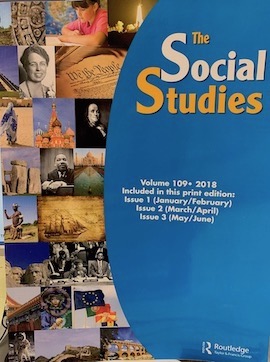
| |
|
B 97475B 97475 Social-Emotional Learning and the Brain: Strategies to Help Your Students Thrive
Grade Lvl: T Author: Sprenger, Marilee
Length: 219 Copyright: 2020
Brain expert Marilee Sprenger explains how applying neuroscience to social-emotional learning yields strategies that create supportive classroom environments and improve outcomes for all students. Text offers clear, easy-to-understand explanations of brain activity and dozens of specific strategies for all grade levels, Social-Emotional Learning and the Brain is an essential guide to creating supportive classroom environments and improving outcomes for all our students. |
Social-Emotional Learning and the Brain: Strategies to Help Your Students T T
 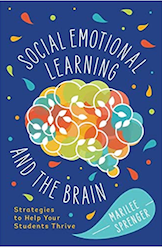
| |
|
KM 127KM 127 Sound Partners Phonics
Grade Lvl: T Author:
Length: 0 Copyright: 2005
Sound Partners: A Tutoring Program in Phonics-Based Early Reading. Contains 1 Tutor Handbook, and 1 Lesson Book. IL K-2. |
Sound Partners Phonics T
 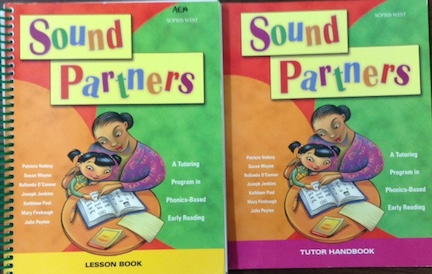
| |
|
KM 90088KM 90088 STAR Program: Levels I, II, and III (2 Parts)
Grade Lvl: T Author:
Length: 0 Copyright: 2015
The STAR Program (Strategies for Teaching based on Autism Research) offers ABA (Applied Behavior Analysis) instructional methods of discrete trial training, pivotal response training and teaching functional routines. These foundations form the instructional base of this comprehensive program for children with autism.The STAR Program includes detailed lesson plans, teaching materials, data systems and a curriculum-based assessment for teaching in the six curricular areas of receptive language, expressive language, spontaneous language, functional routines, academics, and play & social skills. Each level is in it's own sturdy storage box. Also includes a Penny Token Board Kit that can be used with each level. This kit is intended to be a preview curriculum kit. AEA Staff will check out and demonstrate for schools to purchase. Restricted to AEA Special Education Staff. Four week loan period. |
STAR Program: Levels I, II, and III (2 Parts) T
 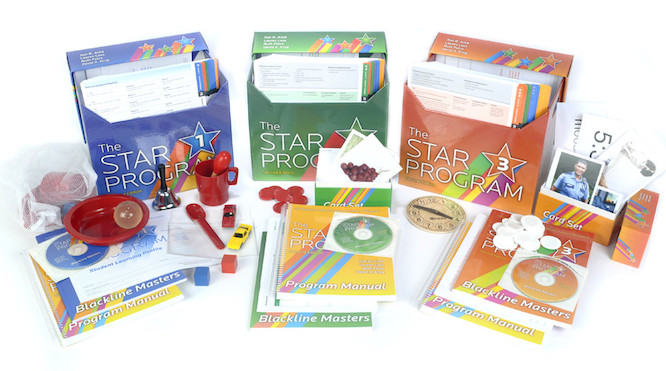
| |
|
B 97418B 97418 Starting Strong: Evidence-Based Early Literacy Practices
Grade Lvl: T Author: Blamey, Katrin L / Beauchat, Katherine A
Length: 230 Copyright: 2016
Text offers insights to teachers on how to use four proven instructional approaches--standards based, evidenced based, assessment based, and student based--to improve their teaching practice in all areas of early literacy. With chapters on oral language, vocabulary, phonological awareness, word recognition, comprehension, and writing skills, this comprehensive book explains each skill and provides research-based strategies for targeting each area. Supported by evidence-based research and aligned to key tenets of the Common Core, the book also includes classroom-tested activities and children’s literature suggestions for each area of literacy. Starting Strong is an essential resource that any early literacy teacher or coach using a balanced literacy approach can use to build a solid foundation for their students. |
Starting Strong: Evidence-Based Early Literacy Practices T
 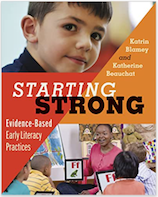
| |
|
KM 12902KM 12902 Sticker Strategies: Practical Strategies to Encourage Social Thinking and Organization 2nd Edition
Grade Lvl: PIJST Author: Winner, Michelle Garcia
Length: 60 Copyright: 2010
By providing a CD and book now you can print as many strategies you want onto standard labels and flipbooks and save the formatted stickers in Word for your student. You can still print from formatted strategies in the included book. A popular tool, the previous book included actual stickers, making it expensive to print. This CD/book package is half the first version's price and more versatile! While originally developed for use with students with social cognitive learning challenges (Asperger's, high-functioning autism, ADHD, etc.), these strategies can easily be applied to any child who needs that strong visual reminder - a more powerful teacher than an adult's "nag." This CD/book package allows for a student to learn a strategy presented in the book, then the instructor sticks the strategy sticker in a flip notebook. The student carries the flipbook with him/her throughout the day. With the flipbook, the student can easily and discretely refer to the strategies s/he already learned to solve problems with independence. The result is fewer behavioral breakdowns and classroom disruptions, while teaching self-reliance and problem-solving anytime, anywhere. This is a great tool for a student who recognizes his/her weaknesses and is motivated to improve. This tool is not effective for students who either don't realize that they need improvement or who aren't motivated to help themselves. Enhanced strategies include those for: Asking for Help; Emotions and Problem Solving; Organization, Writing and Homework; Group Work; Social Thinking; Family Time - Home Strategies This innovative tool is best for 3rd grade to 12th grade students. |
Sticker Strategies: Practical Strategies to Encourage Social Thinking and O PIJST
 
| |
|
B 97622B 97622 Strive-for-Five Conversations
Grade Lvl: T Author: Zucker, Tricia / Cabell, Sonia
Length: 160 Copyright: 2023
Subtitle: A Framework That Gets Kids Talking to Accelerate Their Language Comprehension and Literacy. Teachers know that encouraging young children to talk and listen improves their ability to communicate. This book gives them a power tool aligned with the science of reading: the “Strive-for-Five” framework. These responsive conversations start with what children say and continue as the teacher listens and responds over five turns—with the goal of stretching their talking and thinking, knowledge, vocabulary, reasoning, and other skills that underpin reading success. Literacy. Reading. |
Strive-for-Five Conversations T
 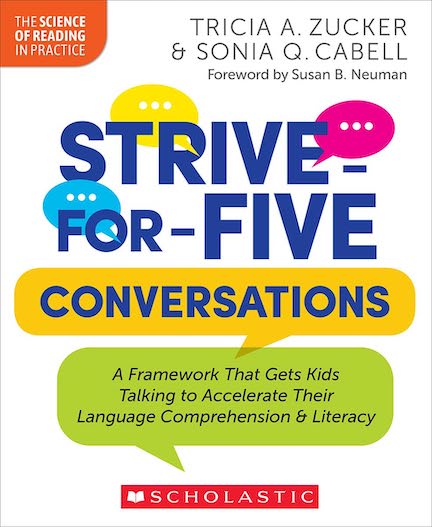
| |
|
KM 13775KM 13775 Superflex Curriculum & Teacher Resources
Grade Lvl: KPIJ Author:
Length: 0 Copyright: 2024
Bring social, emotional, and academic learning to students in your classroom. Hear about the Social Detective, Superflex, and the cast of colorful characters we call UnthinkaBots and Thinkables. Students learn strategies to activate their Superflex powers, they may not even realize they’re improving their flexible thinking, self-awareness, executive functioning, and self-regulation! Kit contains the entire collection of Superflex Series products, including You Are a Social Detective! 2nd Edition storybook, Teaching Curriculum & Support Guide, Superflex 2nd Edition Kit, Superflex Bingo, and more! IL K-8. |
Superflex Curriculum & Teacher Resources KPIJ
 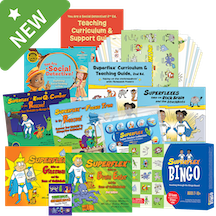
| |
|
B 97391B 97391 Sweller’s Cognitive Load Theory in Action
Grade Lvl: T Author: Lovell, Oliver
Length: 154 Copyright: 2020
What is it that enables students to learn from some classroom activities, yet leaves them totally confused by others? Although we can’t see directly into students’ minds, we do have Cognitive Load Theory, and this is the next best thing. Built on the foundation of all learning, the human memory system, Cognitive Load Theory details the exact actions that teachers can take to maximize student outcomes. Written under the guidance, and thoroughly reviewed by the originator of CLT, John Sweller, this practical guide summarises over 30 years of research in this field into clear and easily understandable terms. This book features both a thorough discussion of the core principles of CLT and a wide array of classroom-ready strategies to apply it to art, music, history, chemistry, PE, mathematics, computer science, economics, biology, and more. |
Sweller’s Cognitive Load Theory in Action T
 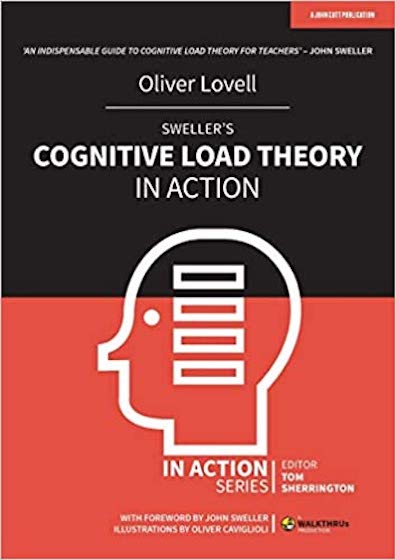
| |
|
B 97616B 97616 Take Control of the Noisy Class: Chaos to Calm in 15 Seconds
Grade Lvl: T Author: Plevin, Rob
Length: 263 Copyright: 2019
Subtitle: Super-effective Classroom Management Strategies for Teachers in Today's Toughest Classrooms. Explains a proven, step-by-step plan for successfully managing the most challenging individuals and groups in today’s toughest classrooms. Packed with powerful, fast-acting techniques, including a novel routine to get any class quiet in 15 seconds or less. This book aims to help teachers across all age groups connect and succeed with hard-to-reach, reluctant learners.
|
Take Control of the Noisy Class: Chaos to Calm in 15 Seconds T
 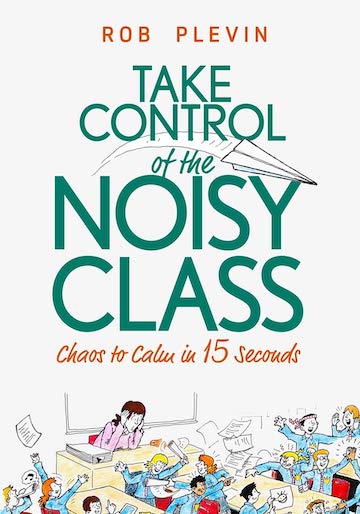
| |
|
B 97005B 97005 Taking Action: Implementing Effective Mathematics Teaching Practices in Grades 6-8
Grade Lvl: T Author: Raith, Mary Lynn / Smith, Margaret
Length: 233 Copyright: 2017
Offers a coherent set of professional learning experiences designed to foster teachers understanding of the effective mathematics teaching practices and their ability to apply those practices in their own classrooms. The book examines in depth what each teaching practice would look like in a middle school classroom, with narrative cases, classroom videos, and real student work, presenting a rich array of experiences that bring the practices to life. |
Taking Action: Implementing Effective Mathematics Teaching Practices in Gra T
 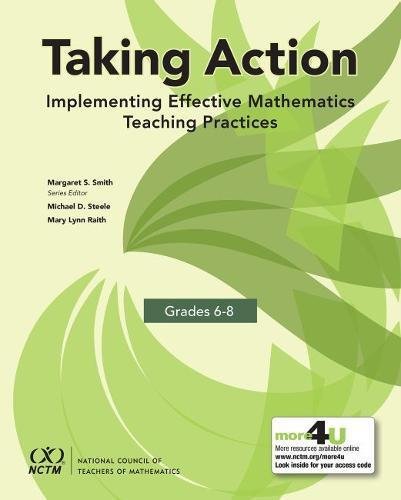
| |
|
B 97008B 97008 Taking Action: Implementing Effective Mathematics Teaching Practices in Grades 9-12
Grade Lvl: T Author: Boston, Melissa / Dillon, Fredrick
Length: 250 Copyright: 2017
Offers a coherent set of professional learning experiences designed to foster teachers' understanding of the effective mathematics teaching practices and their ability to apply those practices in their own classrooms. The book examines in depth what each teaching practice would look like in a high school classroom, with narrative cases, classroom videos, and real student work, presenting a rich array of experiences that bring the practices to life. |
Taking Action: Implementing Effective Mathematics Teaching Practices in Gra T
 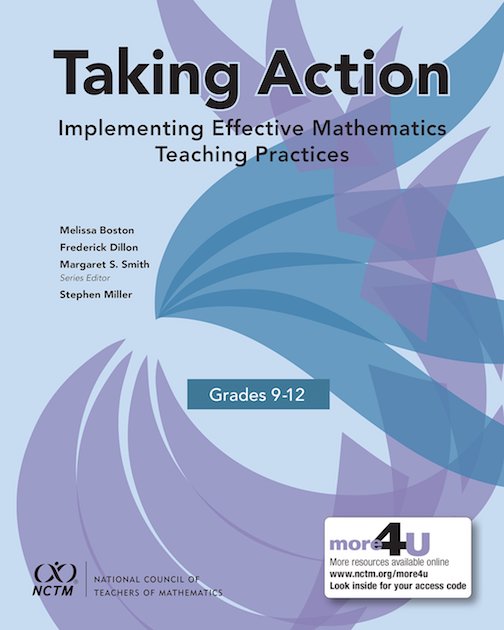
| |
|
B 97007B 97007 Taking Action: Implementing Effective Mathematics Teaching Practices in K-Grade 5
Grade Lvl: T Author: Huinker, DeAnn / Bill, Victoria
Length: 306 Copyright: 2017
Offers a coherent set of professional learning experiences designed to foster teachers’ understanding of the effective mathematics teaching practices and their ability to apply those practices in their own classrooms. The book examines in depth what each teaching practice would look like in an elementary school classroom, with narrative cases, classroom videos, and real student work, presenting a rich array of experiences that bring the practices to life. |
Taking Action: Implementing Effective Mathematics Teaching Practices in K-G T
 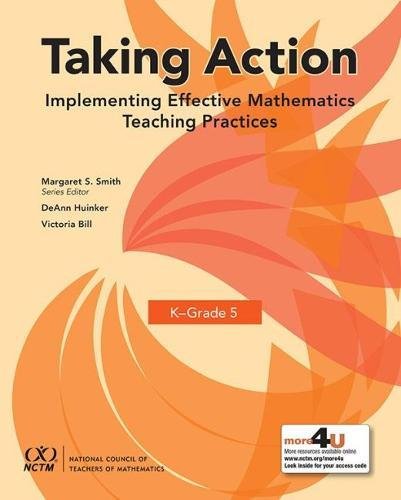
| |
|
B 97470B 97470 Teacher 50: Critical Questions for Inspiring Classroom Excellence
Grade Lvl: T Author: Kafele, Baruti K
Length: 100 Copyright: 2016
A guide for novice and veteran educators designed to reignite their passion for teaching. Questions and insights reveal how teachers can inspire students of all racial, ethnic, and socioeconomic backgrounds to strive for academic excellence; develop strong relationships with students, their parents, and the greater community; address the challenges and promises presented by millennial learners; and boost your motivation and excitement about teaching despite entrenched obstacles and daily frustrations. |
Teacher 50: Critical Questions for Inspiring Classroom Excellence T
 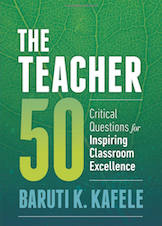
| |
|
B 97435B 97435 Teacher’s Guide to Flexible Grouping and Collaborative Learning: Form, Manage, Assess, and Differentiate in Groups
Grade Lvl: T Author: Brulles, Dina / Brown, Karen L
Length: 183 Copyright: 2018
Grouping learners purposefully throughout the school day based on their needs and the curriculum remains the single best way to differentiate instruction. This award-winning guide will help teachers expertly use flexible grouping and differentiation strategies to respond to students’ diverse learning needs, abilities, and interests. Included are methods for creating groups based on assessment data, planning group lessons and tiered assignments, engaging learners at all levels, supporting personalized learning, grading collaborative work, and communicating with parents about the benefits of groupwork and productive struggle. Digital content contains all forms from the book and a PDF presentation. A free online PLC/Book Study Guide is available at freespirit.com/PLC. |
Teacher’s Guide to Flexible Grouping and Collaborative Learning: Form, Mana T
 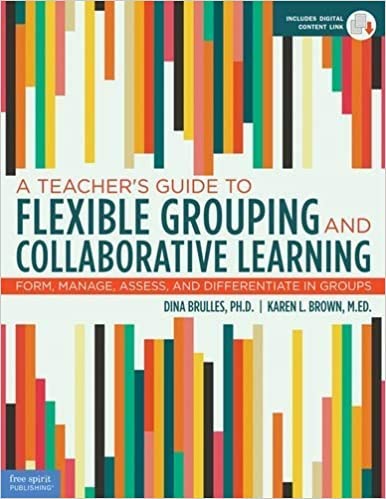
| |
|
B 96959B 96959 Teaching Literacy in the Visible Learning Classroom, Grades 6-12
Grade Lvl: T Author: Fisher, Douglas / Frey, Nancy
Length: 232 Copyright: 2017
Whether through direct instruction, guided instruction, peer-led and independent learning―every student deserves a great teacher, not by chance, but by design. In this companion to Visible Learning for Literacy, Fisher, Frey, and Hattie show you how to use learning intentions, success criteria, formative assessment and feedback to achieve profound instructional clarity. Chapter by chapter, this acclaimed author team helps put a range of learning strategies into practice, depending upon whether your 6–12 students are ready for surface, deep, or transfer levels of understanding. |
Teaching Literacy in the Visible Learning Classroom, Grades 6-12 T
 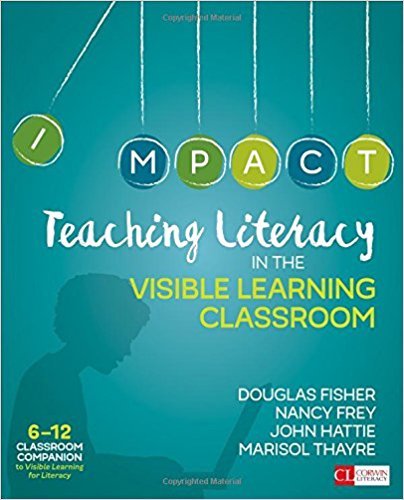
| |
|
B 96962B 96962 Teaching Literacy in the Visible Learning Classroom, Grades K-5
Grade Lvl: T Author: Fisher, Douglas / Frey, Nancy
Length: 272 Copyright: 2017
Whether through direct instruction, guided instruction, peer-led and independent learning―every student deserves a great teacher, not by chance, but by design. In this companion to Visible Learning for Literacy, Fisher, Frey, and Hattie show you how to use learning intentions, success criteria, formative assessment and feedback to achieve profound instructional clarity. Chapter by chapter, this acclaimed author team helps put a range of learning strategies into practice, depending upon whether your K–5 students are ready for surface, deep, or transfer levels of understanding. |
Teaching Literacy in the Visible Learning Classroom, Grades K-5 T
 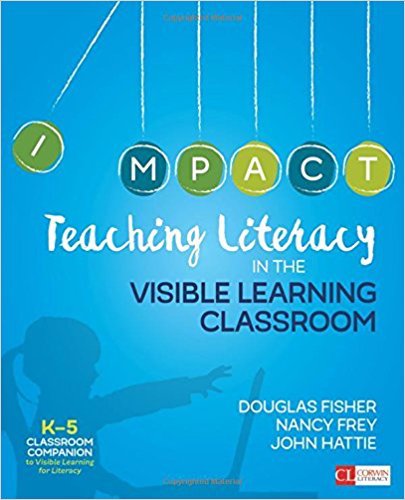
| |
|
B 97204B 97204 Teaching Mathematics in the Visible Learning Classroom, Grades 3-5
Grade Lvl: T Author: Almarode, John / Fisher, Douglas
Length: 260 Copyright: 2019
How do you generate that lightbulb "aha" moment of understanding for your students? This book helps to answer that question by showing Visible Learning strategies in action in high-impact mathematics classrooms. Walk in the shoes of teachers as they engage in the countless micro-decisions required to balance strategies, tasks, and assessments, demonstrating that it’s not only what works, but when. A decision-making matrix and grade-leveled examples help you leverage the most effective teaching practices at the most effective time to meet the surface, deep, and transfer learning needs of every student. Companion to professional book: B 96761. |
Teaching Mathematics in the Visible Learning Classroom, Grades 3-5 T
 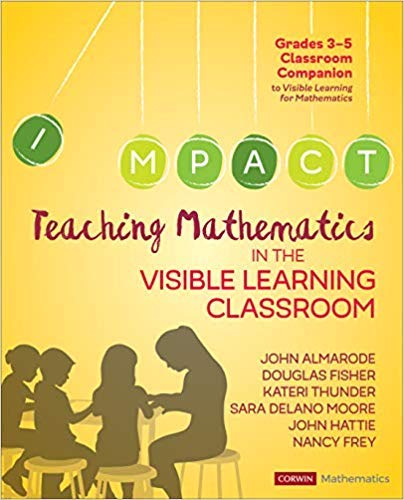
| |
|
B 97203B 97203 Teaching Mathematics in the Visible Learning Classroom, Grades K-2
Grade Lvl: T Author: Almarode, John / Fisher, Douglas
Length: 268 Copyright: 2019
How can you best help K–2 students to become assessment-capable visible learners in mathematics? This book answers that question by showing Visible Learning strategies in action in high-impact mathematics instruction. Walk in the shoes of K–2 teachers as they mix and match strategies, tasks, and assessments, demonstrating that it’s not only what works, but when. A decision-making matrix and grade-leveled examples help you leverage the most effective teaching practices at the most effective time to meet the surface, deep, and transfer learning needs of every young student. Companion to professional book: B 96761. |
Teaching Mathematics in the Visible Learning Classroom, Grades K-2 T
 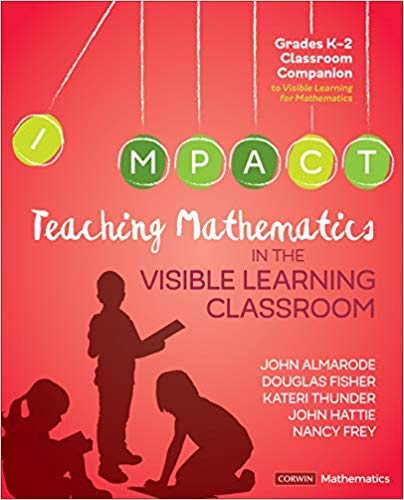
| |
|
B 96916B 96916 Teaching Student-Centered Mathematics: Grades Pre-K-2
Grade Lvl: T Author: Van de Walle, John A / Lovin, LouAnn H
Length: 496 Copyright: 2017
Third Edition subtitle: Developmentally Appropriate Instruction for Grades Pre-K - 2. Volume One from the Van de Walle Professional Mathematics Series offers practical guidance and proven strategies designed to help teachers of pre-kindergarten through second grade create student-centered mathematics units. Includes grade-appropriate activities. Part I: Establishing a Student-Centered Environment. Part II: Teaching Student-Centered Mathematics. Chapters cover developing early number concepts and number sense; operations; helping children master the basic facts; whole-number place-value concepts; whole-number computation; algebraic reasoning; early fraction concepts; measurement; geometry; data; and probability concepts. |
Teaching Student-Centered Mathematics: Grades Pre-K-2 T
 
| |
|
B 97393B 97393 Teaching WalkThrus 2: Five-Step Guides to Instructional Coaching
Grade Lvl: T Author: Sherrington, Tom
Length: 171 Copyright: 2021
In the groundbreaking and best-selling Teaching WalkThrus Volume 1, Tom Sherrington and Oliver Caviglioli produced a brilliantly concise and accessible repository to 50 essential teaching techniques. In this follow-up second volume, Tom and Oliver team up with 10 experienced educators to present 50 brand new WalkThrus, covering all the key areas of teaching: behaviour and relationships; curriculum planning; explaining and modelling; questioning and feedback; practice and retrieval; and Mode B teaching. Each technique is concisely explained and beautifully illustrated in five short steps, to make sense of complex ideas and support student learning. |
Teaching WalkThrus 2: Five-Step Guides to Instructional Coaching T
 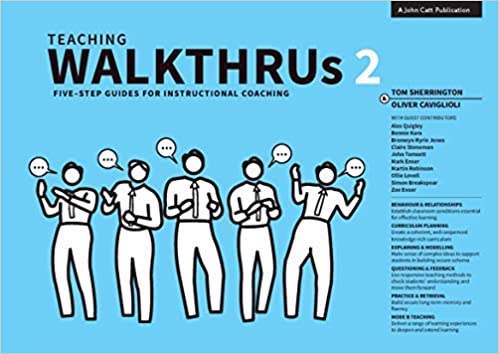
| |
|
B 97392B 97392 Teaching WalkThrus: Visual Step-by-Step Guides to Essential Teaching Techniques
Grade Lvl: T Author: Sherrington, Tom
Length: 166 Copyright: 2020
Tom Sherrington and Oliver Caviglioli team up to present 50 essential teaching techniques, each with five clear and concise illustrations and explanations. It forms a truly unique repository of key teaching methods, valuable to any classroom practitioner in any setting. The book covers important practical techniques in behavior and relationships; curriculum planning; explaining and modeling; questioning and feedback; practice and retrieval; and Mode B teaching. Each technique is simply explained and illustrated in five short steps, to make sense of complex ideas and support student learning. |
Teaching WalkThrus: Visual Step-by-Step Guides to Essential Teaching Techni T
 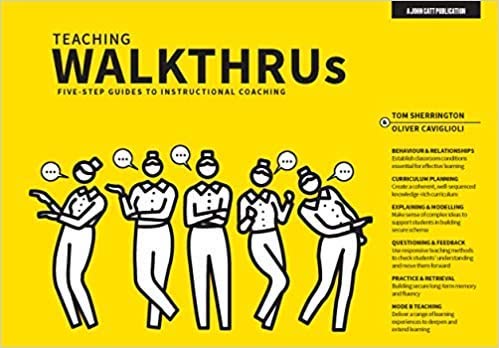
| |
|
B 97623B 97623 Text Structures From Picture Books
Grade Lvl: T Author: Briseno, Stephen / Briseno, Kayla
Length: 318 Copyright: 2024
Subtitle: Lessons to Ease Students Into Text Analysis, Reading Response, and Writing With Craft. Teach students the architecture beneath a successful story and boost their reading comprehension and writing skills for a lifetime. Using the bite-size format of picture books as a starting point, the authors share 50 low-prep, quick-access lessons to help you teach students seven concrete ways to respond to text in any genre.
|
Text Structures From Picture Books T
 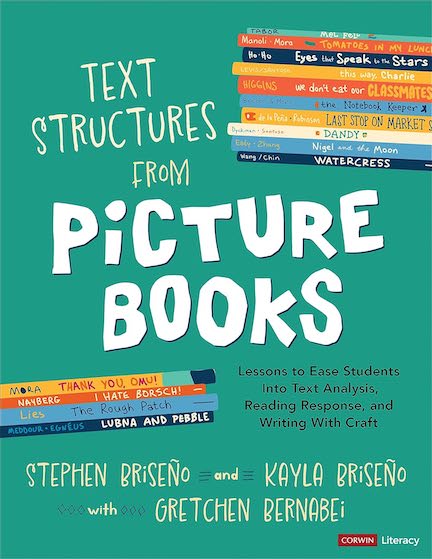
| |
|
B 96969B 96969 Tools for Classroom Instruction That Works
Grade Lvl: T Author: Silver, Harvey F / Abla, Cheryl
Length: 248 Copyright: 2018
This book provides more than 50 classroom-ready tools that make it easy to implement the nine categories of effective teaching strategies across grade levels and content areas. By incorporating these tools into your daily practice, you can turn your classroom into a place where high levels of engagement and deep learning happen every day. The challenge for teachers has always been how to build these achievement-boosting strategies into their everyday instruction: • Setting objectives and providing feedback • Reinforcing effort and providing recognition • Cooperative learning • Cues, questions, and advance organizers • Nonlinguistic representations • Summarizing and note taking • Assigning homework and providing practice • Identifying similarities and differences • Generating and testing hypotheses Each of the 50+ tools in the book includes a summary of that tool’s research-based benefits, the 3-7 basic steps for using the tool, concrete examples that model how to use the tool in classrooms, and a “Teacher Talk” section that gives tips on lesson planning and implementation. The final chapter in the book walks educators through a process for combining tools with principles of effective instructional design and knowledge of how student learning works to design focused, learning-driven, effective instructional plans. |
Tools for Classroom Instruction That Works T
 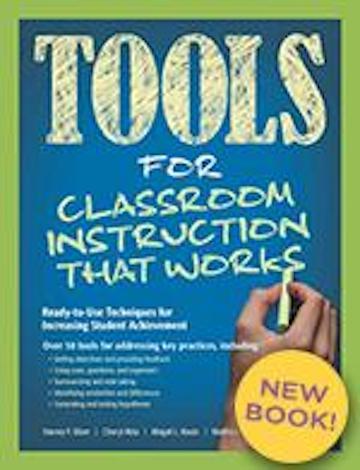
| |
|
B 97027B 97027 Transition Teaming: 26 Strategies for Interagency Collaboration
Grade Lvl: T Author: Noonan, Pattie
Length: 151 Copyright: 2014
Schools and community agencies must work together to provide transition services to secondary students with disabilities. Effective transition requires the resources and expertise of adult service agencies, community groups, employers, families, school transition specialists, teachers and other practitioners. This book provides a step-by-step process and concrete strategies by which secondary special educators can build collaborative relationships with service agencies and others in the community to provide transition services. 26 strategies are broken down into specific activities to bring the needed groups and individuals to the table and into transition teams, and communicate effectively to plan and deliver transition services that are collaborative, effective, and sustainable. |
Transition Teaming: 26 Strategies for Interagency Collaboration T
 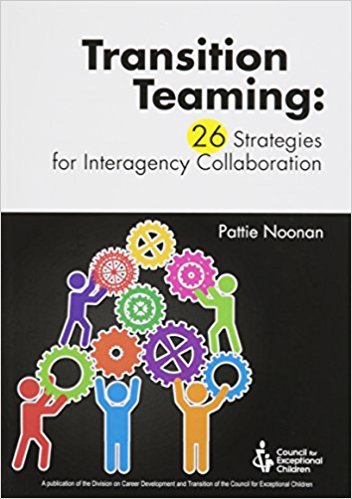
| |
|
B 97305B 97305 Uncovering Student Ideas About Engineering and Technology: 32 New Formative Assessment Probes
Grade Lvl: T Author: Keeley, Page / Sneider, Cary
Length: 211 Copyright: 2020
Brings teachers engaging questions, also known as formative assessment probes. The book’s 32 probes are designed to uncover what students know or think they know about what technology and engineering are, how to define related problems, and how to design and test solutions. The probes will help teachers uncover students’ current thinking about everything from the purpose of technology to who can become an engineer to how an engineering design process works. |
Uncovering Student Ideas About Engineering and Technology: 32 New Formative T
 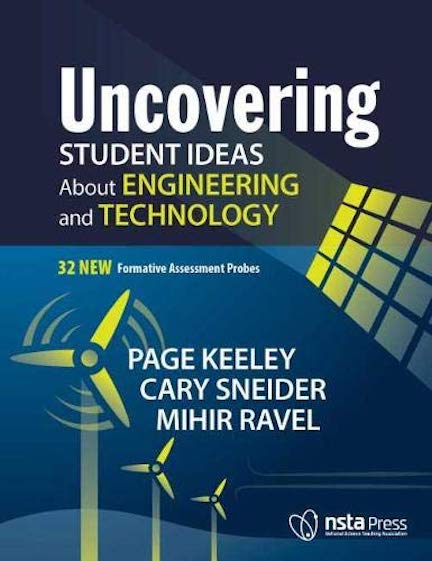
| |
|
B 97380B 97380 Understanding and Using Educational Theories Second Edition
Grade Lvl: T Author: Aubrey, Karl / Riley, Alison
Length: 293 Copyright: 2019
This textbook gives readers a clear overview of a selection of the most influential thinkers on education in the last hundred years, including established names (Vygotsky, Bruner, Dewey), more recent thinkers (Freire, hooks, Claxton) and other key names whose writing has helped shaped our views on teaching and learning. This second edition includes new chapters on Albert Bandura, Dylan Wiliam and Carol Dweck. Each chapter includes: Practical examples showing how theories can be used to inform classroom teaching Critiques of each theorist exploring opposing viewpoints and the strengths and weaknesses of different ideas Reflective tasks inviting you to apply what you′ve read to your own educational experiences |
Understanding and Using Educational Theories Second Edition T
 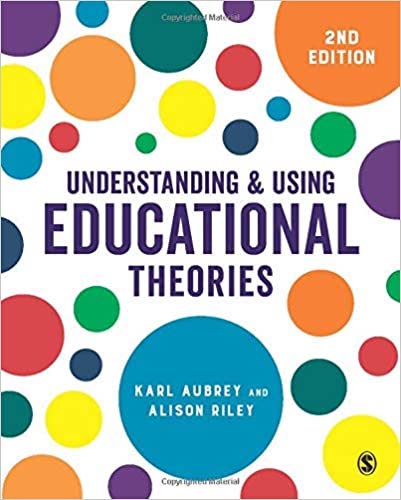
| |
|
B 97524B 97524 Universal Design Daily: 365 Ways to Teach, Support, & Challenge All Learners, 2nd Edition
Grade Lvl: T Author: Kluth, Paula
Length: 410 Copyright: 2020
The UDL guidelines are complex, but implementing universal design for learning should not be.
Understand & start using powerful UDL strategies today. Text affords 365 ideas in this easy-to-use guide. In these pages, readers will find classroom games, collaborative activities, engagement strategies, teaching and tech tips, and more. |
Universal Design Daily: 365 Ways to Teach, Support, & Challenge All Learner T
 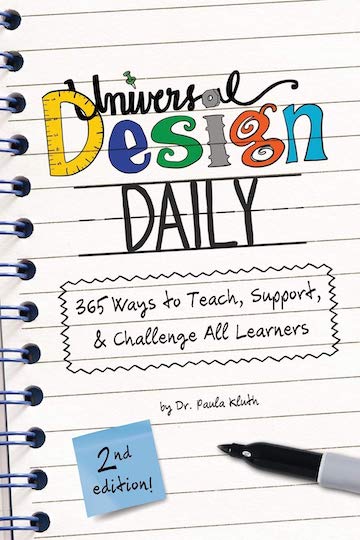
| |
|
B 97601B 97601 Universal Design for Learning in English Language Arts
Grade Lvl: T Author: Novak, Katie / Hinkle, Ryan
Length: 175 Copyright: 2024
Subtitle: Improving Literacy Instruction Through Inclusive Practices.
Offers educators an insightful, practical resource that shows how to integrate Universal Design for Learning in the ELA classroom to build rich, collaborative, engaging literacy environments. By focusing on the established domains of literacy, including reading, writing, speaking, listening, and language and vocabulary development, this book shows K-12 teachers how to engage students of diverse needs and backgrounds and explore the connections between social emotional learning, character education, and deeper understanding of literacy. |
Universal Design for Learning in English Language Arts T
 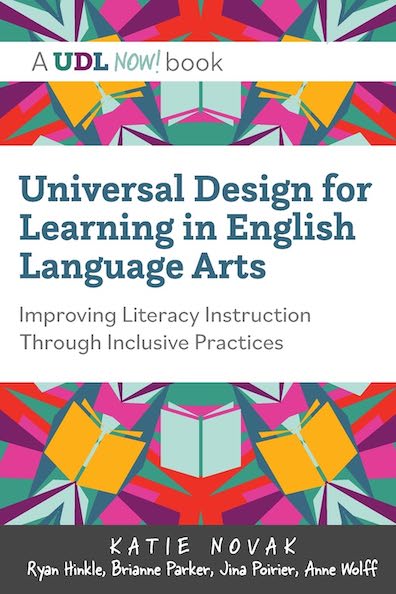
| |
|
B 97334B 97334 Virtual AI Summer Camp Kit: Teaching Materials
Grade Lvl: T Author: ReadyAl
Length: 69 Copyright: 2020
The Virtual AI Summer Camp Kit is a comprehensive kit to teach AI virtually designed for schools and organizations. In this camp, students will learn the hottest AI topics, including machine learning, path planning, representation and reasoning, and more. They will also learn to code in Calypso, an AI programming framework. By the end of the program, they will have coded their own project from start to finish. Built on years of experience running AI programs, we designed the package for educators of all experience levels! In the package, you will find everything you need to start your own virtual AI program, from detailed lesson plans to guides on how to set up your classroom. There are no hardware or software requirements for running this camp. The kit includes: Virtual-tested curriculum includes teacher guides, slides, and sample virtual class recordings and detailed tips on how to run your virtual classroom. Computer science. |
Virtual AI Summer Camp Kit: Teaching Materials T
 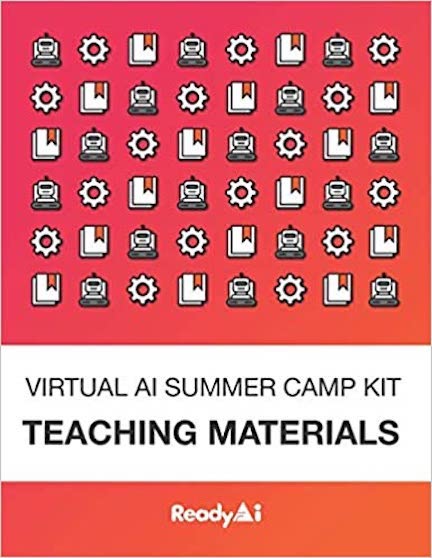
| |
|
KM 13192KM 13192 What to Do When (11 books)
Grade Lvl: KPIJ Author:
Length: 0 Copyright: 2019
Set of 11 books to support teaching and social emotional learning. Titles include: Outsmarting Worry: an Older Kid's Guide to Managing Anxiety (IL 3-7); 10 titles from the "What -To-do Guides for Kids series, dealing with overcoming bad habits and phobias; handling envy and jealousy; accepting imperfection; overcoming problems with sleep, anxiety, social anxiety, negativity, OCD, and problems with anger. This series is designed to empower kids to learn to cope with feelings, deal with anger, OCD, sleep problems and other life hurdles through cognitive-behavioral techniques supported by research. Each book includes an introduction for parents and caregivers that discusses the emotion and how the book can help. Paperback format. IL K-7. |
What to Do When (11 books) KPIJ
 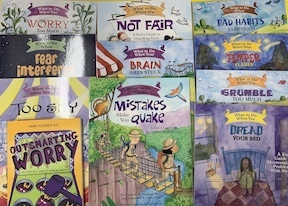
| |
|
B 97211B 97211 Word Study That Sticks Companion: Classroom-Ready Tools for Teachers and Students, Grades K-6
Grade Lvl: T Author: Koutrakos, Pamela A.
Length: 281 Copyright: 2020
A plethora tools and ready-to-go resources to help teachers put the inquiry-based structures, lessons, and routines she delivered in her first book, Word Study That Sticks, into action. Loaded with teacher-facing resources such as planning and assessment tools, and student-facing tools such as reproducible mini-charts, choice checklists, and self-assessments, The Word Study That Sticks Companion includes routines and materials that can be used within any word study curriculum. Companion to professional book: B 97176, Word Study That Sticks: Best Practices, K-6. |
Word Study That Sticks Companion: Classroom-Ready Tools for Teachers and St T
 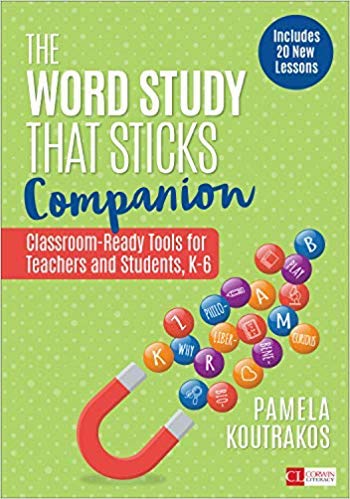
| |
|
B 97176B 97176 Word Study That Sticks: Best Practices, K-6
Grade Lvl: T Author: Koutrakos, Pamela A
Length: 263 Copyright: 2019
Hungry for lively and engaging ways to augment word study? This hands-on guide to word study instruction connects research with experience to make word learning fun. With the goal of instilling curiosity and a self-starting attitude in students, Word Study That Sticks delivers challenging, discovery-based instructional practices that support all learners in any subject area. Lesson ideas, routines, key practices, and special advice for beginning teachers make word study instruction accessible for educators working at every experience level. Professional book. |
Word Study That Sticks: Best Practices, K-6 T
 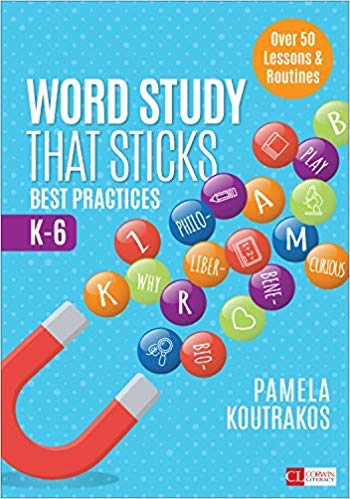
| |
|
B 97617B 97617 Writing Rope: A Framework for Explicit Writing Instruction in All Subjects
Grade Lvl: T Author: Sedita, Joan
Length: 226 Copyright: 2023
This book weaves multiple skills and strategies into five fundamentals of a comprehensive writing curriculum: critical thinking, syntax (sentences), text structure, writing craft, and transcription (spelling and handwriting). Teachers of Grades 4-8 will get crystal-clear guidelines that demystify the process of helping students learn to write and write to learn across academic content areas. And with dozens of included templates, handouts, and other resources—available for download online—teachers will have all the tools they need to design and deliver explicit, high-quality writing instruction. Composition. English language arts (ELA). Interdisciplinary approach. |
Writing Rope: A Framework for Explicit Writing Instruction in All Subjects T
 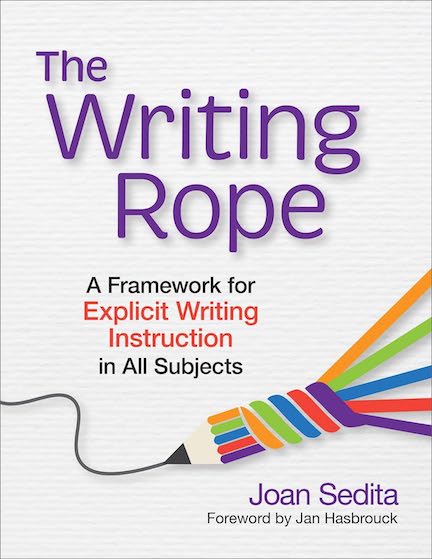
| |
|
B 97145B 97145 Writing Strategies Book: Your Everything Guide to Developing Skilled Writers
Grade Lvl: T Author: Serravallo, Jennifer
Length: 410 Copyright: 2017
300 of the most effective strategies to share with writers, and grouping them beneath 10 crucial goals. The text supports developing skilled writers by: •supporting and developing individual goals for every writer •give students step-by-step strategies for writing with skill and craft •coach writers using prompts aligned to a strategy •present mentor texts that support a genre and strategy •adjust instruction to meet individual needs with Jen's Teaching Tips •demonstrate and explain a writing move with her Lesson Language •learn more with Hat Tips to the work of influential teacher-authors. •suggestions for stocking your writing center, planning units of study, celebrating student writing, and keeping records. Whether you use Writing Workshop, 6+1 Traits, Daily 5's "Work on Writing," a scripted writing program, the writing exercises in your basal, or any other approach, you'll discover a treasure chest of ways to work with whole classes, small groups, or individual writers. Designed for the K-8 classroom. |
Writing Strategies Book: Your Everything Guide to Developing Skilled Writer T
 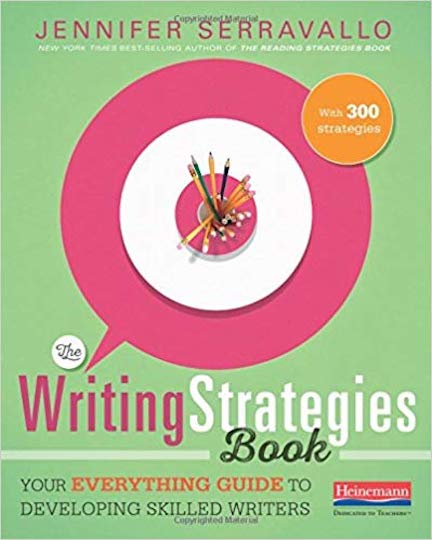
| |
|
B 96960B 96960 Writing Teacher's Companion: Embracing Choice, Voice, Purpose & Play
Grade Lvl: T Author: Fletcher, Ralph
Length: 176 Copyright: 2017
Provides a practical and illuminating guide to writing workshop for both new and veteran teachers that details the best ways to get started, the components that are vital, and what it takes to sustain a successful workshop across the school year. Fletcher, a wise and witty writing companion, shows us why encouraging choice, purpose, and play helps students find their voices and produce strong, effective writing. |
Writing Teacher's Companion: Embracing Choice, Voice, Purpose & Play T
 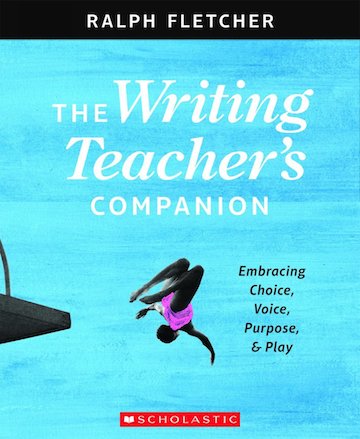
| |